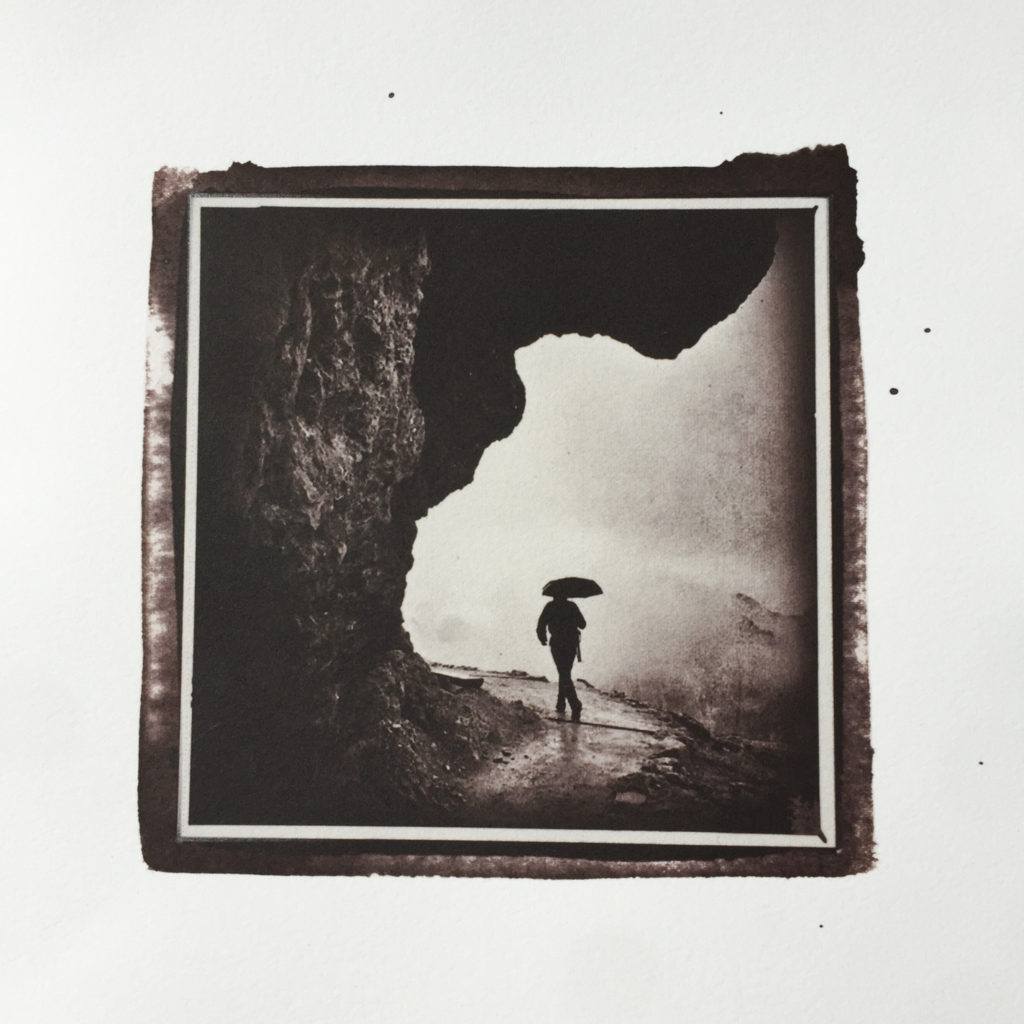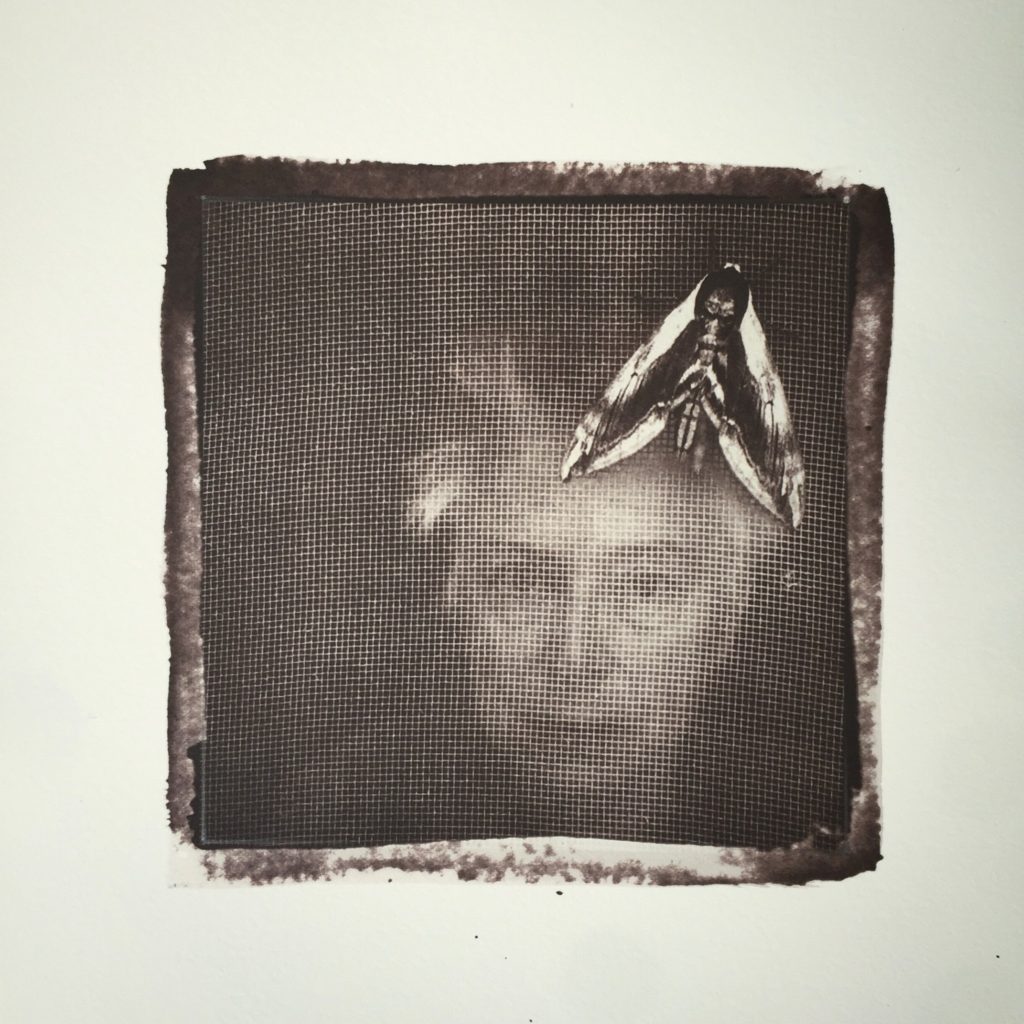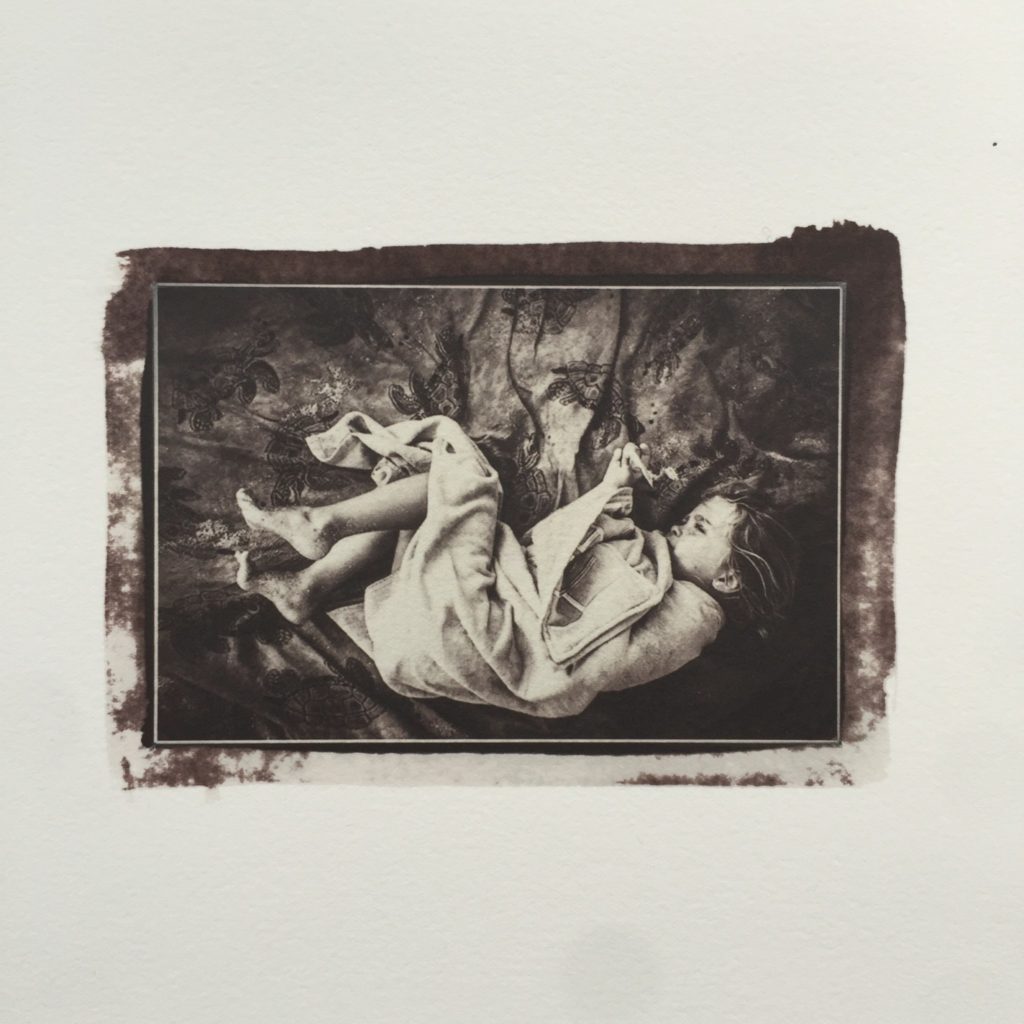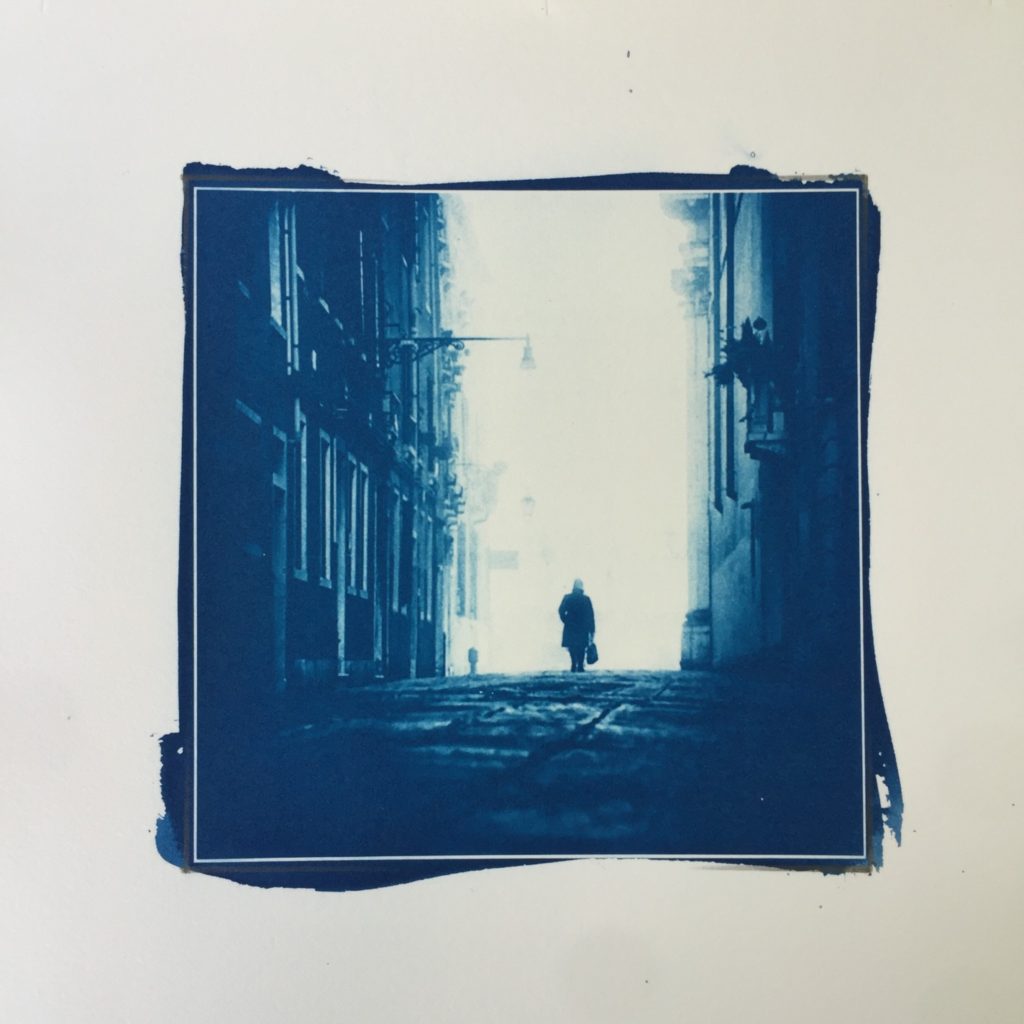
by Jeffrey Coolidge | Mar 14, 2017 | Jeffrey Coolidge, Stories, You Are Grryo
“Here Today Gone Tomorrow – The delicate balance of sand, water and life.”
I have been drawn to a thin spit of sand and scrub pine for the past 20 years. The landscape is shaped and re-shaped by storm after storm. Sand dunes, sculpted by the wind and sea, slowly shift, creating an ever-changing mural. The quality of light is otherworldly. Sand, water and weather are the key – high and low pressure fronts change so quickly light becomes ephemera.
The Cape Cod National Seashore comprises a majority of the landmass on the Outer Cape. It is shaped by vast stretches of dunes, bogs, ponds, forests and beaches – all accessible to anyone willing to hike in. The delicate balance of sand and water is a tug of war between the land and the sea. It is a powerful, yet fleetingly beautiful place.

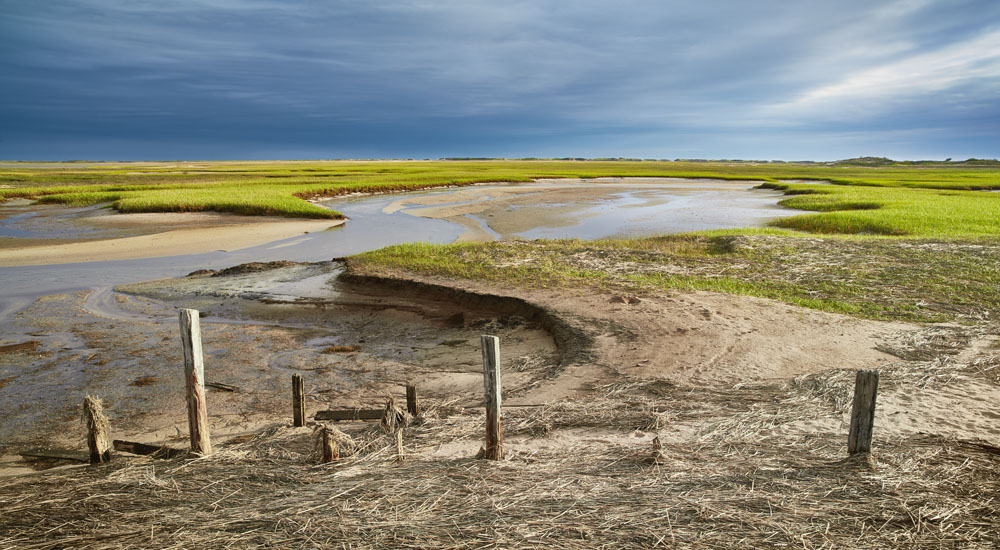
My wife, Ellie, is an impressionist painter. She is a student of the Cape Cod School of Art, established by Charles Webster Hawthorne in Provincetown, Massachusetts in 1898. We spend our time together in the dunes and beaches of Wellfleet, Truro and Provincetown. We hike in and find a spot. Ellie sets up her easel, spending hours on one painting. As she works, I wander, studying the landscape. This change of pace has taught me to slow down, be patient, have faith in my composition and wait for the light. More often than not, the storm clouds persist, the light stays flat and nondescript. But on occasion, one is given the gift of a moment, the clouds break and the landscape erupts in beauty.
I visit these haunts ritually, photographing and re-photographing the landscape. It is a form of meditation, a cathartic experience where the quality of the light transforms the familiar to the unreal.
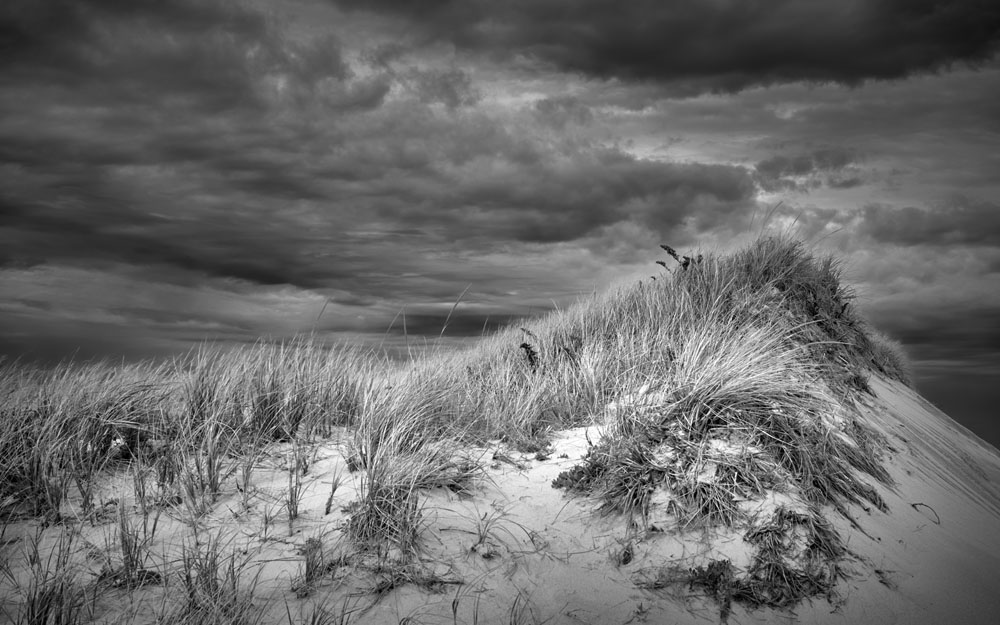
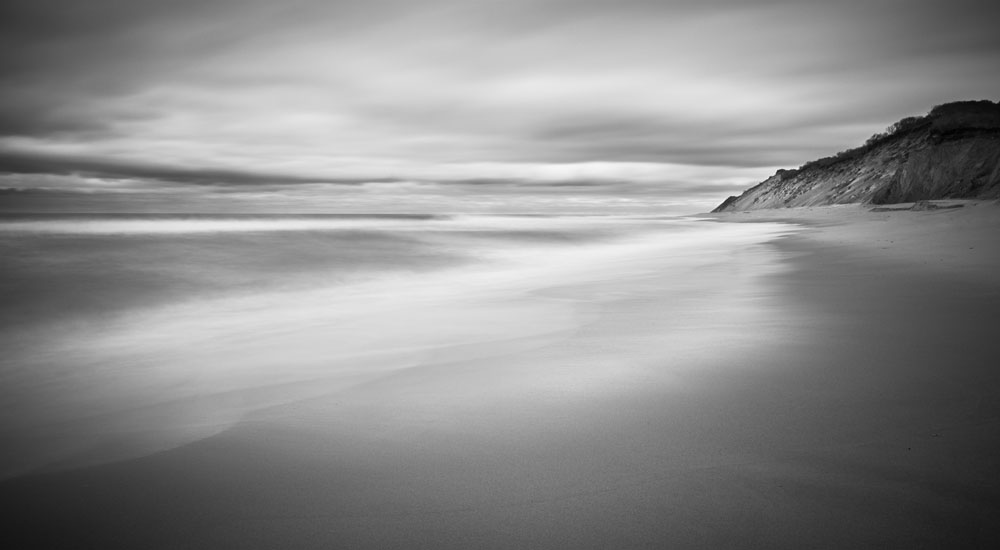
As vulnerable as this habitat is, it pushes back against human attempts to protect it. Snow fences, erected to slow the movement of sand and inevitable erosion, are buried and crushed by the constant flow of wind and water.
Concrete piers and stone breakwaters are eventually broken by the tides, washed out to sea or left upended, a relic from the past. These crumbled and submerged forms are a testament to the natural powers that ravage the land.
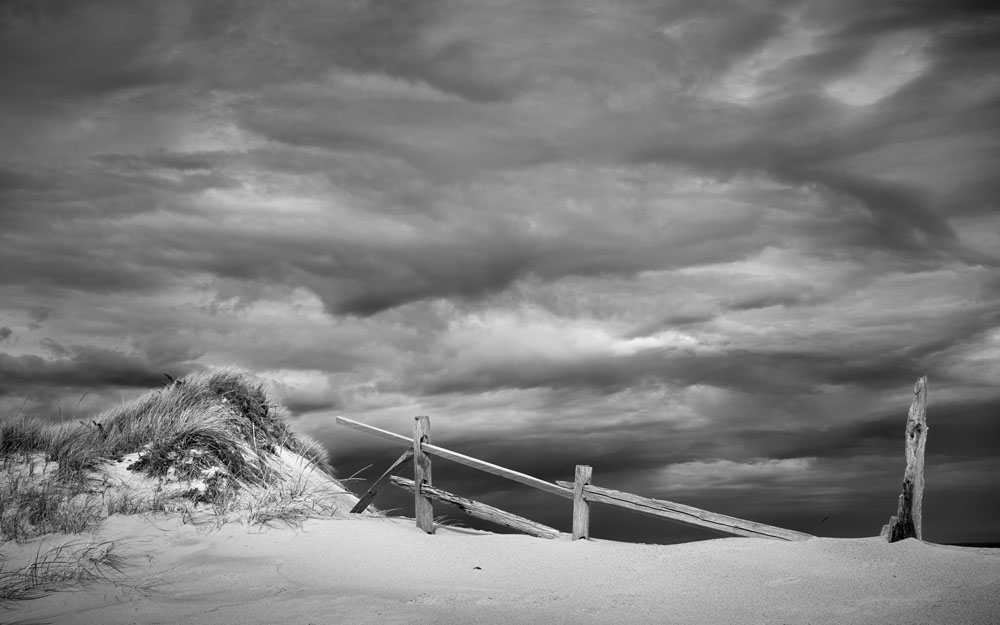
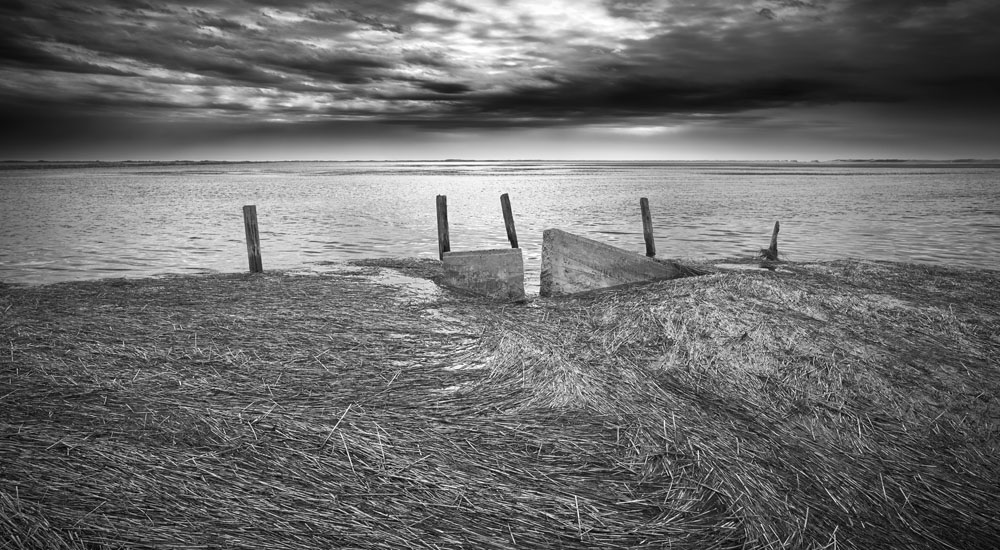
The forces of nature are hard in the dunes. Flora is stunted and twisted, a wonderful contrast against the windswept sand. Competition between species, the perpetual fight for patches of fertile soil, creates a visual pallet of color and form. Natural boundaries between salt water species and fresh water species forge delineated lines that crash into a swirling patchwork of hue and texture.
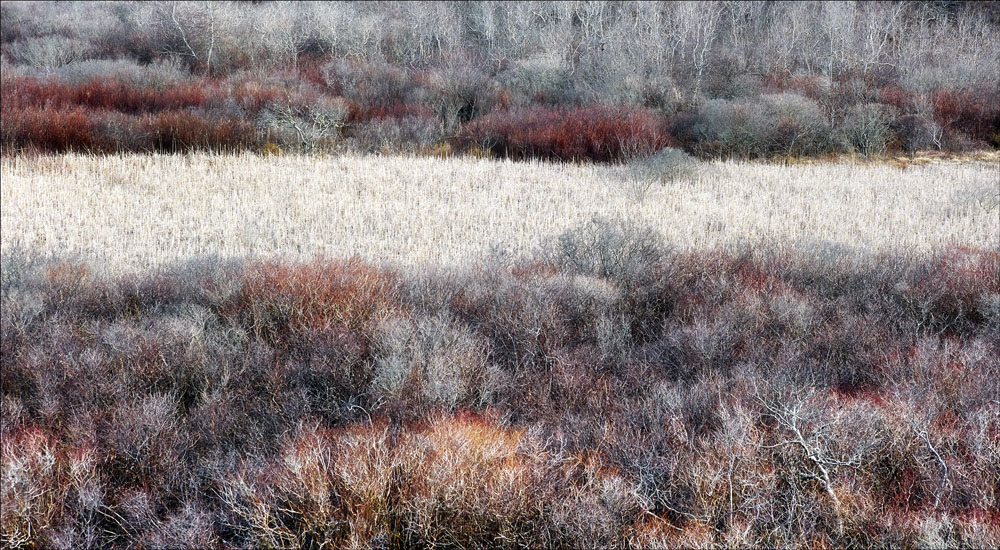

It comes down to water. Frozen water formed the Cape. Glaciers deposited their till, forming the landmass. Water grinds the rock to sand. And water will eventually reclaim this thin spit of land, sucking it back into a dark and hidden tomb. One could say, what the water gives the water will take.
But for today, it’s the water that charges the light, opens the shadows, pushes the weather and gives the gift of this mystical place.
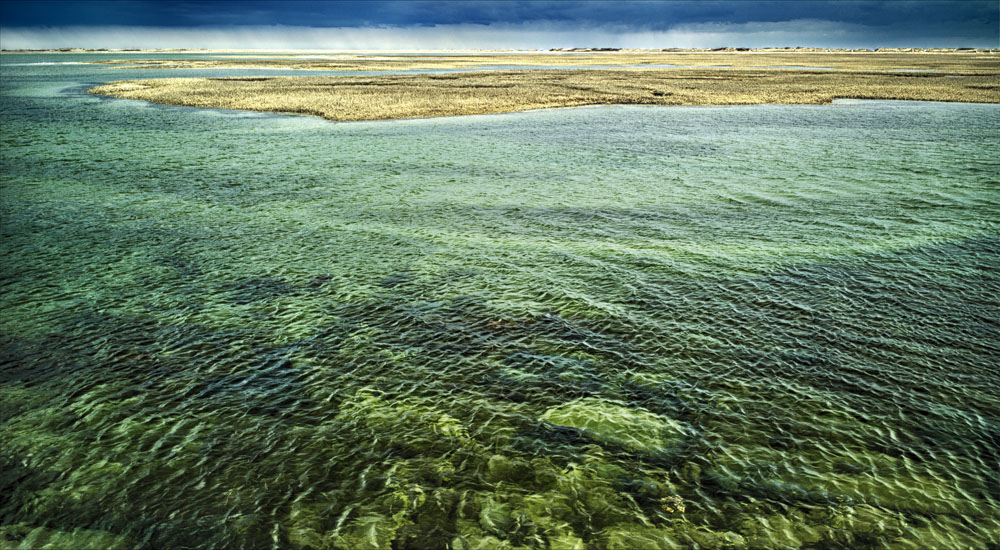
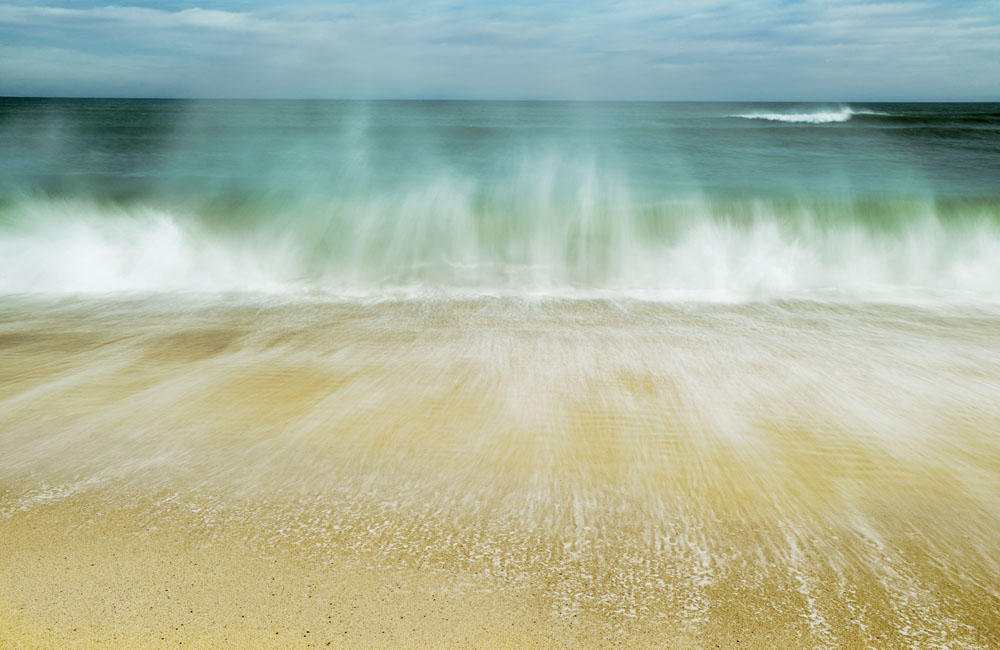
Thank you for taking the time to read and look at my photographs.
To see more of my photos, please visit me on: Instagram | Website.
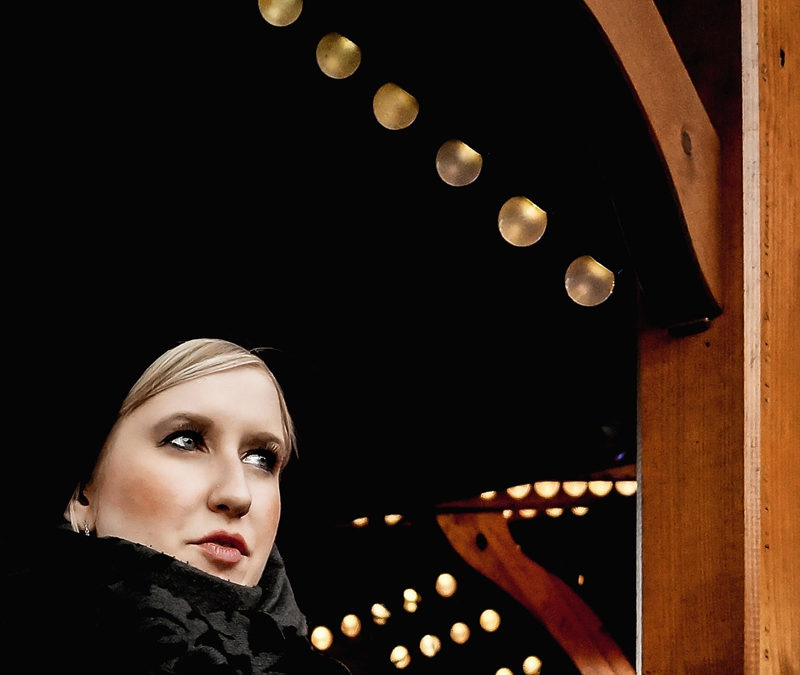
by George Pavlopoulos | Mar 7, 2017 | George Pavlopoulus, Stories, Storyteller, You Are Grryo
I grew up next to the sea and I felt that I had everything: an endless summer, the song of the cicadas, a bunch of faces that refused to grow old and the taste of watermelon under the pine trees. The sea resembled an uncultivated field, where childhood was constantly being reborn and rewarded. I don’t remember all the faces I met, but I do somehow recall sudden expressions and fleeting images: the talk of older people before sunset, the whispering lips of women, the sweating foreheads of busy men, the agony for the coming winter, as well as the promise that a triumphant summer will conquer our lives again.
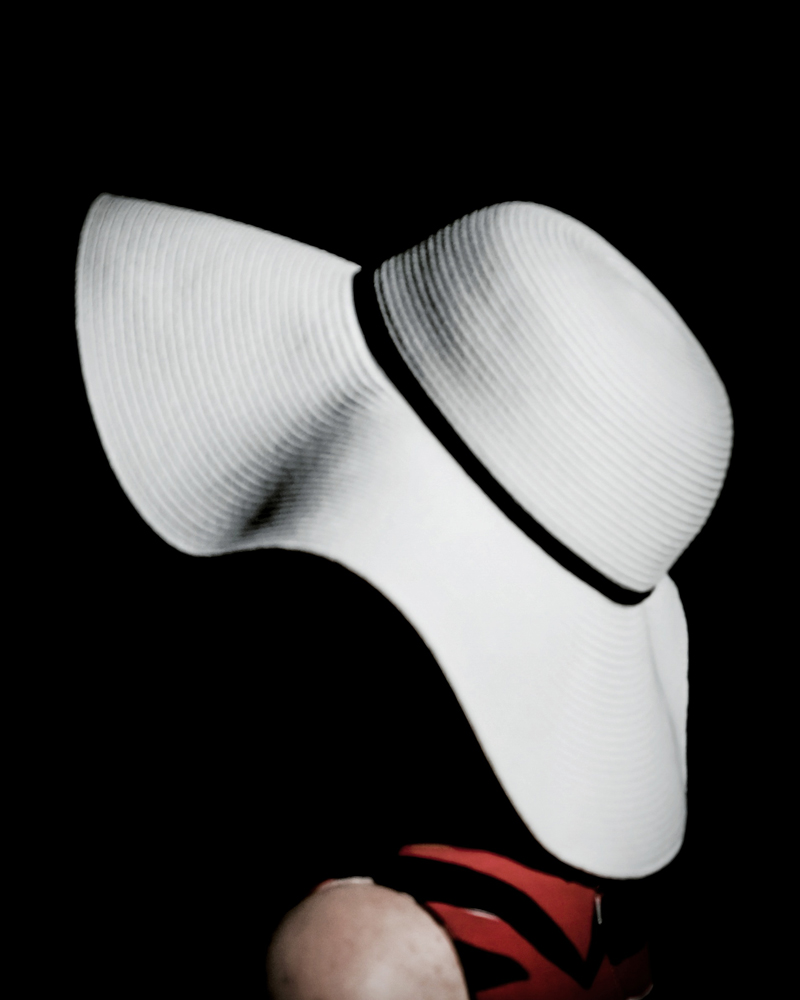
Then I lost the sea and the transition was violent. Entering the next phase of life kept me occupied but I could hardly somehow manage to return back to the early days. I wasn’t nostalgic or pessimistic; I was just longing for some sort of simplicity, a way of life based on spontaneity, on free will and on outspoken truths. Adulthood did not arrive as a blessing but as the fulfillment of a dreary prophecy. All the potential punishments of our childhood became our daily adult routine: “you’ll be left alone” or “you won’t get any money” or even “you are not allowed to go out”.
The legendary summers looked like shipwrecked boats; they couldn’t set sail because they were too damaged, nor could they reach the shore and start all over again clean. I equipped myself with artifacts, some long existing objects, humble in their existence, easy in their use. Technology has altered them but it didn’t taint their soul. They seemed to have been always there, on that remote planet, as a way of expression and their purpose was to create worlds that we’d probably never visit.
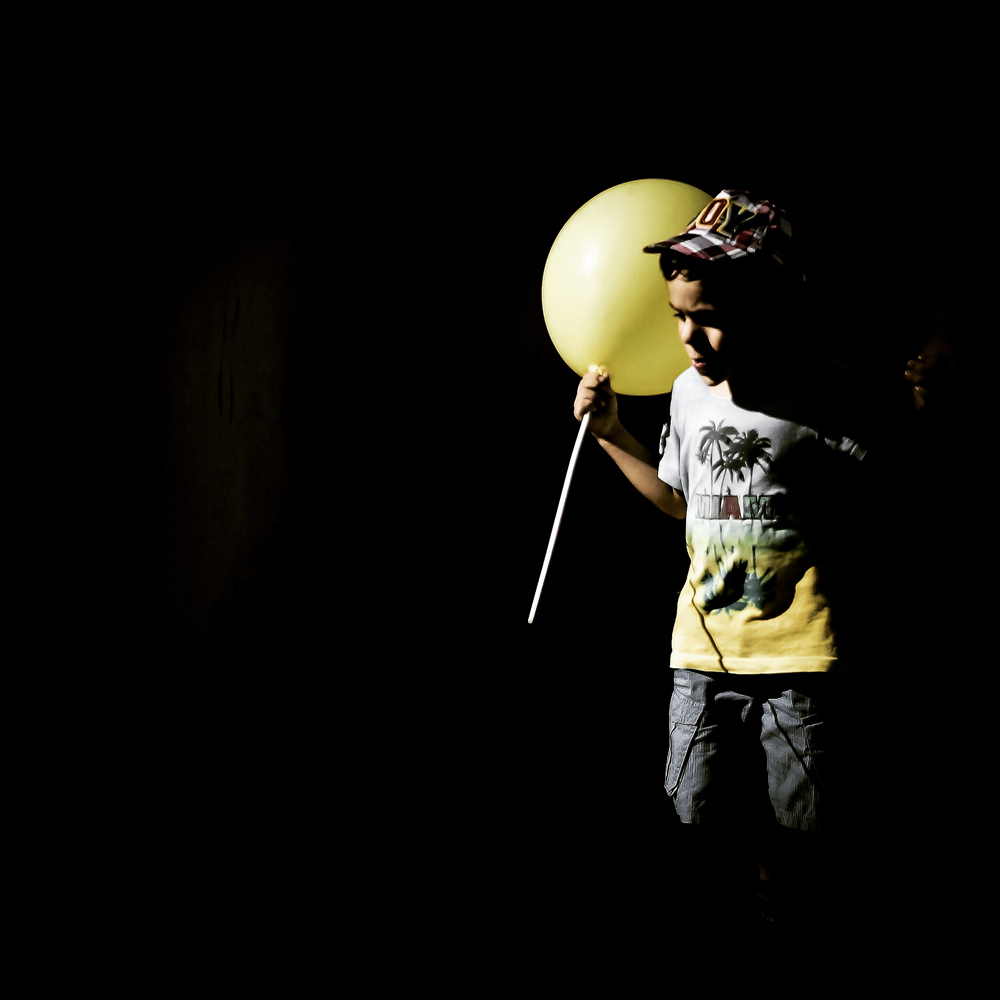
“Yellow Balloon”, Athens 2016

A family of sorts, Vilnius 2016
At first it was a pen and a paper, then a typewriter and later a laptop. Despite its technological evolution, the soul of the written word did not change and there will always be someone willing to lock his body -but not his spirit- into a silent room and start writing. Respectively, at first there was a smartphone, then a compact camera and later a bigger one. Contrary to the ancient belief, images do not consist of a thousand words; they consist of all the words we were not able to write.
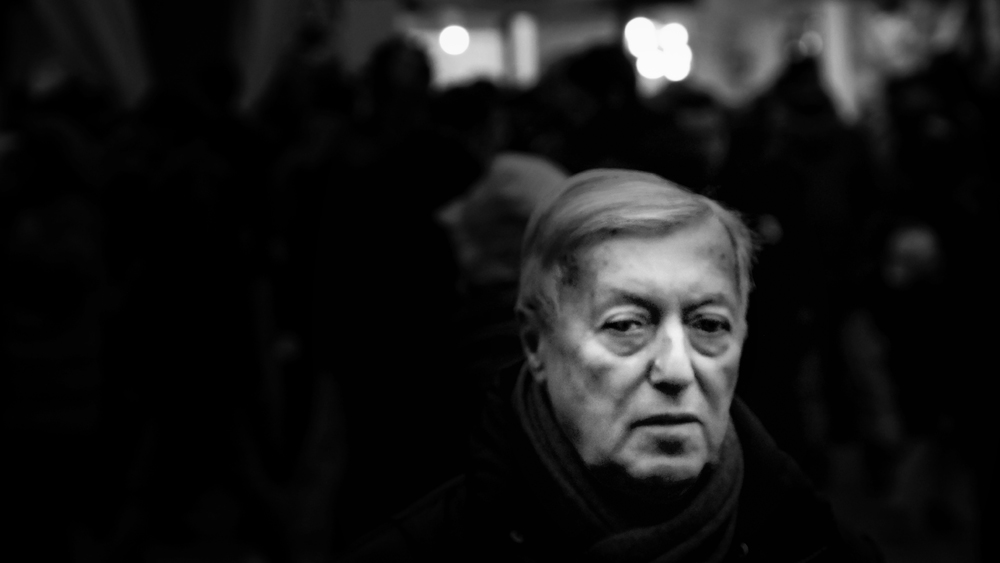
“Wrinkles and movies”, Bologna 2016
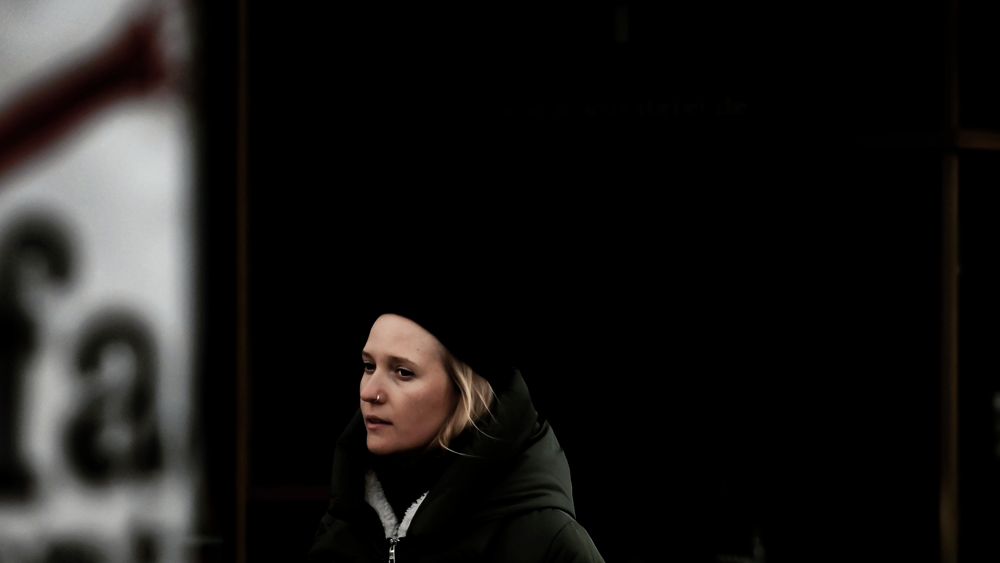
“Far Away”, Berlin 2017
I can never afford to lose people, but when I started dealing with absence it seemed to me that there was only one way back: the narrative. Through writing I felt I could re-visit, through photography I felt I could re-see. The return to childhood has nothing heroic in its heart and I could never identify with Proustian moments. It was simply that old longing for simplicity sending me to the white paper or the black film.
The white paper and the black film are always an interpretation of a narrative that fails to be resonated: words that fail to be written deliver always a white paper, while photos that fail to be taken deliver always a black image. The eternal battle of the two irreconcilable colors is not only a clash between light and darkness but also the inability of self-expression on a given day. If the creative adult is indeed a child who has survived, one can only imagine how painful a white paper or a black film really feels.
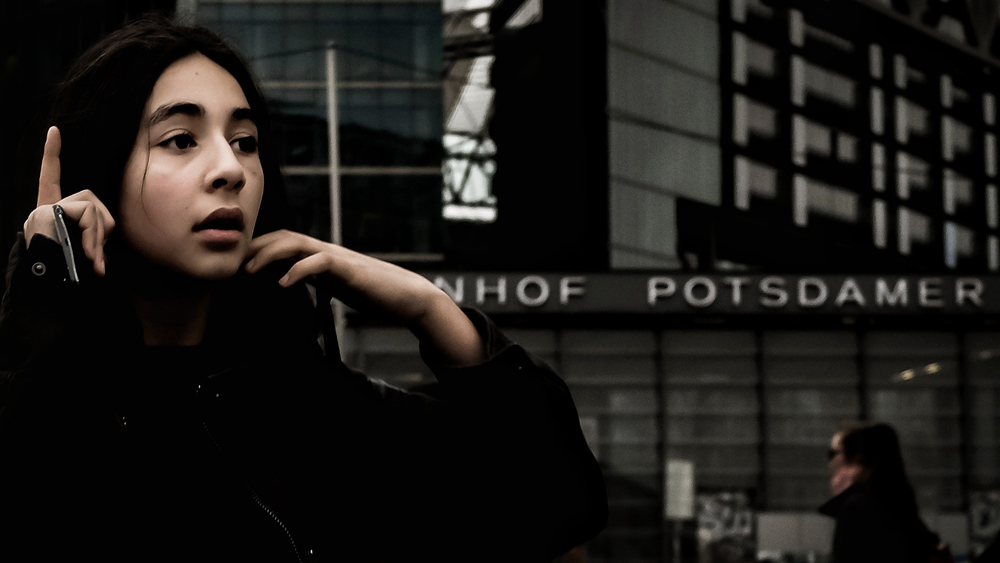
“No man’s land”, Berlin 2017
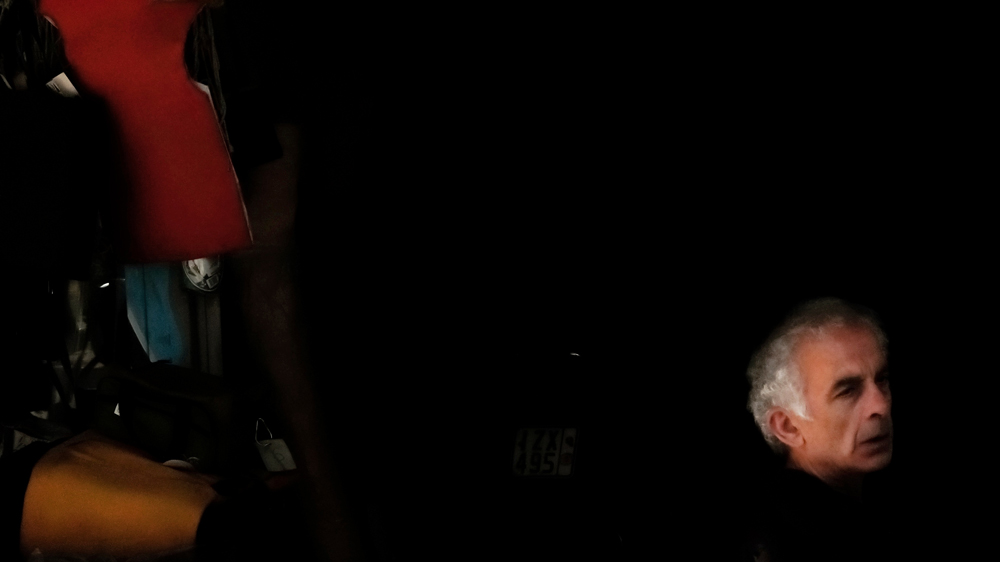
“The Letter”, Athens 2017
I can’t recall most of the faces of these old summers. They seem to be lost in a sea of oblivion and they are only allowed to emerge for an instant every now and then. Nowadays I spend less time in front of the sea and I am not that spontaneous anymore. I’m spending most of my days in big cities, where History adds an extra weight on the already long faces of the Europeans. Sunny days are good for the body, but only the cloudy ones make me feel really productive. I’d wake up rather early and I’d write until noon; then, I’d take my camera in hand and go out.
The city is crowded and I’m searching for dark corners, spots where the contrasts are magnified. I’m standing there for twenty, maybe thirty minutes. I’m waiting for a face to appear from the darkness, somebody that will remind me of the people I used to know: faces from past summers, lost loves, absent friends, people I rarely see. Some days no one appears, but I live for the day that a familiar face will emerge from the darkness. This is a re-connection of sorts, a short return to the simplicity of childhood: a person, an expression, a scene. The memory is finally serving its purpose, which is to remind us who we really are: we are nothing more than a patchwork of all the people we ever met. For a dense moment I feel like being in front of the sea on a warm summer afternoon. I am extremely young again, I am revolted against oblivion and I’m fishing in the abyss.
THE END
George Pavlopoulos is the author of three novels. He has also written several travelogues and short stories. You can see more of his work on his Website as well as on Instagram.
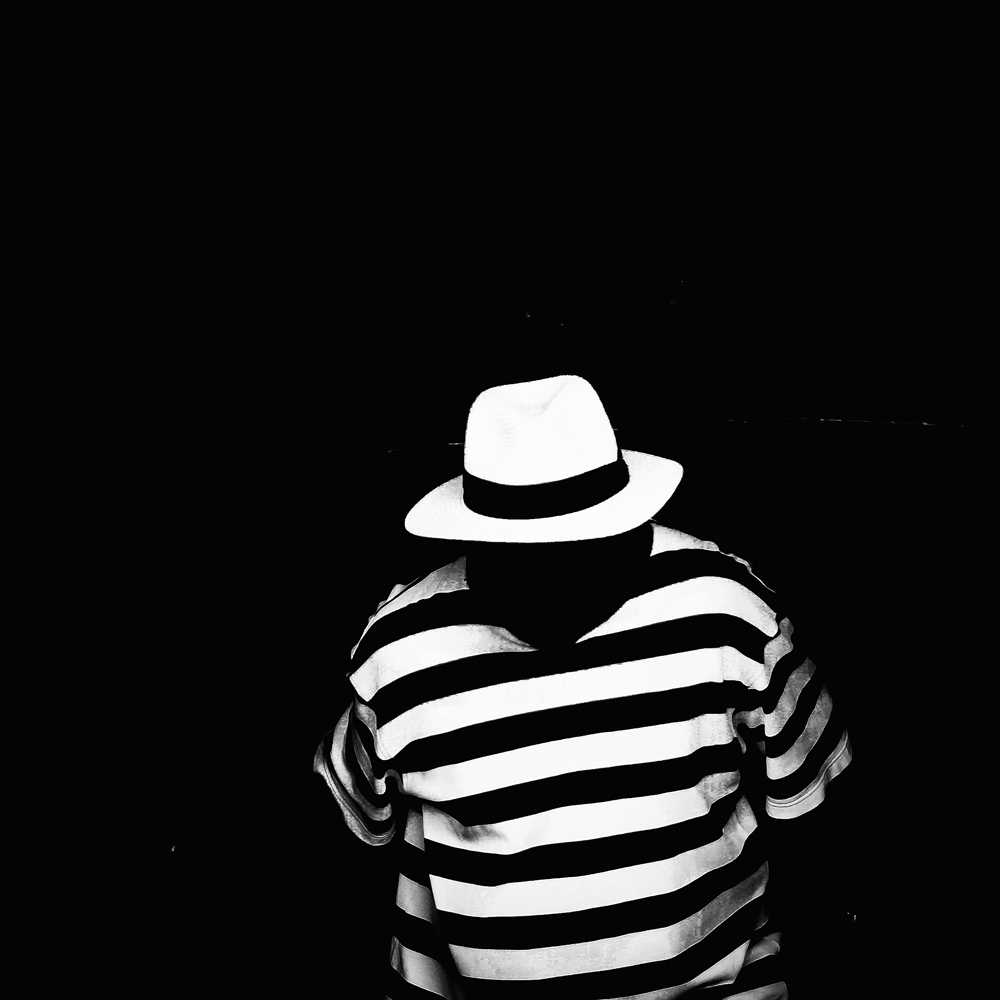
“Only the inventors survive”, Athens 2016

“The journey of sand”, Bologna 2016
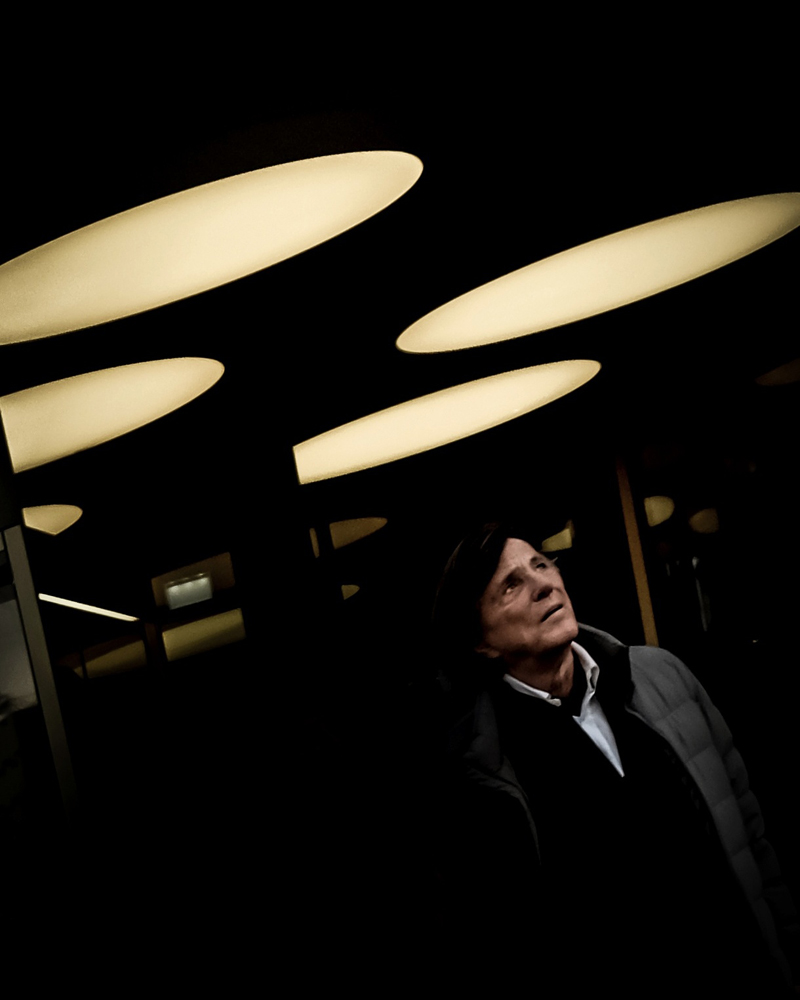
“The man who could not dream”, Berlin 2017
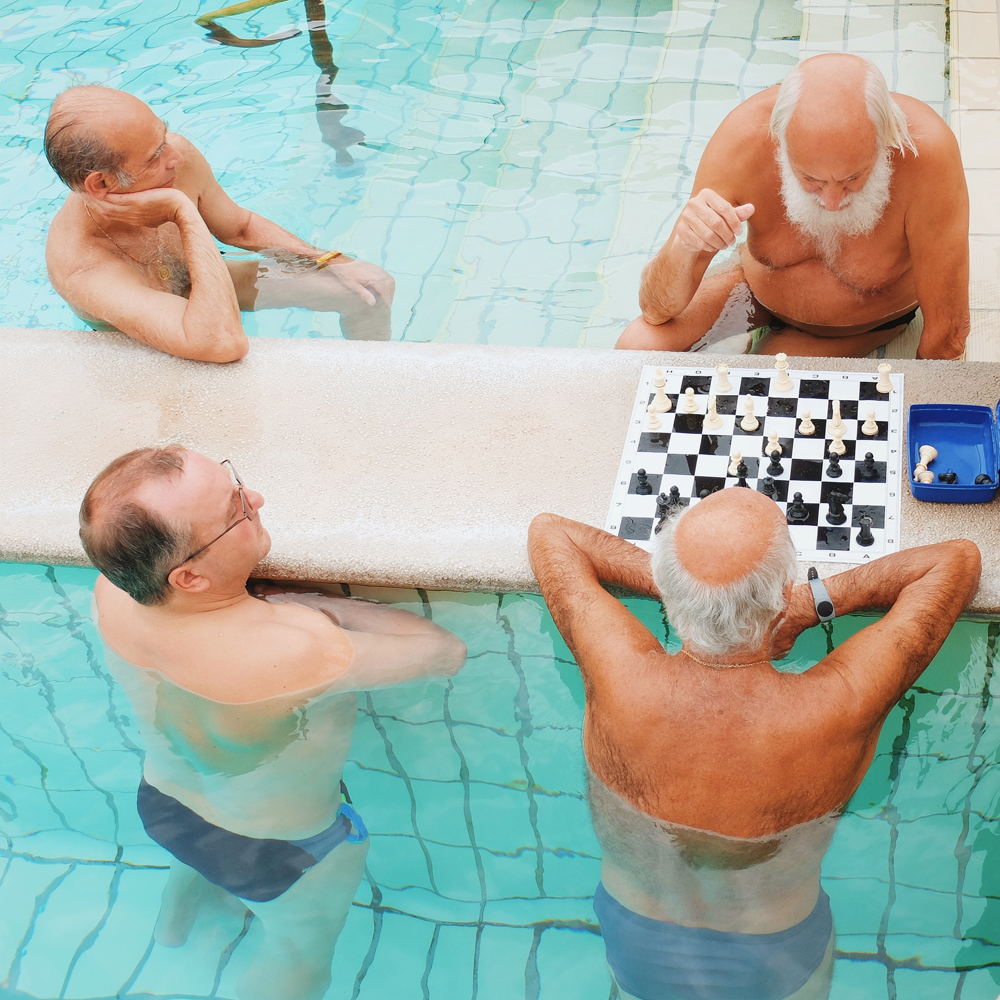
Kings in water, Budapest 2015
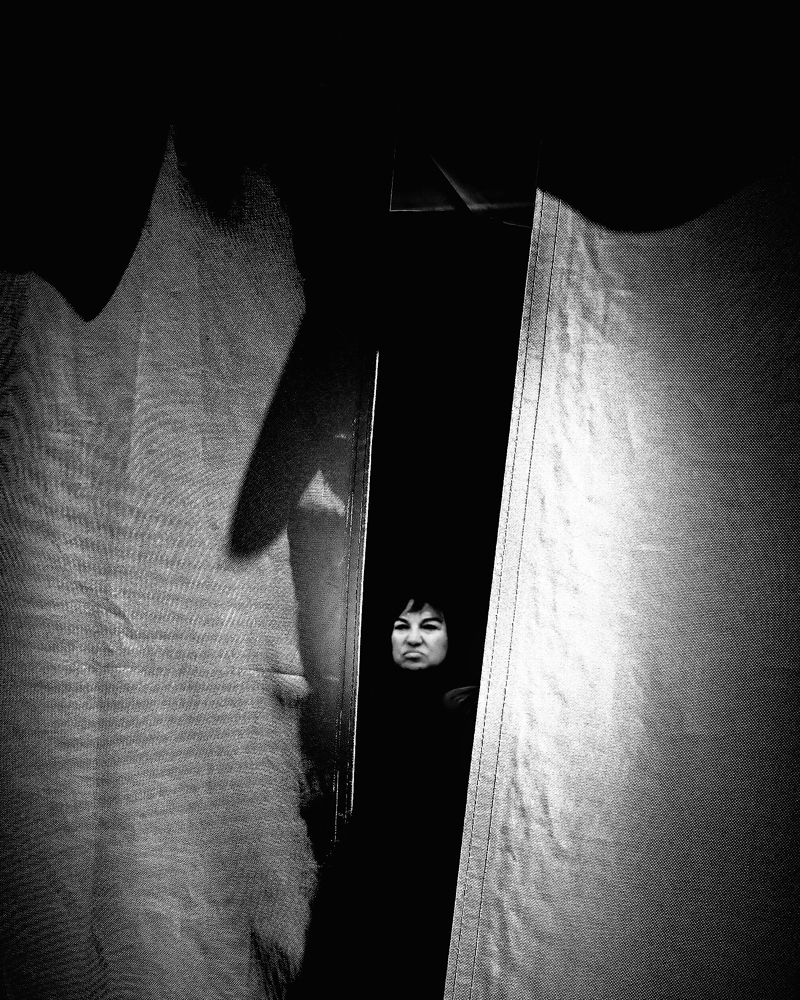
“Ghosts”, Athens 2016
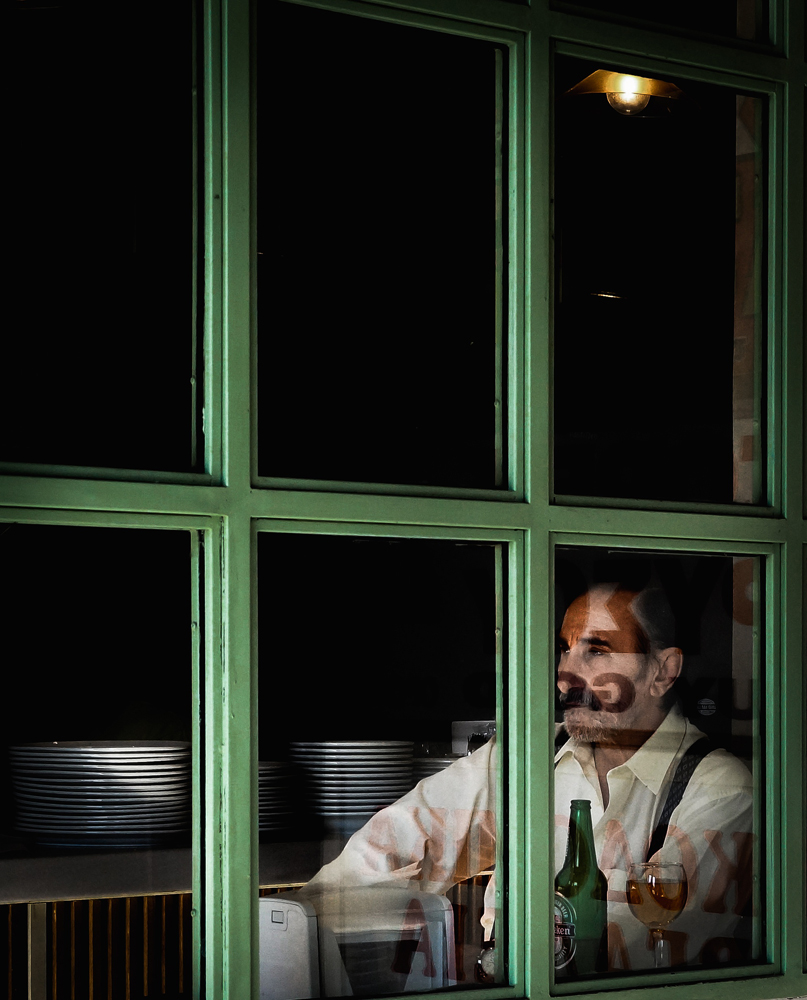
“Early summer”, Athens 2016

“Christmas”, Berlin 2016

Towards the future, Berlin 2017
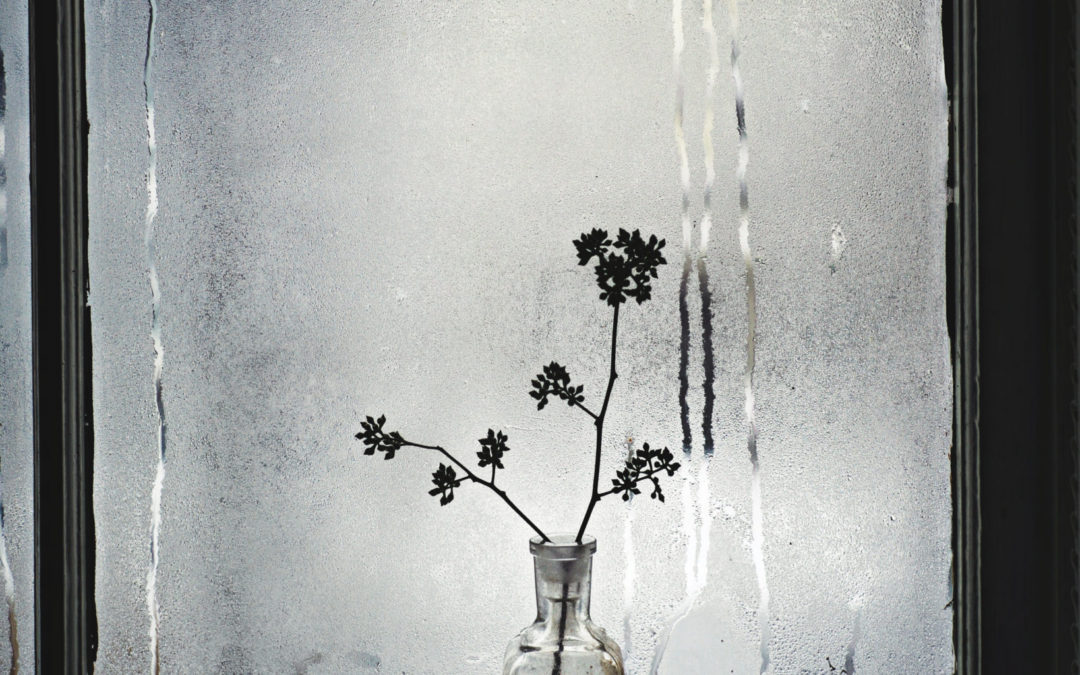
by Grryo Community | Feb 17, 2017 | Anne Closuit Eisenhart, Still Life, Stories, You Are Grryo
I remember, as a child, fumbling in the complete darkness of my bedroom. The clock having just struck my morning anxieties, and myself heading toward the window to summon the day into the room. Rolling up the night around the slats of the blind, the picture of the wakening day gradually unfolding before me. I usually paid little attention to it. A glimpse that made me feel both reassured that the world was still out there, and worried my school was too.

Some mornings had a different feel though. As soon as a glimmer of daylight crept into the dark, I already knew at its particular brightness that the day would hold different promises. It had snowed and perhaps it might keep snowing!

When I reminisce over the snow days of my childhood, I cannot single out or describe this or that particular day with its own distinct facts. Yet alive in me are a set of moments spreading from this time, grouped in my mind by a similar naïve joy, etched with such emotion that my memory has decided to gather them into one souvenir.

And I can see myself, pulling a chair by the window and watching the snow come down slowly over the wet plain, settling silently in the hollows, on the roofs, seizing the roads and the alleys, covering the ugliness brought on by the day. Then, having made everything even, everything level, it is forced to accept it must fall on itself. At this point, one’s attention is no longer drawn to anything and ceases to recognize. And now one can only see one’s own images projected on the white screen offered by the winter.

Or, I was outside. Snow had stopped and I was trying to identify parts of the scenery, my playground, my bicycle under a bump. And it was like attempting to read a book in a foreign language, familiar enough to follow the story line, yet not the details.
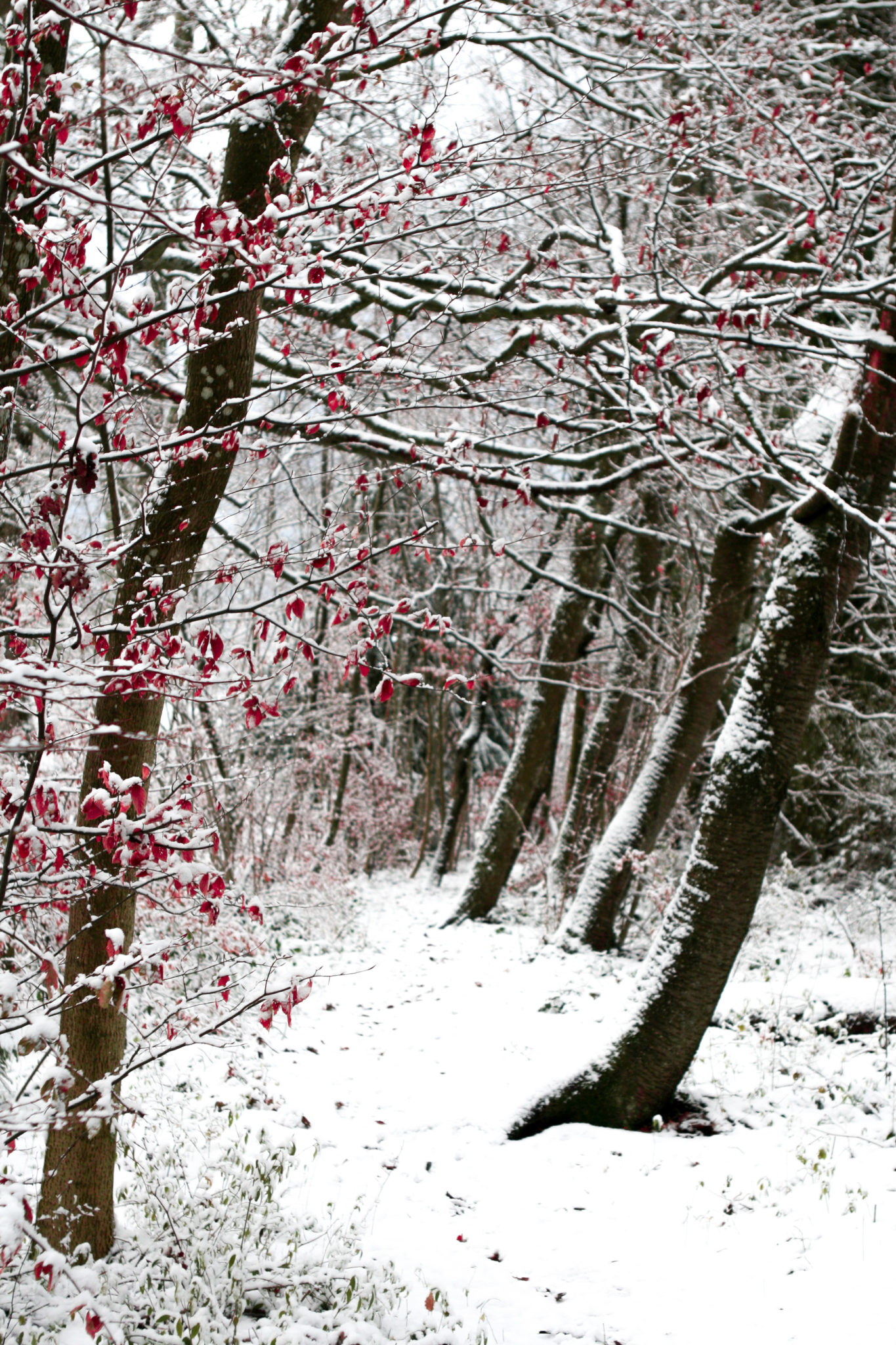
To this day, I prefer winter to any other season. Not only the snow, but the cold that enlivens or numbs. The fury of the wind when it blows the leaves off and gives them back to the earth, which later chews them and gobbles them up. I enjoy this harshness and this severity. People meet and get to the essential, because it is too cold to linger and tell more.

I enjoy the monotonous landscape. The nature when it depletes, gathers itself, and mourns. The ground that is brown then grey then white then dirty. The flight of the birds that is shorter and heavier. The way they suddenly flock into bands, ruffle the trees and the electrical cables. The ones that decide to remain lonely.

I enjoy watching the night as it awakens the day with the city lights turning on one by one like fireflies on a summer night. The shadows are longer, more present in the home. Our lives languish, it is a slower time, allowing us to look backward. As when walking in the snow, we have to stop and turn around in order to see our own tracks.

And last, I enjoy winter when it shies away, out of breath, and suddenly gives way to perpetual renewal, to the sweet illusion we call Spring.
Anne Closuit Eisenhart is @lesfifoles on Instagram
Ode à l’Hiver – Par Anne Closuit Eisenhart
Je me revois, enfant, avancer à tâtons dans le noir de ma chambre. Le réveil venait de sonner mes angoisses matinales et je me dirigeais vers la fenêtre pour convoquer l’aube dans la pièce. Tandis que j’enroulais la nuit autour des lamelles de mon store, se déroulait à mesure devant moi le tableau du jour qui s’éveillait. Je n’y prêtais d’habitude aucune attention particulière. Tout juste un regard qui me rassurait car le monde était toujours là, et qui m’inquiétait car mon école aussi.
Certains matins, il en allait différemment. A peine un rai de jour se glissait-il dans l’obscurité que je savais déjà, à l’éclat spécifique de la lumière, que la journée tiendrait d’autres promesses. Il avait neigé et peut-être neigeait-il encore…
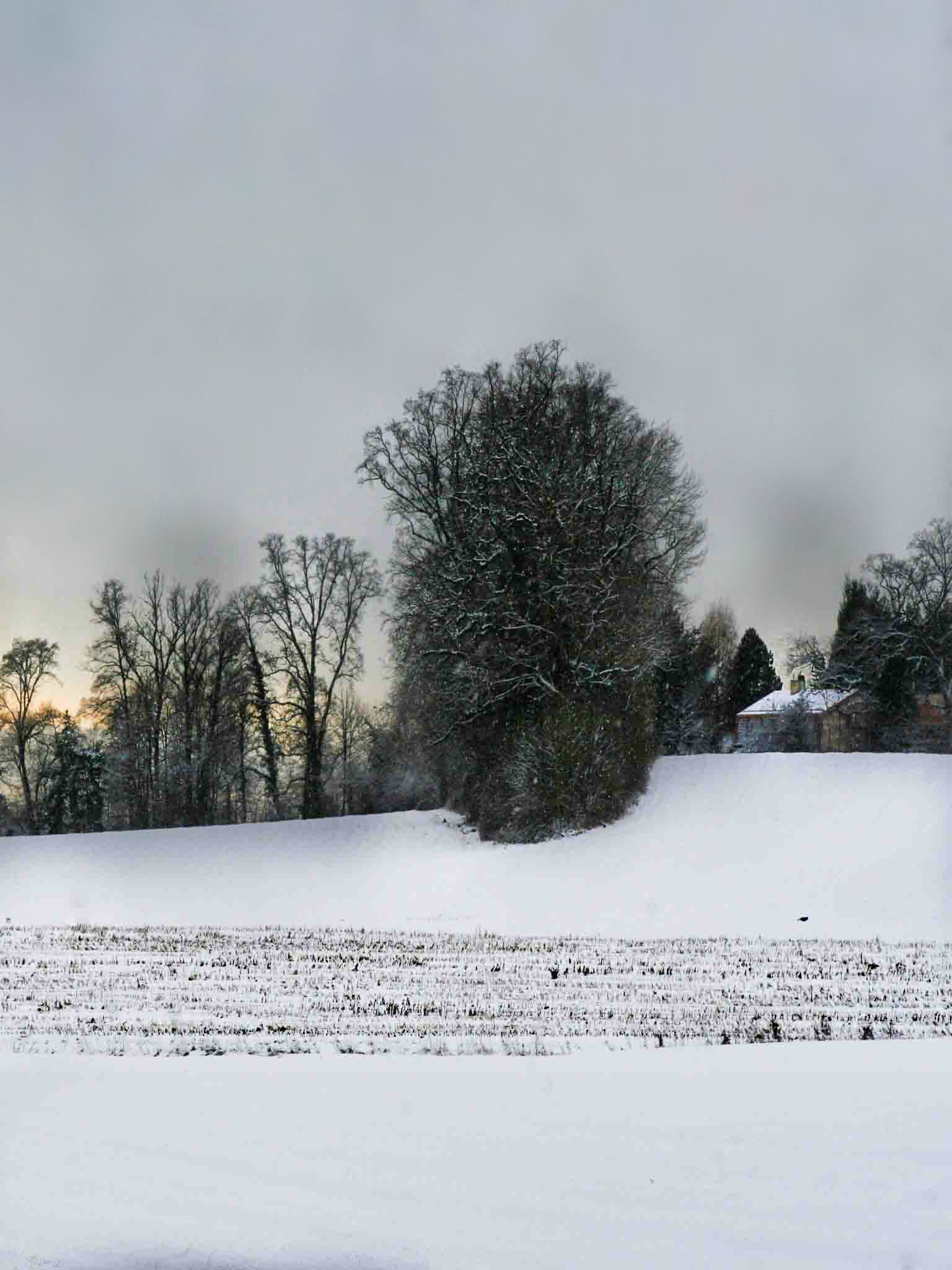
Quand je me remémore les jours de neige de mon enfance, je ne peux bien sûr pas décrire telle ou telle journée précise avec ses faits bien à elle. Mais continue de vivre pourtant en moi un ensemble de moments s’étalant dans ce temps, regroupés dans mon esprit par une même joie naïve, inscrits avec suffisamment d’émotion pour que ma mémoire décidât de les réunir en un souvenir.
Et je peux me voir, tirer la chaise près de la fenêtre et regarder la neige descendre lentement sur la plaine humide, s’installer, silencieuse, dans les creux, sur les toits, s’emparer des routes et des chemins, recouvrir la laideur amenée par le jour. Puis, quand elle a rendu tout égal, quand elle a tout nivelé, se résoudre à tomber sur elle-même. Alors le regard n’est plus arrêté par rien et cesse de reconnaître. Et l’on ne fait plus que voir ses propres images intérieures se projeter sur l’écran blanc que nous offre l’hiver.
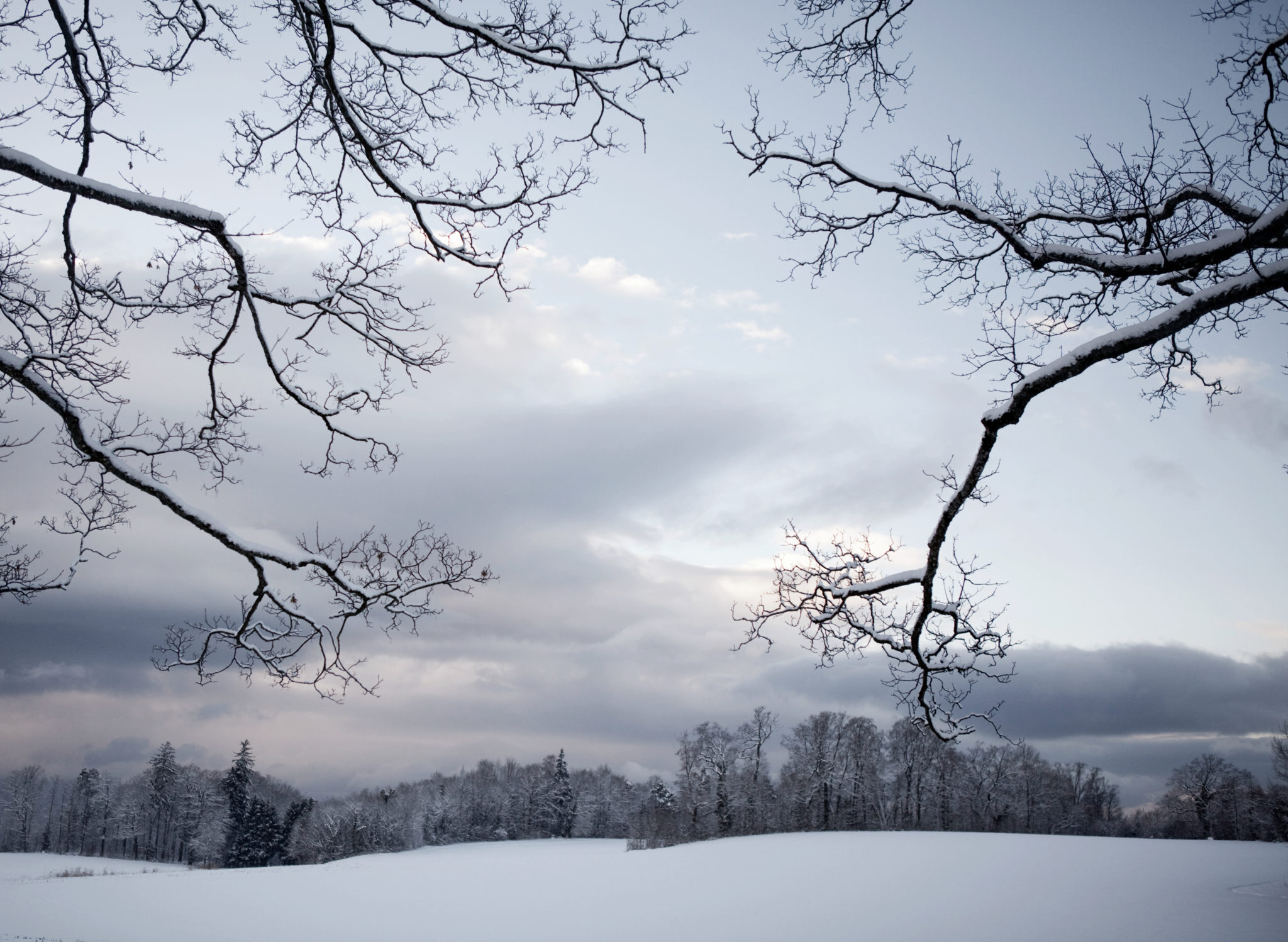
Ou encore, j’étais dehors, il avait cessé de neiger et j’essayais d’identifier le paysage, mon terrain de jeux, mon vélo sous une bosse. Et c’était comme tenter de lire un texte dans une langue étrangère suffisamment familière pour qu’on en comprenne la trame pas assez cependant pour qu’on en saisisse tous les détails.
Aujourd’hui encore, je préfère l’hiver à n’importe quelle autre saison. Pas seulement la neige, mais aussi le froid qui vivifie ou engourdit, la fureur du vent qui arrache les feuilles des arbres et les rend à la terre qui les mâche puis les engloutit. J’aime cette rudesse, cette âpreté. Les gens se croisent et se disent l’essentiel car il fait trop froid pour en rajouter.
J’aime le paysage monotone. La nature qui se dépouille et se recueille. La terre brune puis grise puis blanche puis sale. Le vol des oiseaux qui est plus lourd et plus court. Cette façon qu ‘ils ont soudainement de se mettre en bandes, d’hérisser les arbres, les fils électriques. Ceux qui décident de rester solitaires.
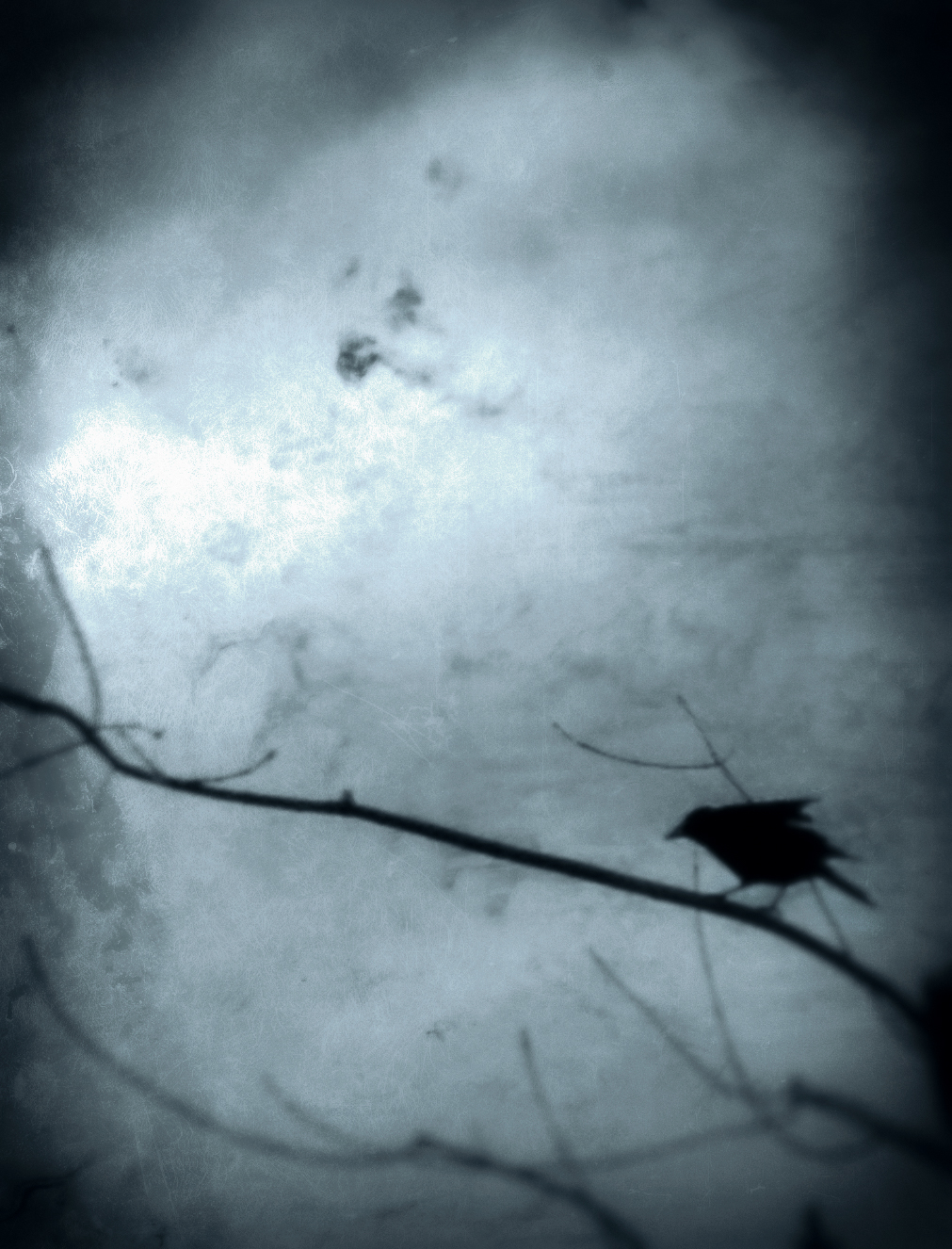
J’aime guetter la nuit quand elle réveille le jour, et regarder les lumières de la ville s’allumer une à une comme des lucioles un soir d’été. Les ombres sont plus longues, plus présentes dans la maison. Nos vies se traînent, c’est un temps plus lent, fait pour regarder en arrière.C’est comme quand l’on marche dans la neige, il faut s’arrêter et se retourner pour voir ses pas.
J’aime enfin l’hiver quand il se dérobe et, à bout de souffle, cède la place à l’éternel recommencement, à la douce illusion qu’est le printemps.
Anne Closuit Eisenhart est @lesfifoles sur Instagram
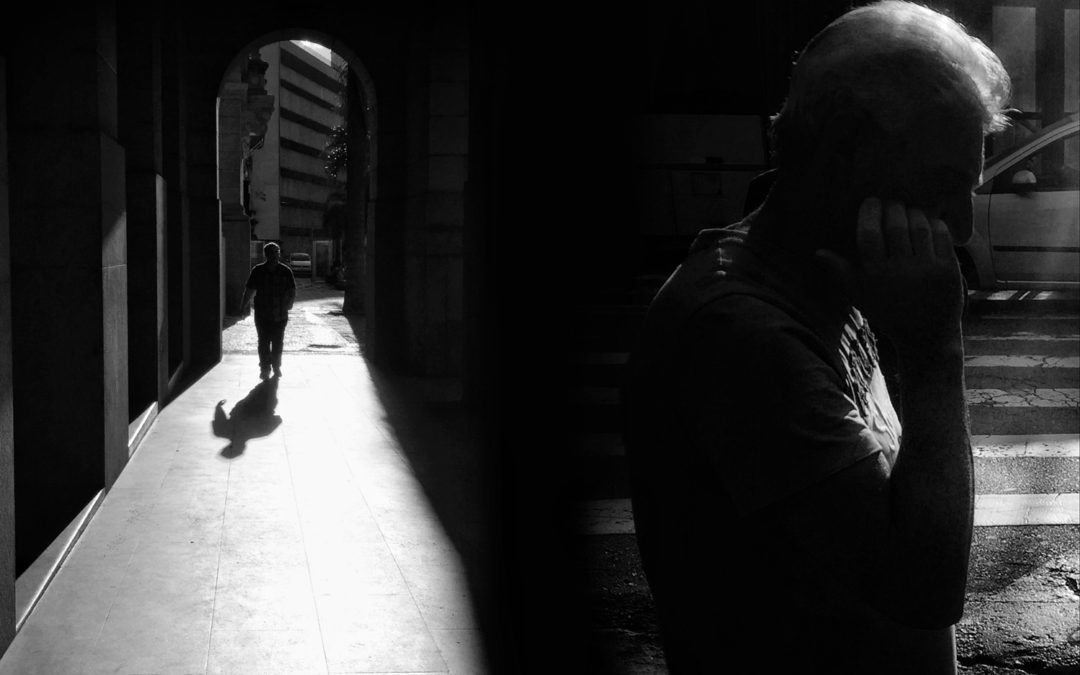
by Leandro Leme | Feb 2, 2017 | Leandro Leme, Staff Picks, Stories, You Are Grryo
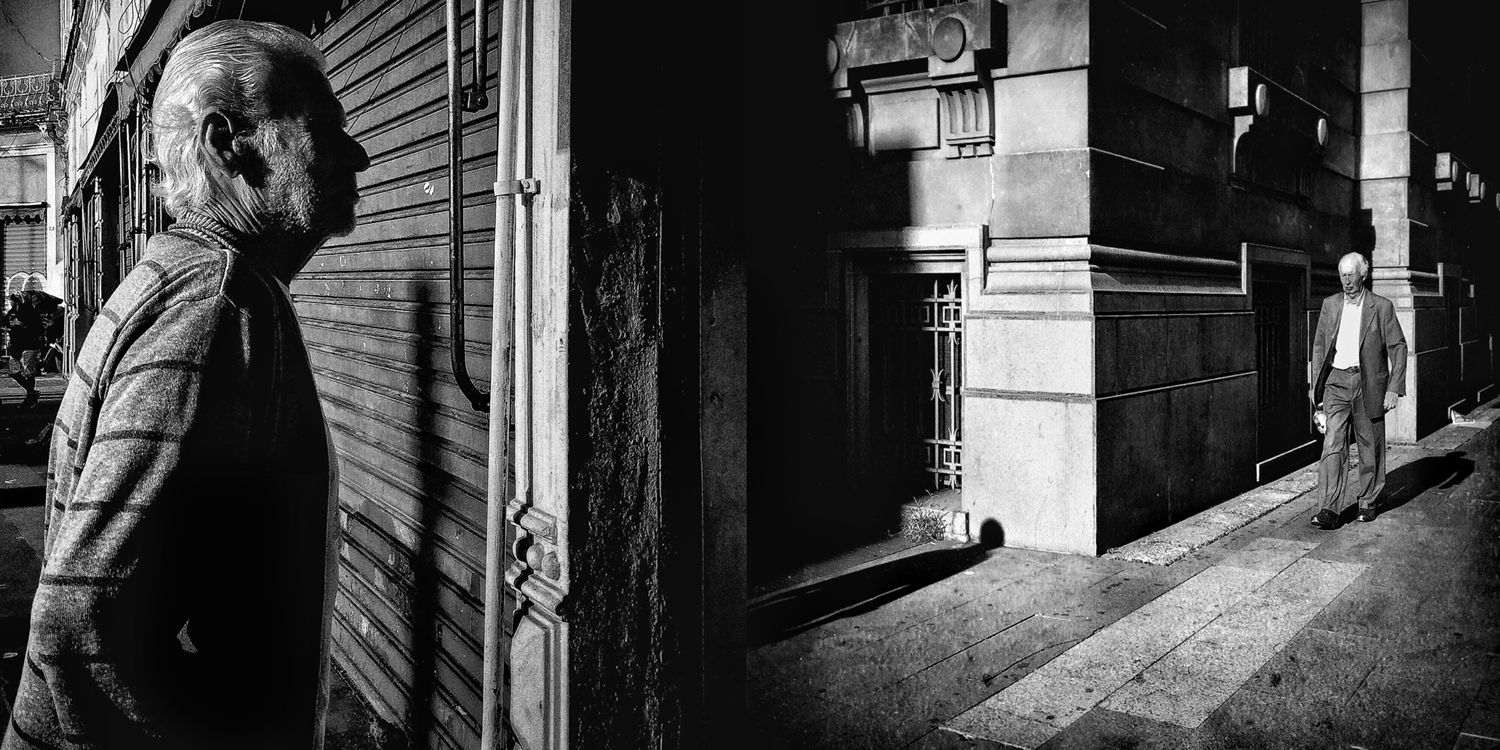
The labyrinthine streets spread like cracks on the downtown area of São Paulo. I walk shouldering my way through the crowd, keeping the man in my line of sight.
The street I chase him on is older than the very foundation of the city. It already was a path crossed by animals and natives along the forest, before the Society of Jesus forged a spiritual connection with the Madhat Pasha street in Damascus. São Paulo was meant to be the Heaven’s Capital on Earth — so it’s written on the letters exchanged between the Jesuits. Truth is, it became a kind of El Dorado of Brazil. Drifters from all over the country seeking fortune on this piece of land, mostly failing nowadays.
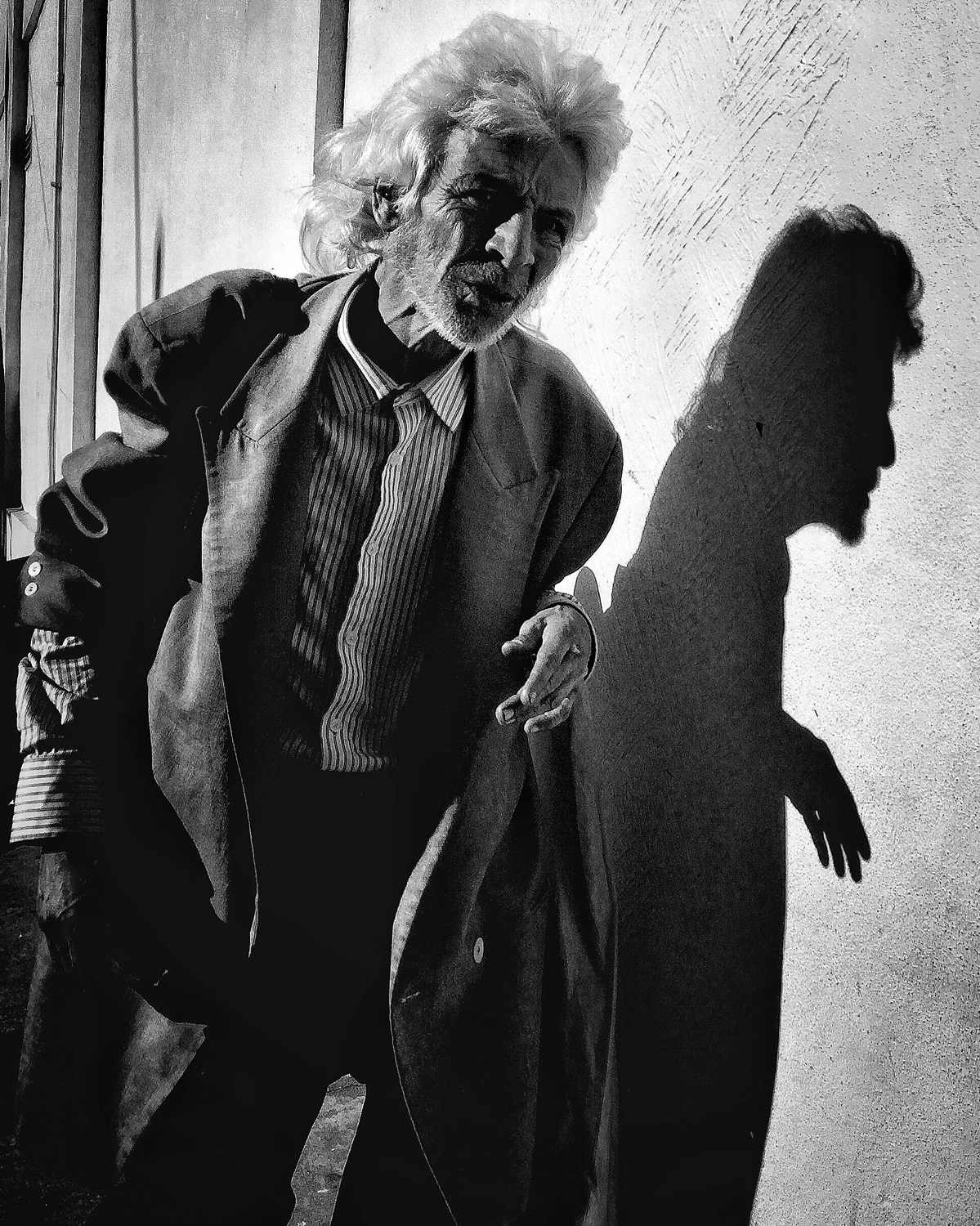
I’m trying to make some sense of my woolgathering. It comes with the job, I suppose.
The job isn’t new — you’ve already seen the story. Maybe you even took a part on it. It all comes down to someone wishing something one can’t have.
I could tell my client exactly how the story ends, but I wouldn’t get paid for playing Sherlock. The job has taught me that seeing is important. People are drawn to suffering like moths to lamps — a kind of messed up script hardwired in our brains.
I’m not a monk to delve into the philosophy about it, nor a scientist to prove it. I tell what I see, that’s all.
I wait for the man to exit the restaurant. He’s oblivious to me, although I’m a little too big to ignore. He’s alone, without the briefcase. I know where he’s headed to, so I decide to go somewhere else.
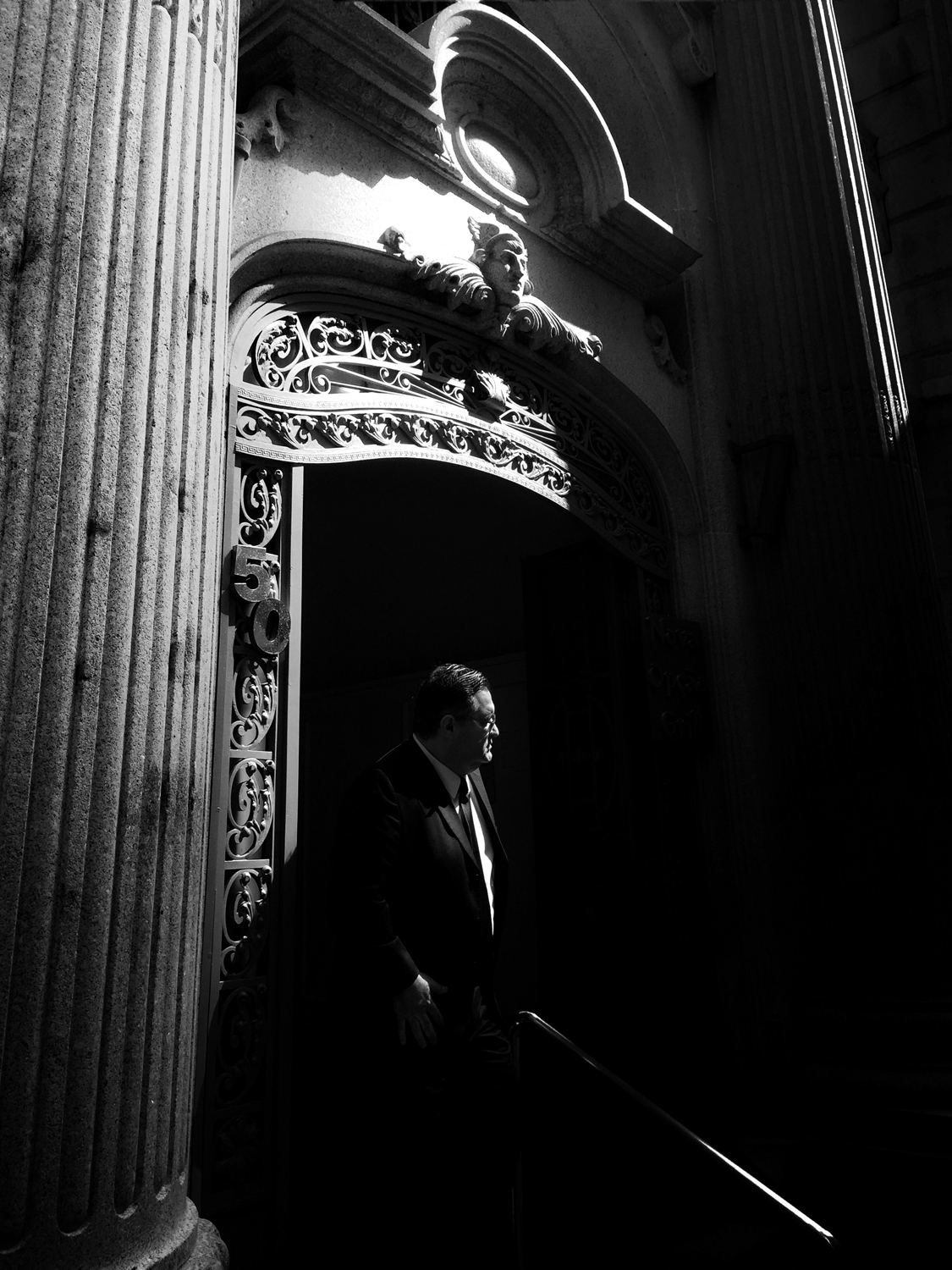
São Paulo was known as “the land of drizzle”. Things have changed during the last decades — for the worse, if you ask me.
It’s Autumn, but it doesn’t feel like it. This temperature could be Summer in any northern hemisphere country. I wonder if the heat loosen the reins of civility here, making people less patient, less good tempered.
Regardless, businessmen march with their dark suits and bright ties on the shadows of financial buildings. They march side by side with the ever growing homeless population, ignoring them behind their sun glasses, puffing on cigarettes and checking their phones. Billboard men on every corner wear plaques advertising gold and diamond brokers, shady attorney services, the sale of doctor’s notes for paid absent days at work. They have blank stares and tanned, cracked skin because of the sun. I wonder where their minds wonder.
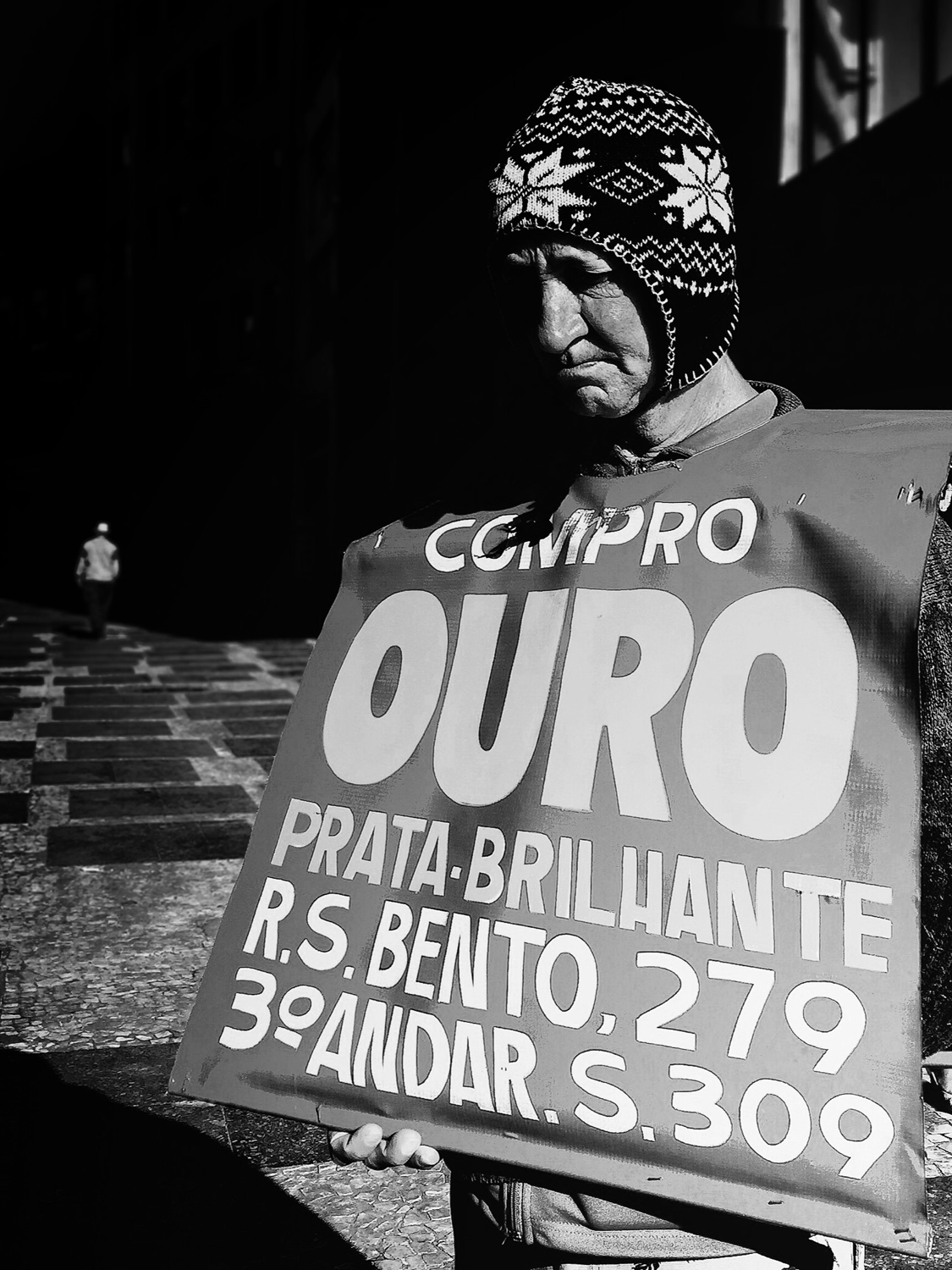
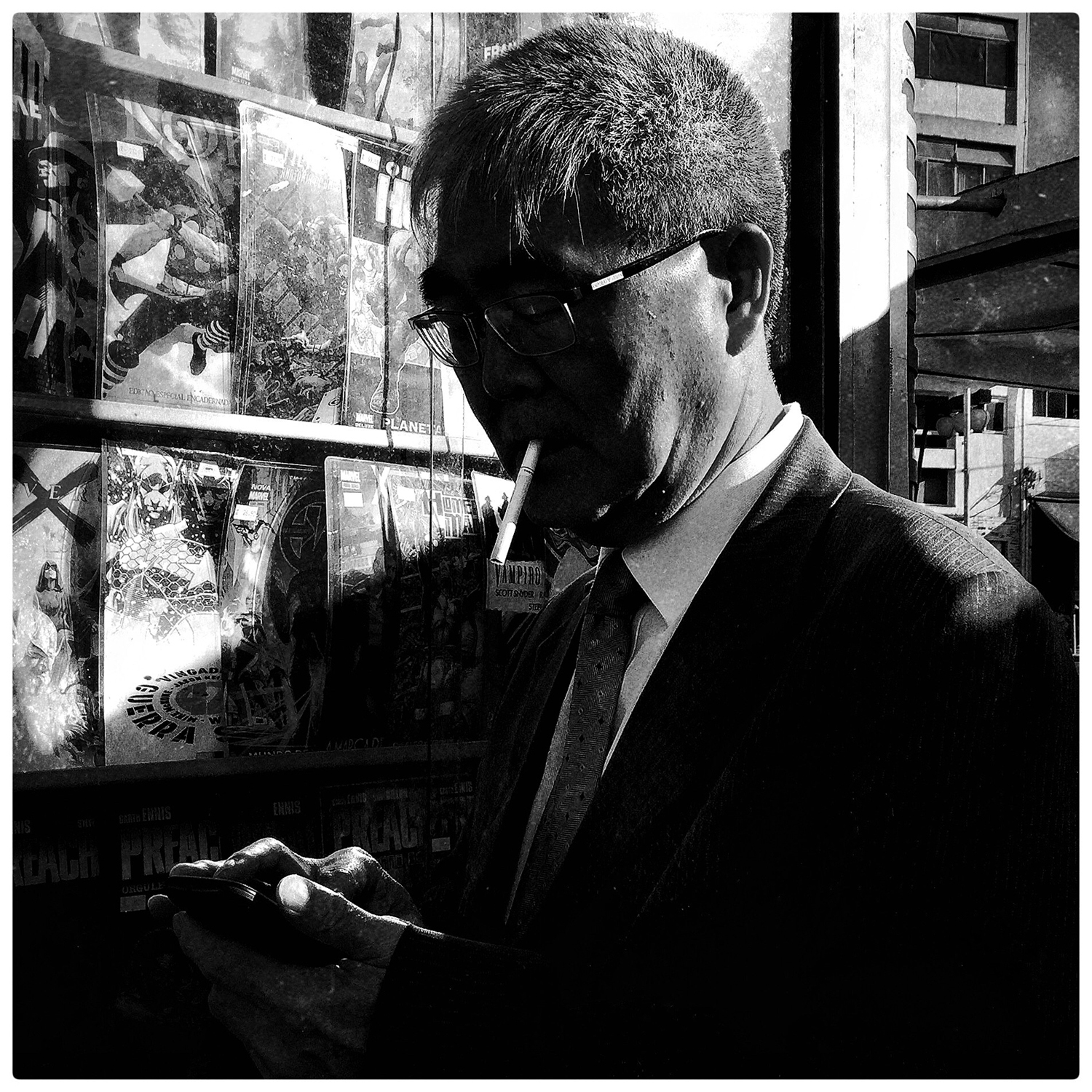
I see the woman where I already knew she was. It’s a matter of pattern recognition. People are much more predictable than they think.
When she gets tired of waiting, I follow her. I debate for a moment about my options here. I decide to play by the rules of common sense.
She walks like a ghost, dragging invisible anchors and lost in her reveries. I wait by the old phone cabin as she takes a turn and faces the sun, as if this path could lead her to some kind of enlightenment. Or maybe it’s just me, seeing her story as mine. Pattern recognition.
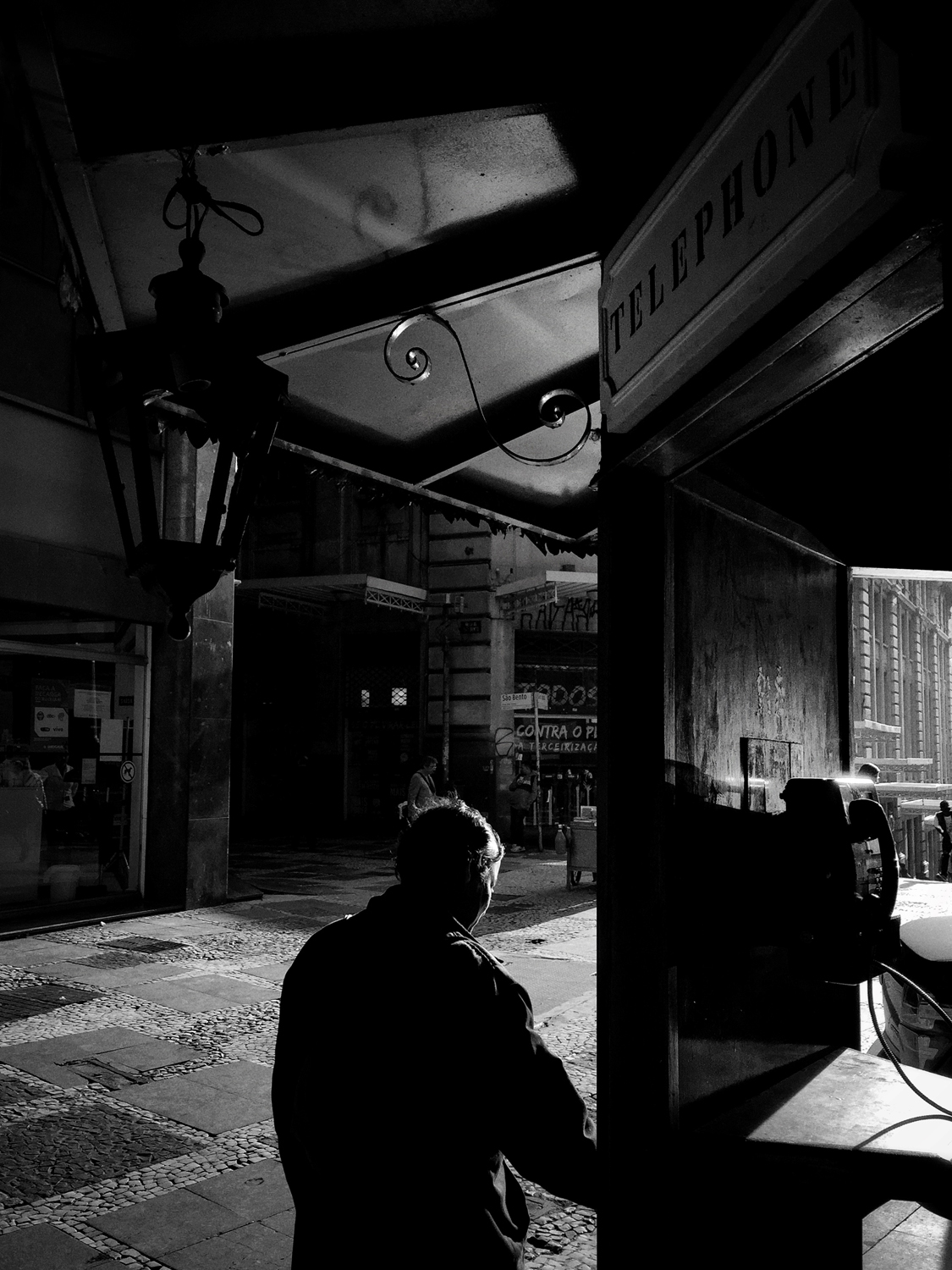
She enters a small store and leaves with the bag. She wanders through the streets until we arrive at the site of the city’s foundation. I remember that before the Society of Jesus, this place was a cemetery for many indigenous tribes. They met here to bury their dead and to negotiate. Death and contracts seems to be always hand in hand in a twisted way.
The Imortal Glory stands tall, on the top of the stone column, as a guide for the lost. I write the time and place in my notepad and take one last shot as the woman walks to the bus stop.
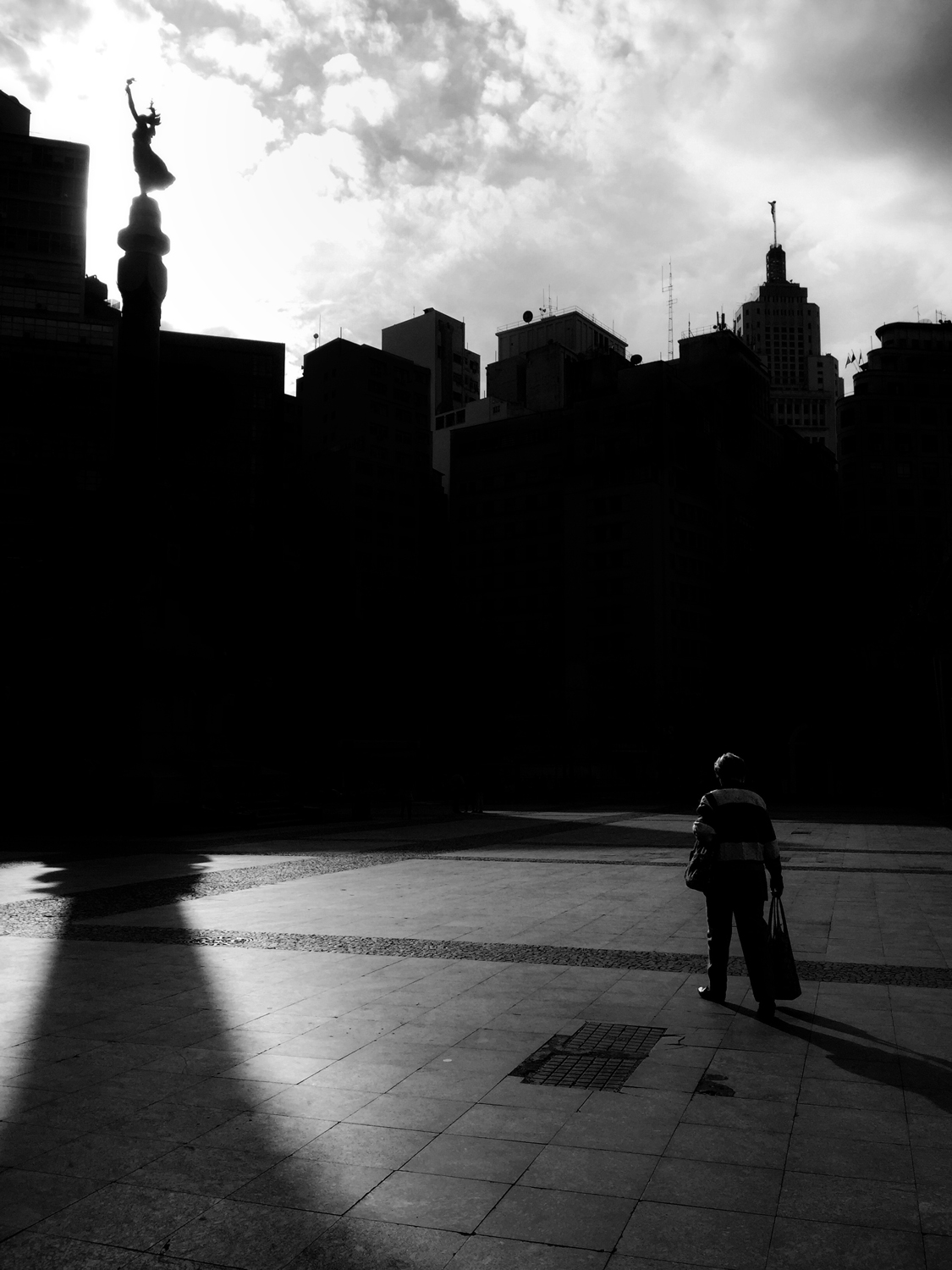
Then I leave her, hearing the whispers of my own demons feeding on my thoughts. I debate again about my options here.
There are certain rules I promised to never break again – which doesn’t means it won’t happen. There are things much stronger than promises in this world.
This city is a spawn of such things. So is this job.
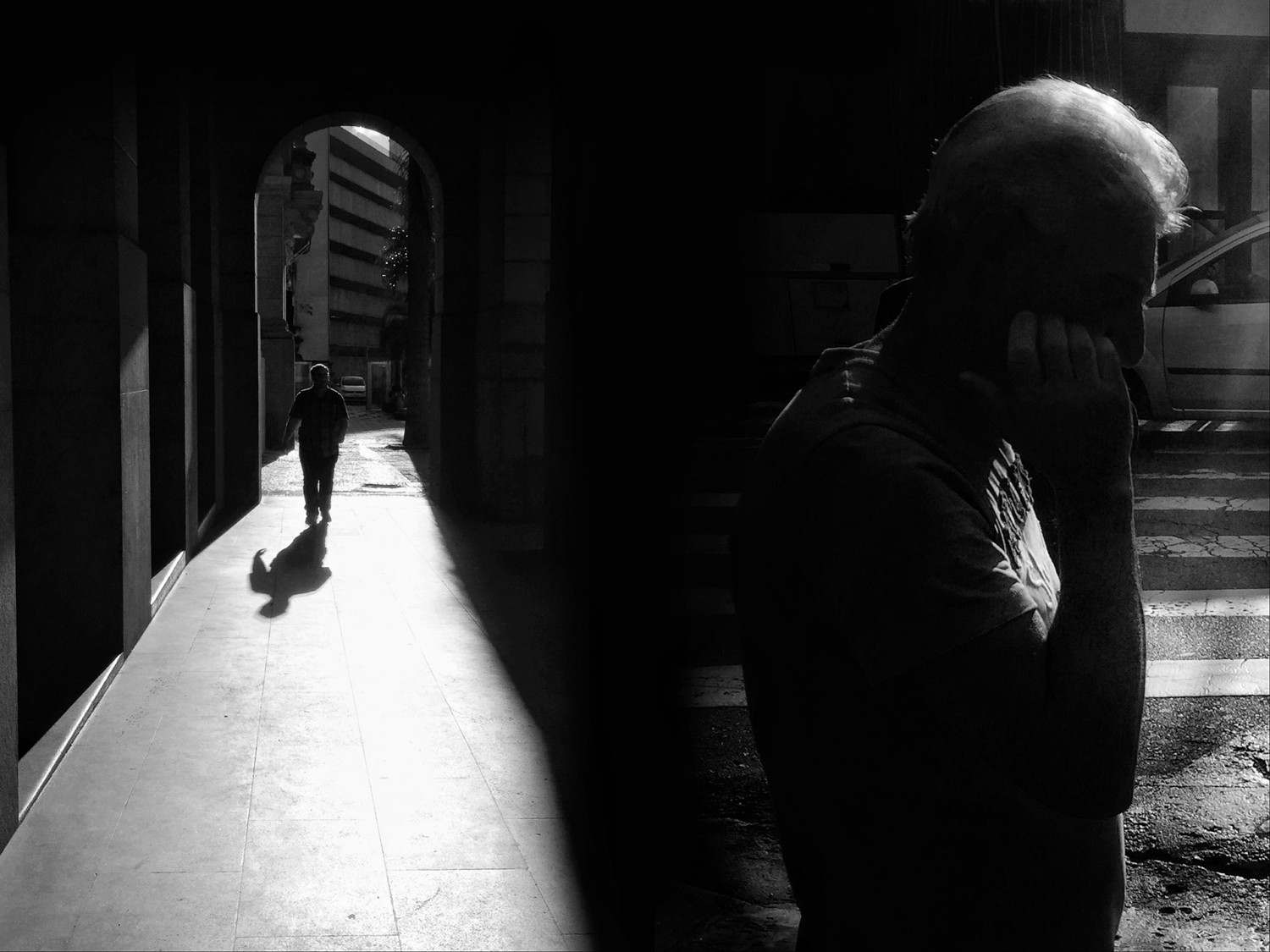
From all the stories about São Paulo, there’s one that seems like a prophecy for the dwellers of these dirty streets. An omen I constantly see between the lines in every case, like a signature of Fate, although few know about it.

There was a Portuguese pirate living on the coast, about 40 miles from where the Jesuits would settle. He was the most merciless Indian hunter at the time, killing most of the men and enslaving the women for his pleasure. But things suddenly changed.
History tells he was not only converted by the priests — joining their mission — but became a feverish believer and preacher among the native Indians. One day, when the Society of Jesus decided it was about time to expand their influence, it was the former pirate who picked the shortest straw.
He left towards the unknown landscapes beyond the Society’s settlement and crossed paths with warriors from a local tribe. And you can guess what happened next. A rain of arrows left him bleeding to death under the blazing sun.
One of the Jesuits later wrote in his letters that “the Lord would establish His Church, now that He had bathed the foundations with so glorious blood”.
A city founded by religious missionaries, with a promise of Heaven, consecrated by the murder and the blood of a former pirate.
This job has taught me that promises of light are bound to hard shadows. All the contracts signed with Fate have secret dark pages we can never read.
I feel a lot like this city.
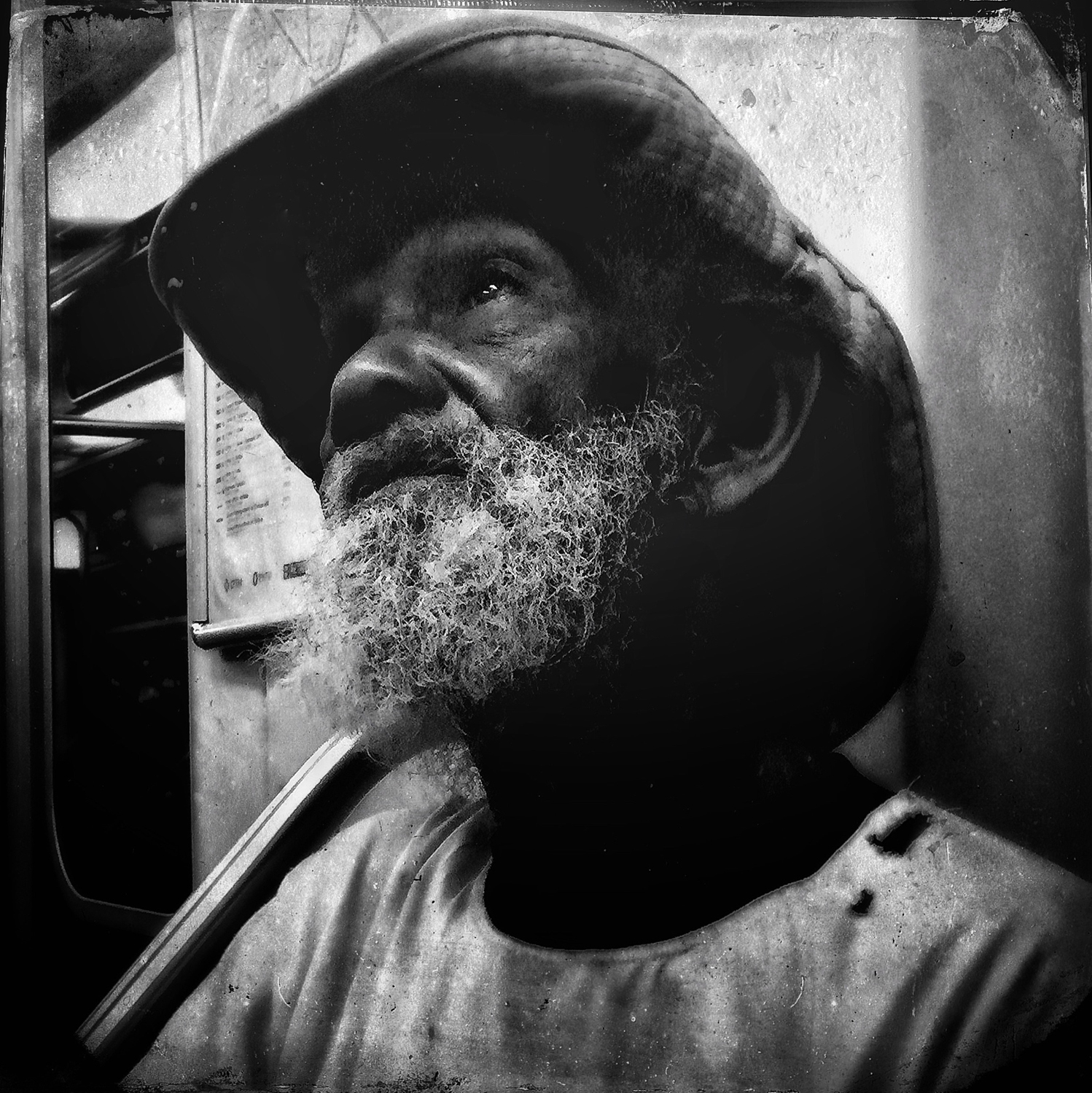
The phone rings on my way back to the office. I see the client’s name on the screen and I ignore the call, but I know he will be waiting for me. Moths and lamps.
I keep walking aimlessly for a while collecting faces and silhouettes. The man lights the cigarette but seems like confessing on the sidewalk. Another man sees when I point the camera at him and leaves with a suspicious look. For a brief moment I almost can understand what I’m looking for. What is the purpose of this, what’s the story I’m living in.
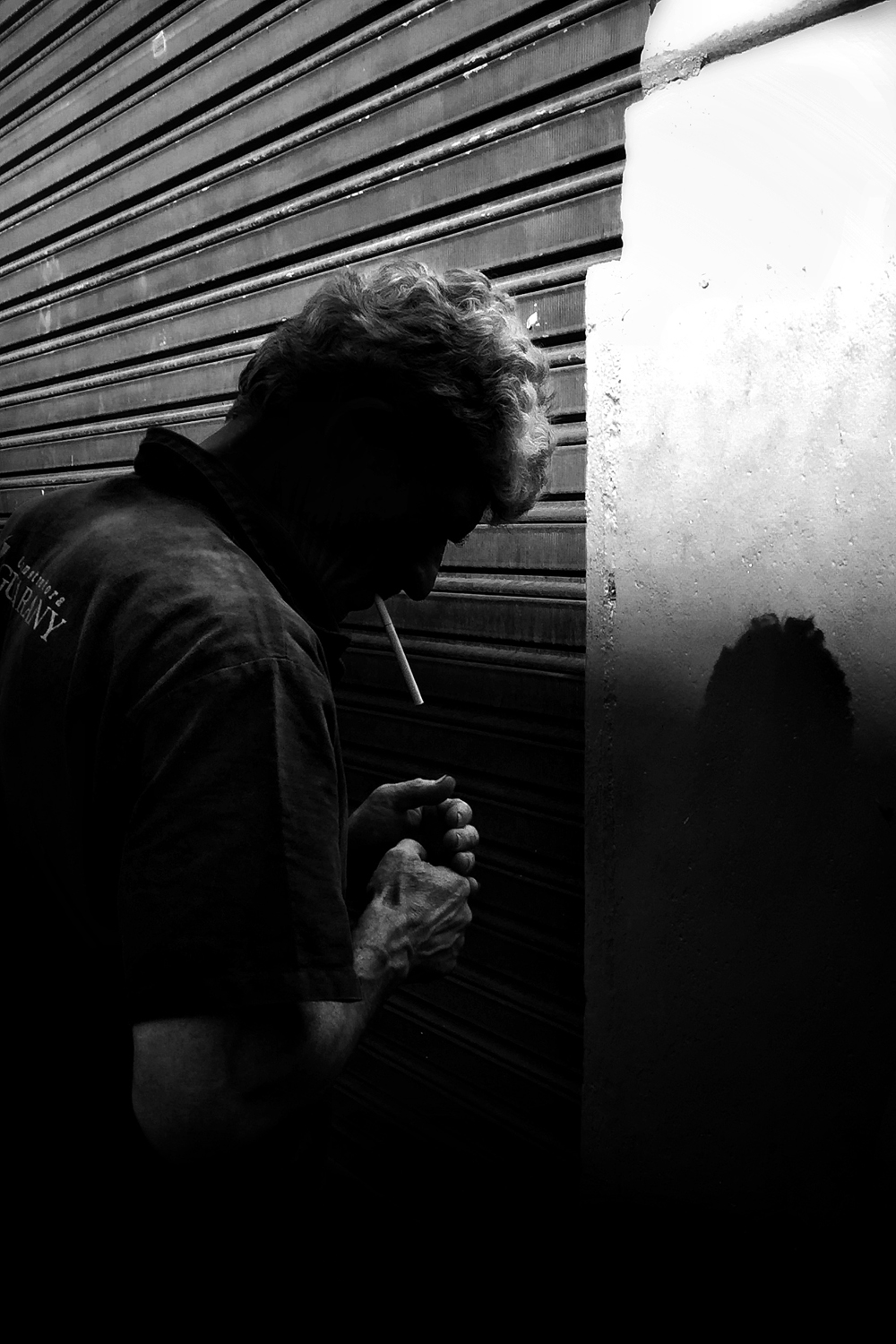
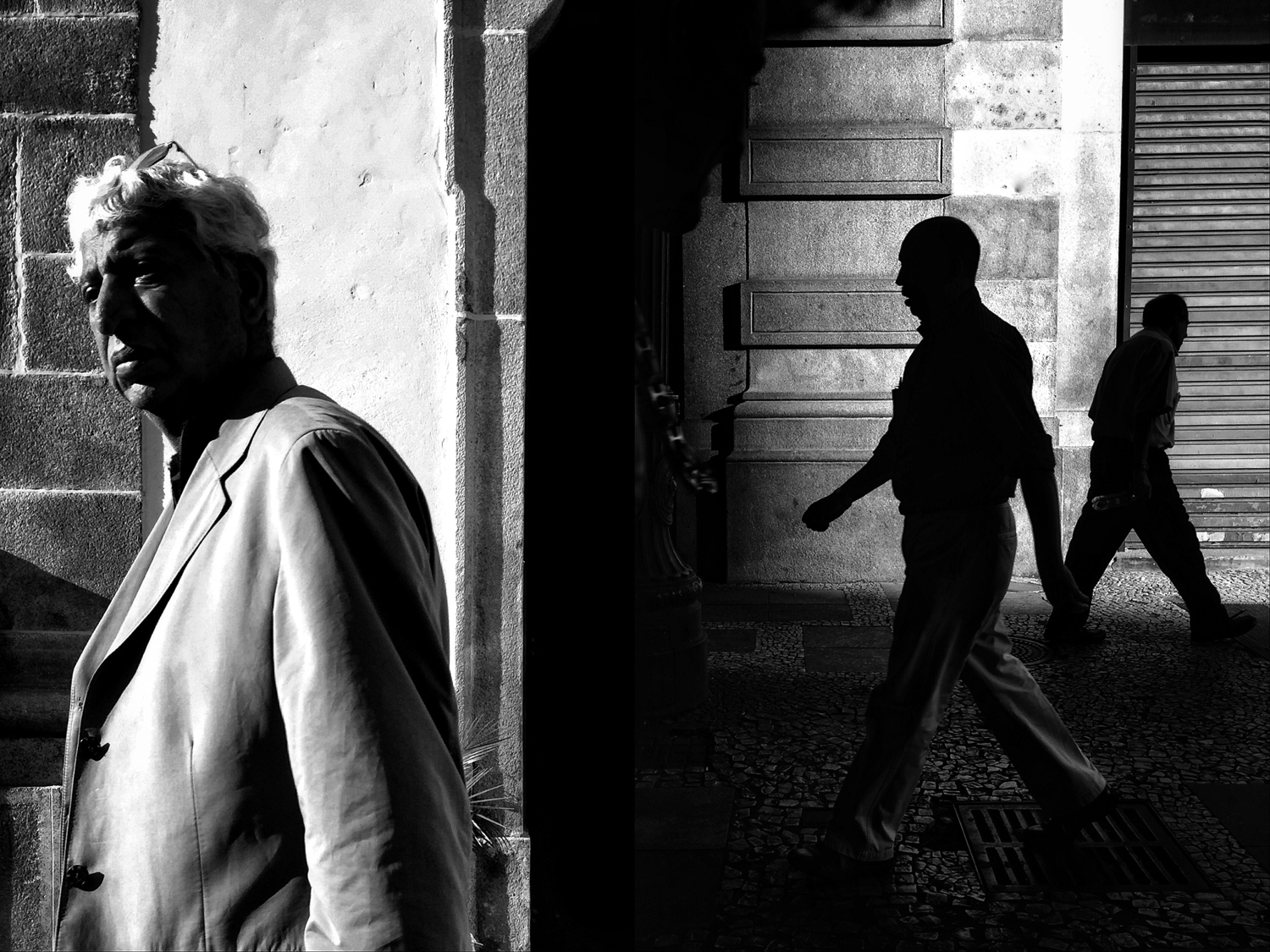
When I meet my client, I show him everything I’ve got. I explain the case using the words as knives, twisting the blades a little more on each sentence.
I take no pleasure doing this, don’t get me wrong. I’m another kind of monster.
The job had taught me that such pain is the closure the clients seek — and I’m good at the the job.
He pays me and disappears behind the door. I hope I never meet him again.
Looking through the window I see the sun vanishing behind the buildings. The last rays of light ignite the polluted air on the horizon with the most beautiful red and orange tones. People cast long shadows down there on the streets.
I close the curtain and shut off the phone as the day slowly ends. In less than an hour there will be just shadows — the city’s true calling.
I open the bottle of bourbon and wait for the night and its truths, relieved by the distance from the promises of the day.
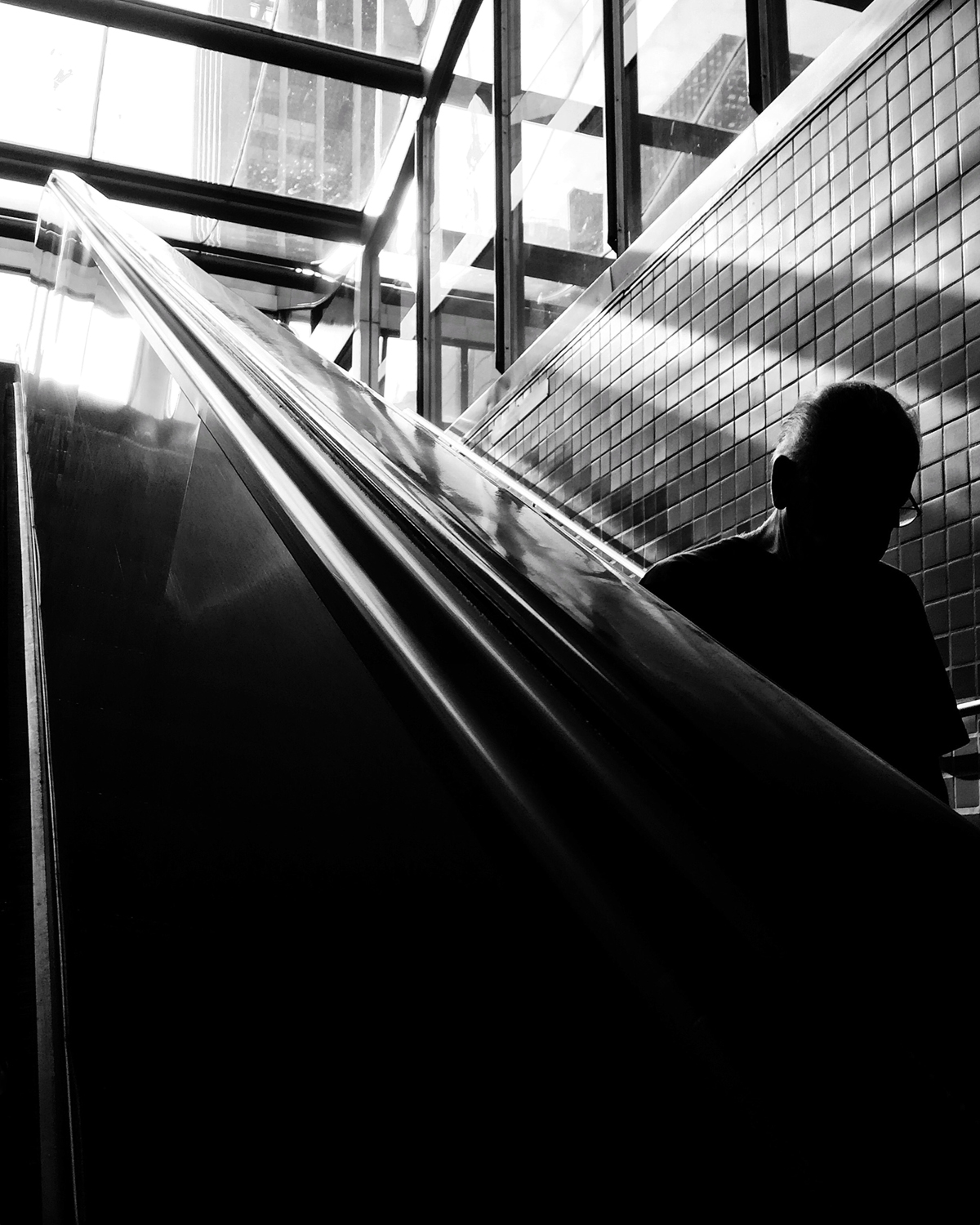
THE END
Leandro Leme is a photographic artist from São Paulo, Brazil. More of his work can be seen on Instagram | 14&15 Mobile Photographers.
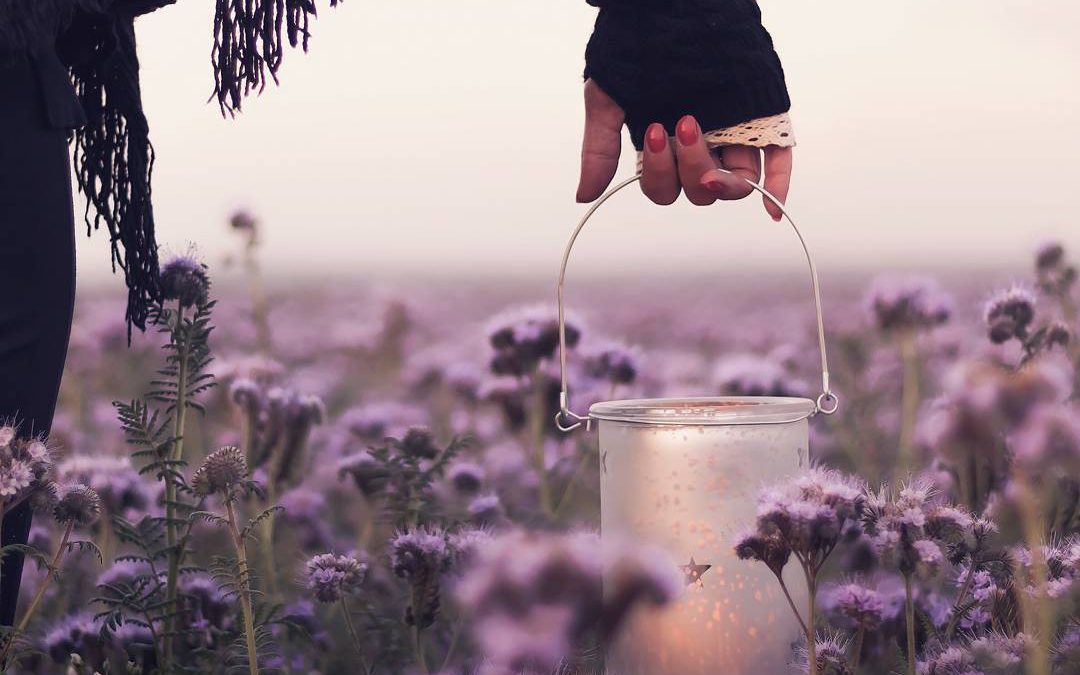
by Antonia Baedt | Jan 20, 2017 | Antonia Baedt, Stories, Storyteller, You Are Grryo
I am a storyteller by profession. Most of my inspiration comes from everyday life. I believe our lives are made of a never-ending string of stories that connect us all to one another – if we are just willing to listen. By sharing pictures on Instagram, I feel like I am offering something in return to people who share their stories with me. Through their pictures, I can walk along an Australian beach, sit on a rooftop in New York City, dip my toe into the icy waters of Canadian lakes or sit in a cozy café in Warsaw.
11 months ago, I created an Instagram account as a task assigned to me by my employer. I never saw the point of social media, where most people seemed to connect digitally to people they knew in real life. But Instagram has turned out to be a window to the world. My Instagram feed is a collection of ideas, coincidences and random things, that catch my eye during everyday life. I am not a photographer and I don’t have a theme or style to my account.
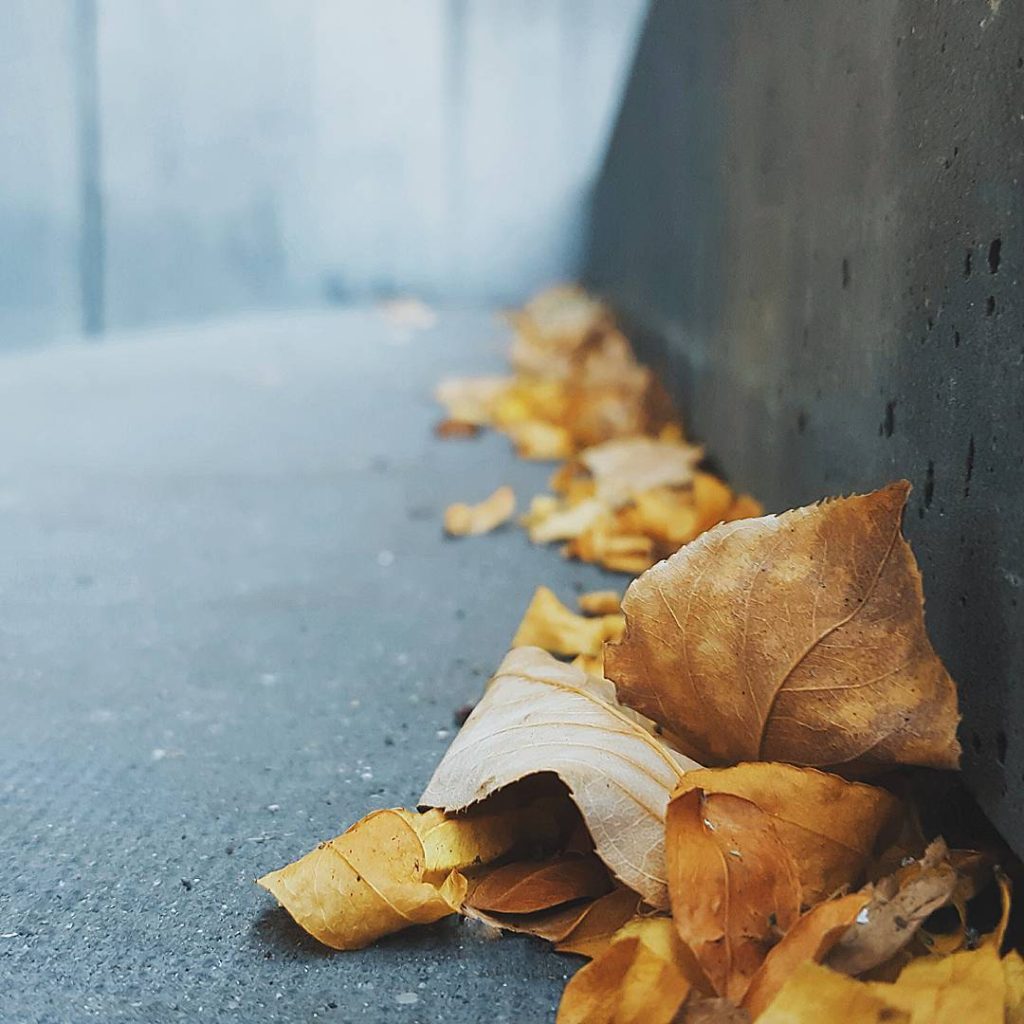
Finding beauty in ordinary things is what inspires me most.
About half of my pictures are very spontaneous. I often stop during the day to take a photo with my mobile phone. This was one of those crappy days at the office. Nothing had gone according plan and I left a lot later than I had hoped to. Carrying a pile of paperwork, my bags, and the trash, I walked over to my car, just wanting to get home. The bright yellow caught my eye. After a moment’s thought I disposed of the trash, threw my stuff in the car and spend the next 15 minutes bent over the stairs with my phone. Strange stares by passersby ensued. The next day the leaves were gone. Someone had “cleaned” them up.
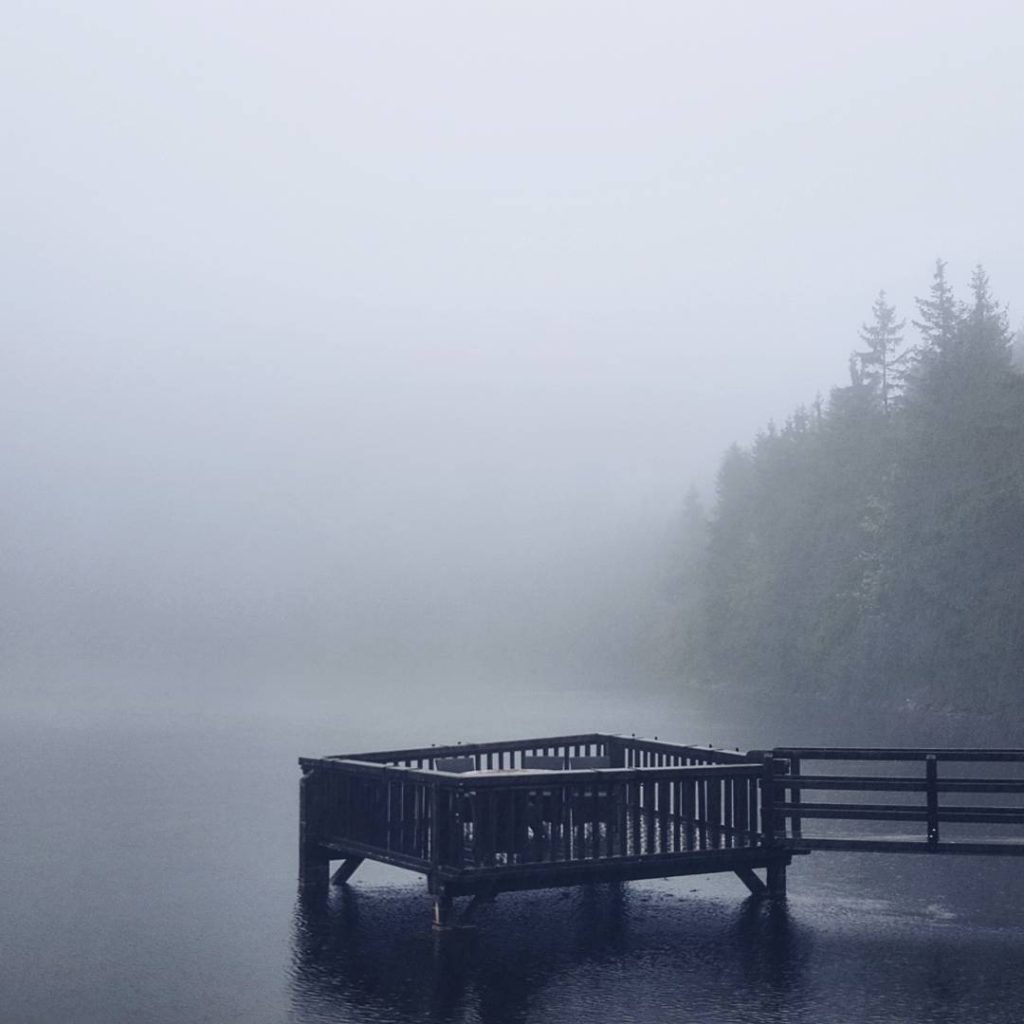
The Mummelsee in the German Black Forest area engulfed in fog.
Besides everyday hidden beauty, bad weather has become a welcome photo opportunity. This picture of the lake is the outcome of a business trip. I was supposed to bring back picturesque photos of a popular tourist area. Well, as you can probably guess by this picture, that was a complete disaster. It rained for 3 days straight. I fell in love with the dreamy mood of the thick forest all engulfed in fog. Now, I go out hunting for fog and rain on purpose.
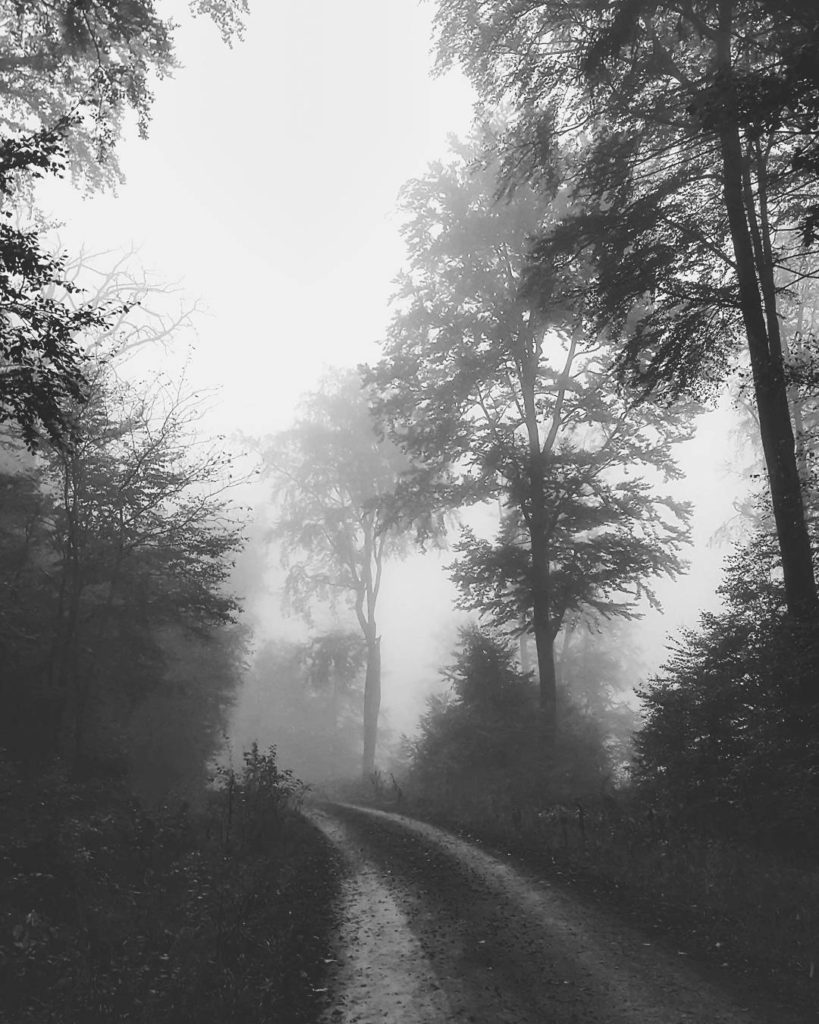
Chasing fog during a visit in die Central German Uplands, where I grew up.

Creating and learning as I go is one of the gifts IG has given me.
Not all my pictures are things I find along the way. The other half of what I post is planned. Copying artists that inspire me is my way of learning. I don’t necessarily aim for an identical picture, but I like the reverse engineering part of it. Everyone who spends some time on Instagram will spot some patterns of what is popular. Lamps, candles and fairy lights are a current trend. I thought: you can’t judge something you haven’t tried. So, I went on a photo walk with a fellow Iger, all set up with lamps and fairy lights. We realized quickly that taking an atmospheric picture like this is much harder than it looks.
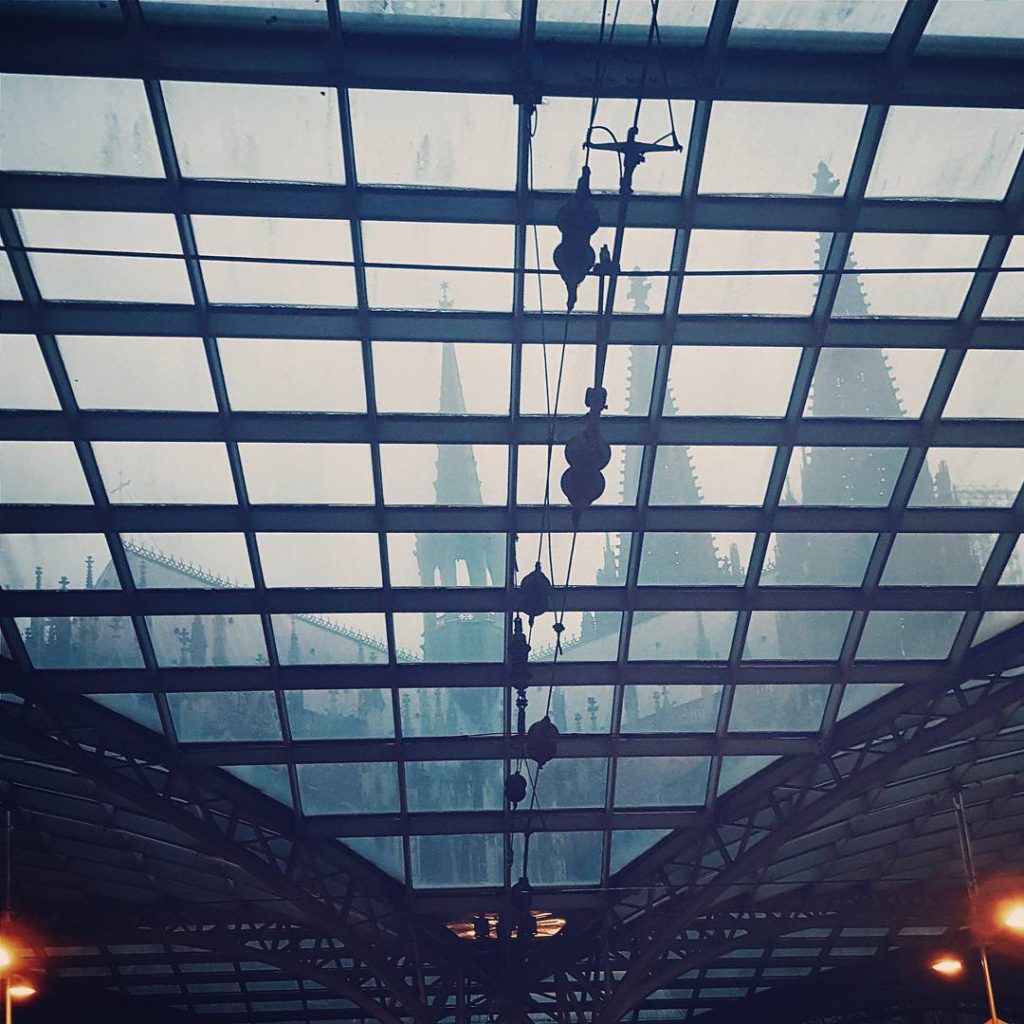
After living in Cologne for many years, I am discovering it all over again.
A fellow Instagrammer has a similar picture of the church in his gallery. It was taken in the city I live in. I was so fascinated by the angle, that I started looking for the position he must have taken it from. A fun way to explore places you pass by every day.

Sometimes I have to wait a while for the perfect opportunity to take a picture I have had in mind for a long time.
Pictures rarely turn out exactly the way I intended. If they do, they take a lot of planning. As with my experiments, I constantly look for locations and great light. The tracking of weather, seasonal changes and the movement of the sun have become part of my every day routine. Because I don’t have a lot of time to take pictures, I use that info for the occasional quick hunt – by leaving an hour early for work to stop along the way, for example.

Connecting with people all over the world and making new friends is what makes Instagram so special.
Last but not least, my new-found Instagram friends are a wonderful way of creating new pictures. I am lucky to have met a few in real life. It is amazing to see how different the pictures are that you each took of the same things. I have learned a lot about photography and how different Instagrammers see the world around them.
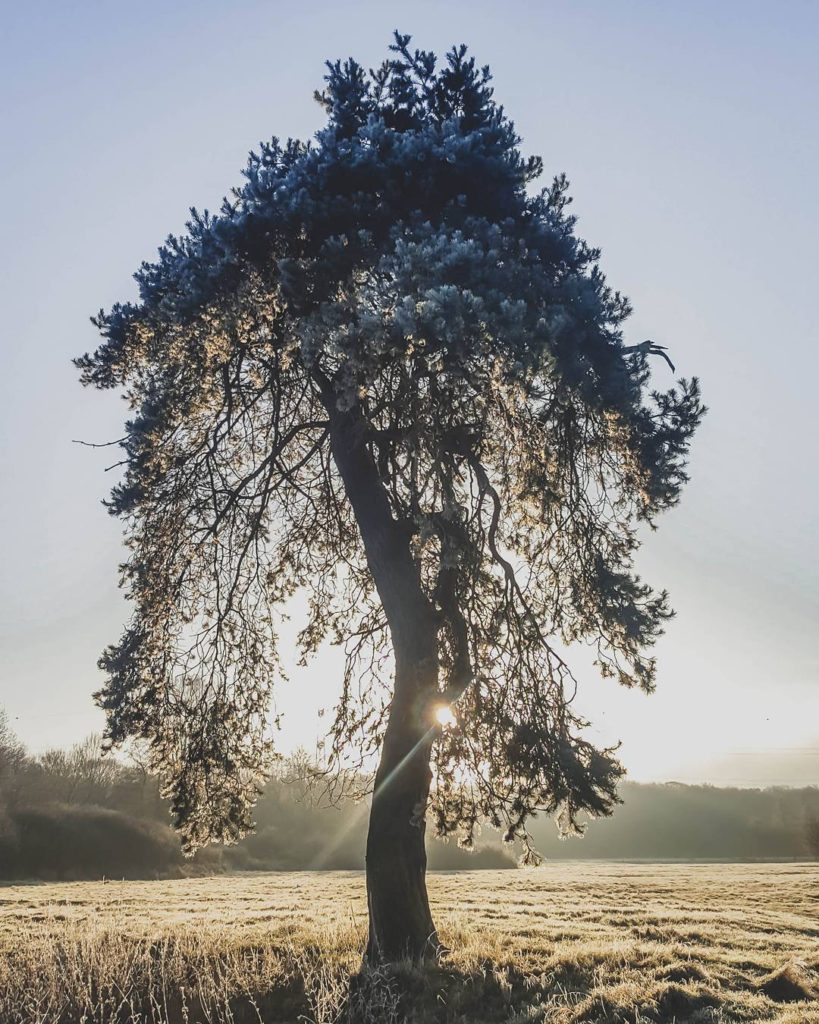
“The frozen tree”
I often get up before sunrise to chase for that magical light only the rising sun can give you. This picture was taken on a Saturday morning. It was freezing cold. The morning fog had just lifted and everything was covered in ice. Billions of tiny crystals reflecting the harsh sunlight. If I can’t go with a fellow Iger, I like to go alone. I can walk and stop at my own pace and just enjoy the silence of a fresh day. This time I had a few of my IG friends with me. We connected via a group chat app and were each out hunting for the perfect picture that morning. All in different countries but all looking into the same rising sun.My photos are snapshots of my life’s stories and my way of bringing my visual ideas onto paper, so-to-say. As a storyteller in the movie industry I think in pictures every day and connecting stories to them comes very naturally. But I am not a photographer for photography’s sake. I take photos to have something to share on Instagram. Something I like and something I hope a few people can connect to, so that the strings of their stories and mine can intertwine.
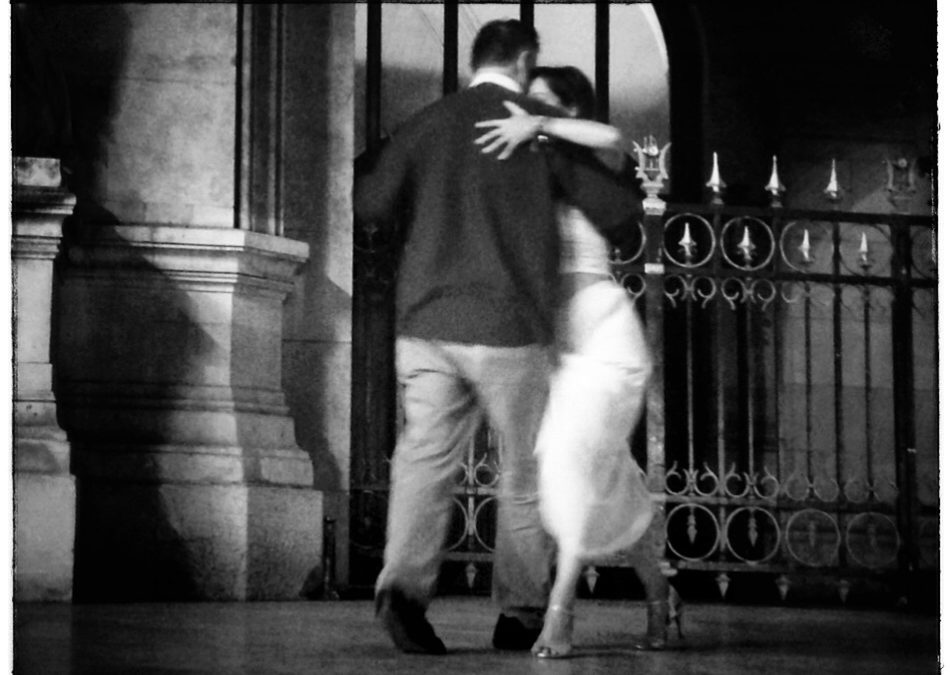
by L. Bird | Jan 13, 2017 | Ladybird, Stories, You Are Grryo
Paris, late at night last September, tangueros are dancing on the plaza of Opera Garnier. It takes a second to stop. Then, time flies. Tango, the dance of love captured me, again… While I was taking photographs, an idea emerged. If reasons of Love resist to any understanding, would it be possible to identify the signs of its discourse as steps of dancers always appear to me – like a vibrant illustration of this intimate dialogue between lovers?

How is it possible to apprehend what love is? The mechanisms of love are a mystery… Raymond Carver, a fabulous American short stories teller wrote ‘What We Talk When We Talk About Love.’ With such a title, he might have found the best angle to approach what love is. Not love itself but what is involved in love… Also, Roland Barthes, a French philosopher tried in ‘Fragments d’un discours amoureux’ to analyse the language of love, elaborating, a kind of analytical board of its various figures as Dmitri Mendeleïev classified the chemical elements… According to Barthes, the discourse of love is highly ‘choreographic’ and he compares them to movements of dancers. Analyzing this discourse, he called the logic of the reason and applied it to the things of heart. It seems to be a seductive way to find some kind of answers to this mystery. ‘Tangueros’ series tries to take its part in that wondering quest.
…
Tango is easy to be seduced by. The body language of this dance and its music are certainly very powerful, even if it would be easy to confess this is a personal belief coming from its practice… The colors of Tango are black and red, and nobody ignores that red roses have thorns too. Each step of this dance could be the last one. It is a dialogue converging to a climax. Even if one of the dancers is supposed to have the lead in this conversation, any of the dancers is free to stop its course for a moment, introducing a new step to this sparring verbal. That’s how the dance occurs. In that way, Tango steps are really close to the figures Barthes identified. Re-reading ‘Fragments d’un discours amoureux’ while editing the photographs of this series was like growing evidence… This series of steps was like some of the loved ones.
…

* This shy distance of the very first steps when dancing is not already in question.

* This precarious balance after, what is not yet a couple, starts dancing. Dancers need these steps to know each other.

* The mistaken steps, and how the dancers need to adjust their movements when in doubt about the meaning of dancing together, are still in the air.

* This impossible try to let it die, inspired by this primitive fear of being hurt. How thrilled it is to hold on to, despite of it. How sweet it is too, to quiet each other in this need of trying, at least, just trying.

* The very first dancing steps. They are not perfect but something is happening and it’s already taking both of them beyond words.

* How this new grammar of steps provides the energy to give and ask for more that they might think at the very first sight. Sensations don’t allow them to think any more – steps are coming from something deeper.

* The need to take a break, just like birds on a wire. It goes too fast and finding breath to articulate is difficult. Suddenly, fear and blossom of dancing are intimately melted.
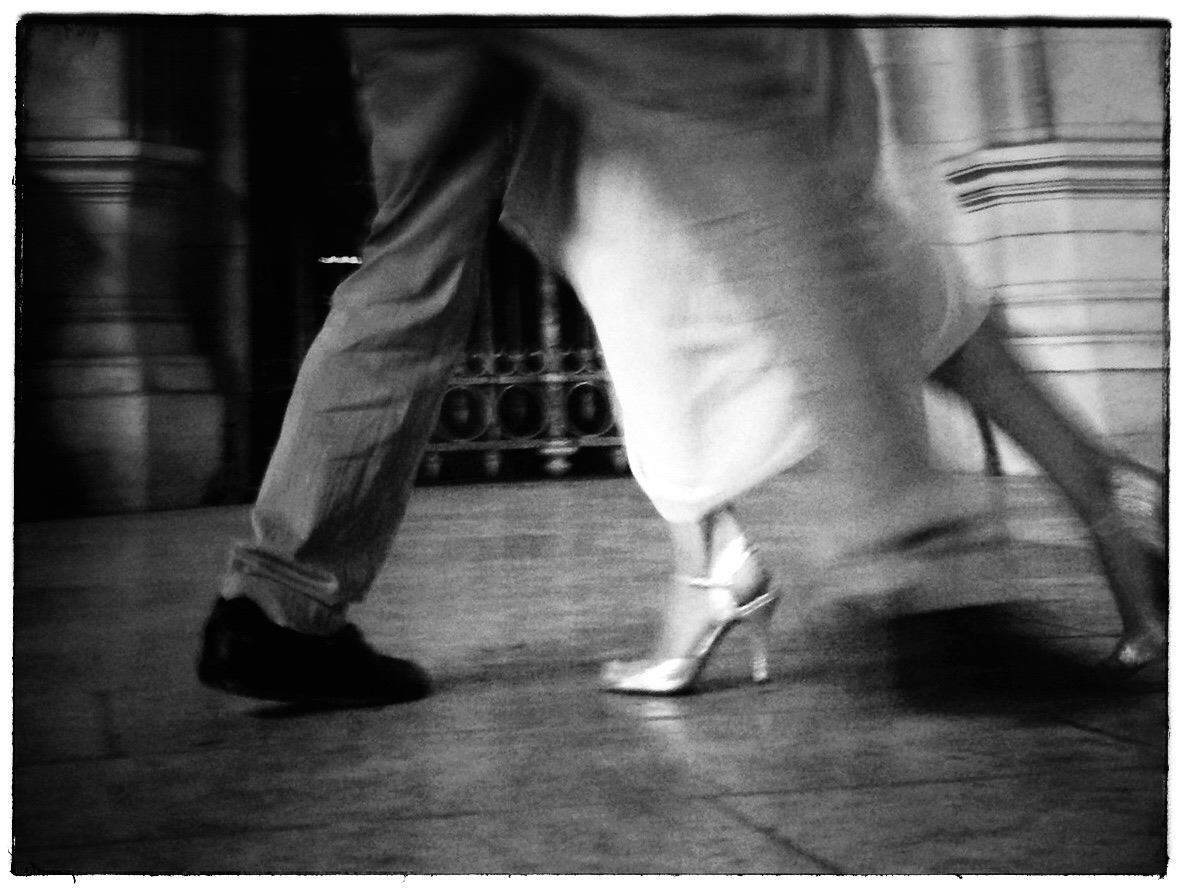
* These moments of grace where feelings can only be expressed with free movements, just like an air of bandoneon. Imagination took its part in this earned and sublimed trust, coming from previous steps.

* There is a belief in this balance which seems perfect. One move and the other is able to finish the sequenced steps the first dancer suggested. Intimacy is pushed to its limits in what seems a perfect match: bodies are vibrating, hearts are beating strongly and minds are filled with pure sensation. For the time of a dance, bodies and souls are extended to a kind of eternity as if this moment had to last for ever.
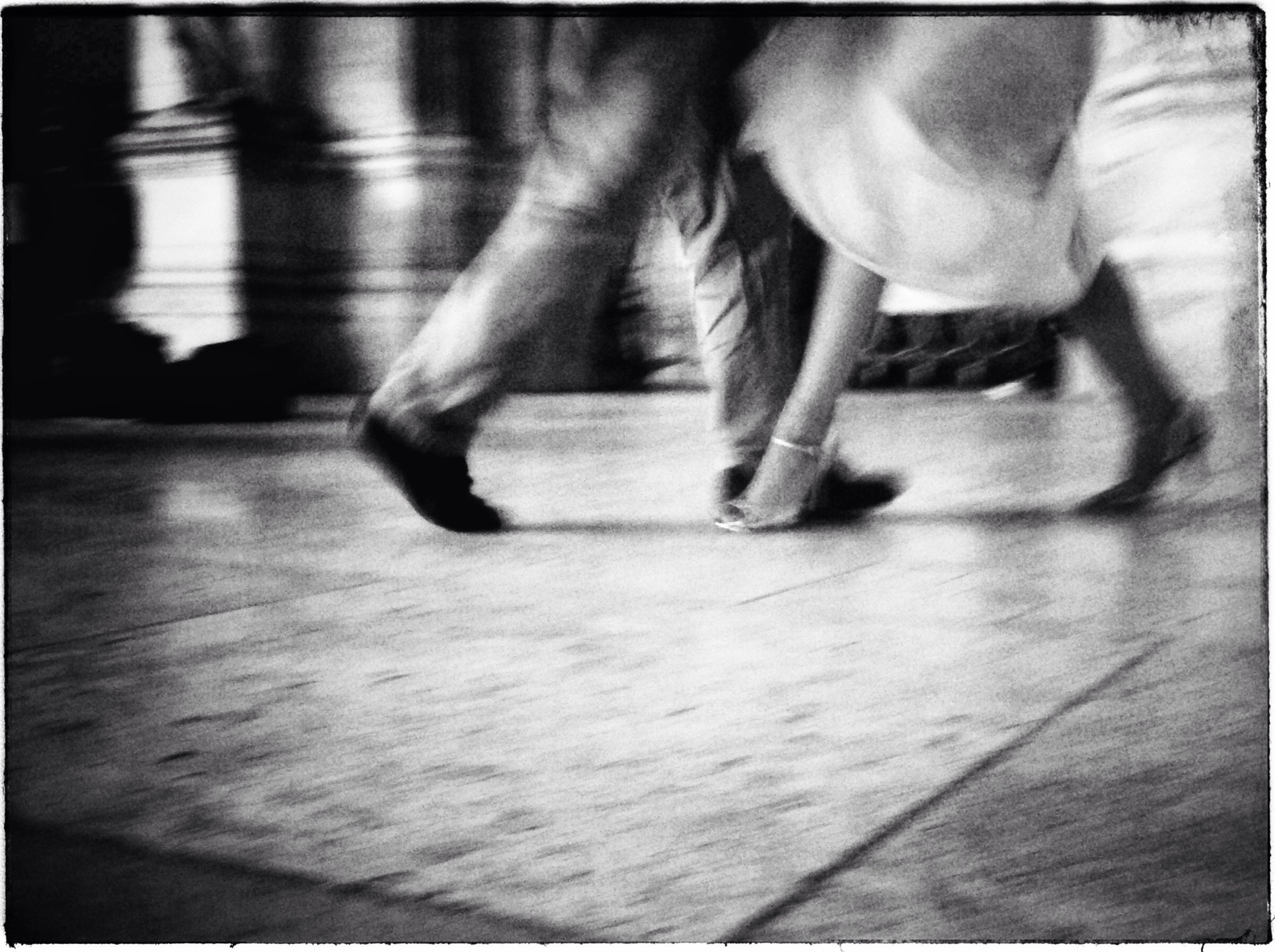
…
Steps and signs. Step by step, a grammar of these signs is enlightened: its subjects, its objects, its sequenced sentences, its rhythms, its breaths and its poetry. Unless what it is about remained a whole mystery. Photography captures moments; images are like signs of living love, living lives. Photography is itself a grammar helping us to approach deepest mysteries as close as we can. As a photographer, it is a never ending dance…
L. Bird, Paris, December 2016.
L. Bird is an independent photographer and film maker based in Paris [France]. Her work is all about storytelling, whatever it concerns [whether photography, series or short-movies]. Her work’s aesthetic is mainly inspired by street and documentary photography, but in such a manner, that it always turns her images into contemporary tales…
You can find her on : Instagram | Website
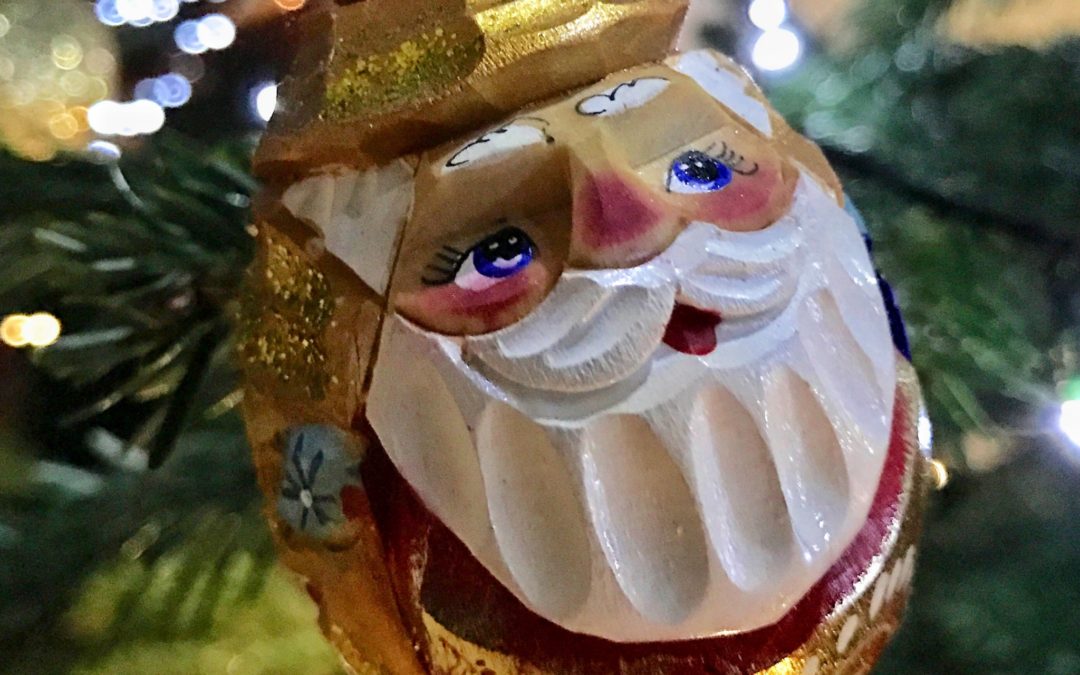
by Grryo Community | Dec 23, 2016 | Elaine Taylor, Joe Montoya, Simran I. Nanwani, Stories, Storyteller, Susanne Maude, Tommy Wallace
What does Christmas mean to you? Do you look forward to this season earnestly or is it a mere family ritual and gathering that you do every year?… Here at Grryo, all of us in the team, come from different countries across the globe with distinct backgrounds. In this post, we will all share what Christmas means to us and how some of us Celebrate it.
Tommy’s contribution
Christmas for me is deeply rooted in my faith in Jesus Christ. This holiday is to be a reflection of everything he is and I find it summed up in the word giving. I’m talking about giving without any expectation of a return. This year I have found a couple of actions that demonstrate the type of giving I mean.
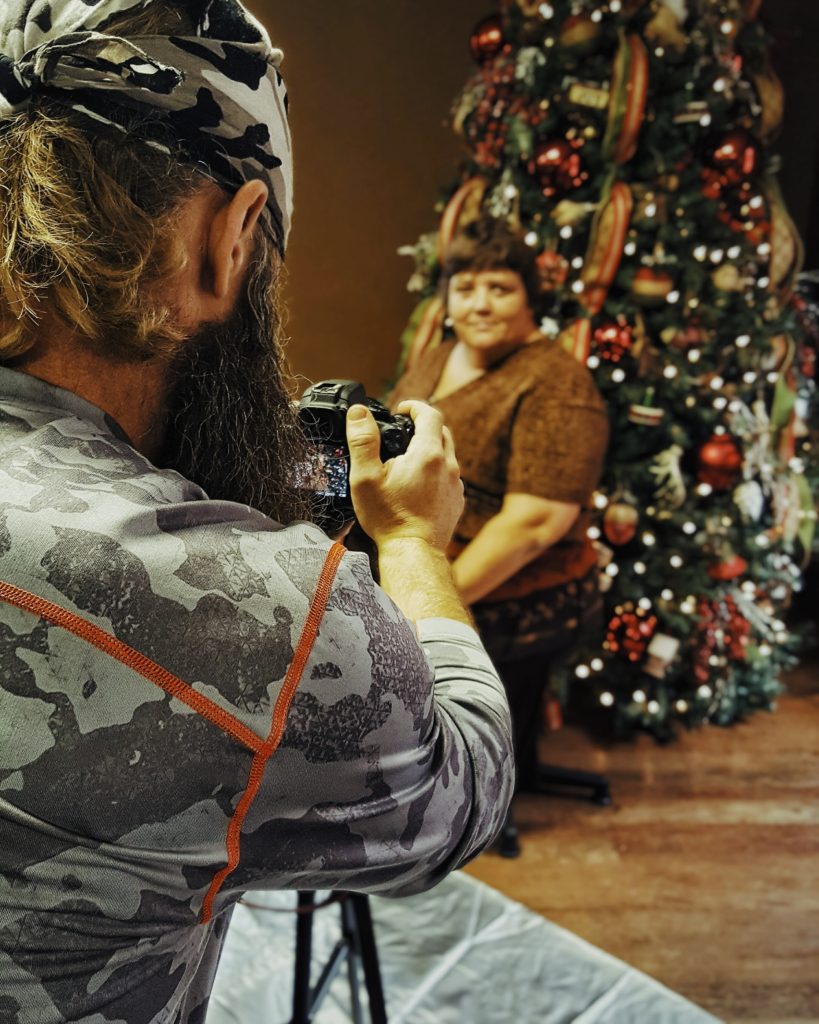
John and his wife Shayla started helping a couple of weeks ago at Soul Food Cafe, a local food ministry to the hungry. John’s heart was touched by the need he found all around him. Putting his photography talent to use he had the idea of doing free portraits for anyone who wanted one. On the particular day I visited John there, he took over 50 portraits in front of this tree as Shayla, with infant son “Cotton” in tow, gathered information. This week they are taking photos with Santa. In the meantime he made a video on Facebook about what was happening that generated 1500 views and gained help from several local photography clubs.
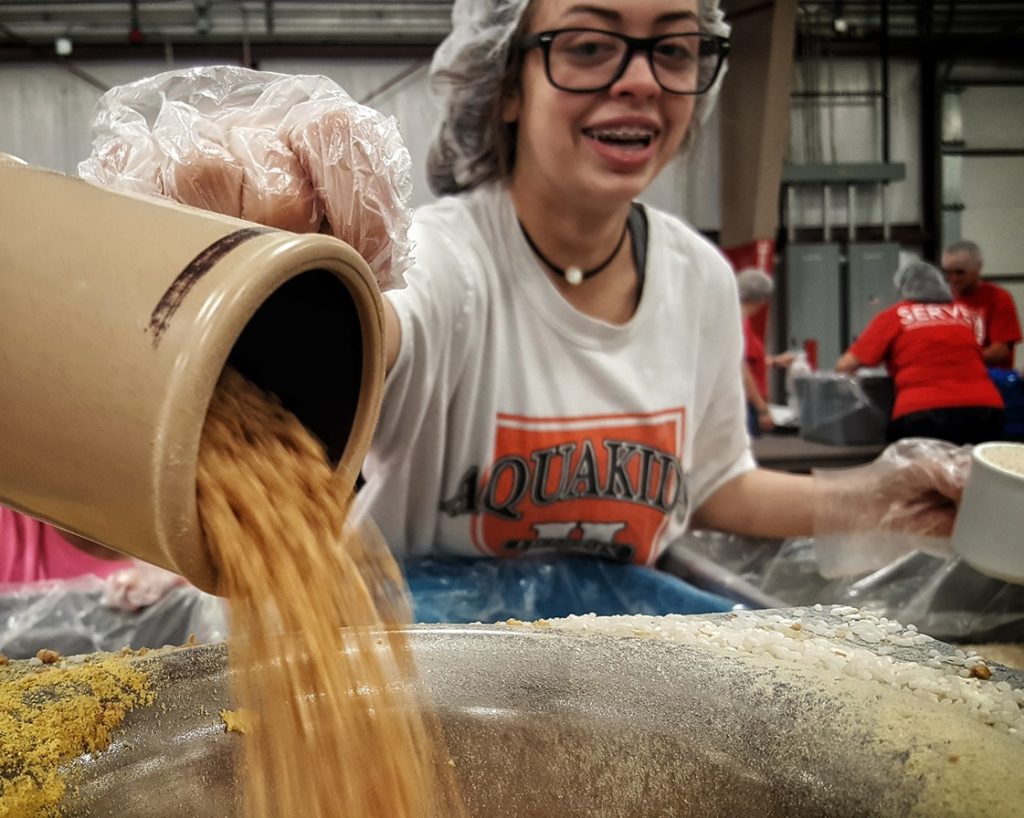
This past weekend I helped a group of teens that joined with several hundred other local Arkansans to fill food packs to send to hungry children in Haiti. A local restaurant, Tacos 4 Life, gives enough from their profits to feed one child for every meal they serve. They do this by teaming with Feed My Starving Children® which is a non-profit organization committed to feeding hungry children. They organize volunteers to hand-pack meals specifically formulated for malnourished children, and then ship these meals to distribution partners. These kids gave a couple of hours of their time on a Saturday to pack 492 boxes of food packs. That’s enough to feed 291 kids each day for a year.
Simran’s contribution
Christmas has always been a favorite holiday for me. Despite living in Indonesia with the largest Muslim population, this festive season has always brought me a feeling of joy, warmth and excitement. For many Indonesians, Eid/Idul Fitri is the main holiday season celebrated extensively. The Christmas decorations and carols around Jakarta are mainly found in every mall or churches across the city. The roads and streets are not lit up with lights or decor as it is regarded as a normal public holiday. It is being recognized and celebrated more now by people in Indonesia. For me, during this festive end of the year season, it is more of winding down and enjoying the break from a well-spent hectic year.
Pictures of Christmas decorations in various places I found, that captured my attention.
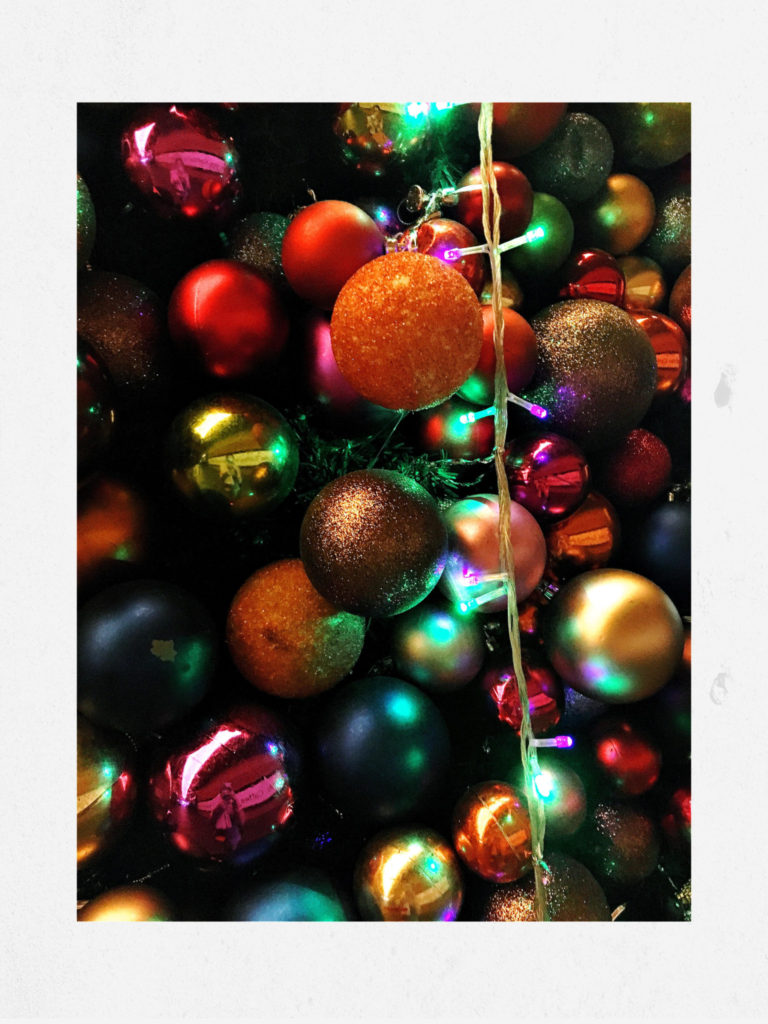
Colourful Christmas ball ornaments on a huge Christmas tree at a nearby mall. The popping colours and lights was a lovely sight to capture.
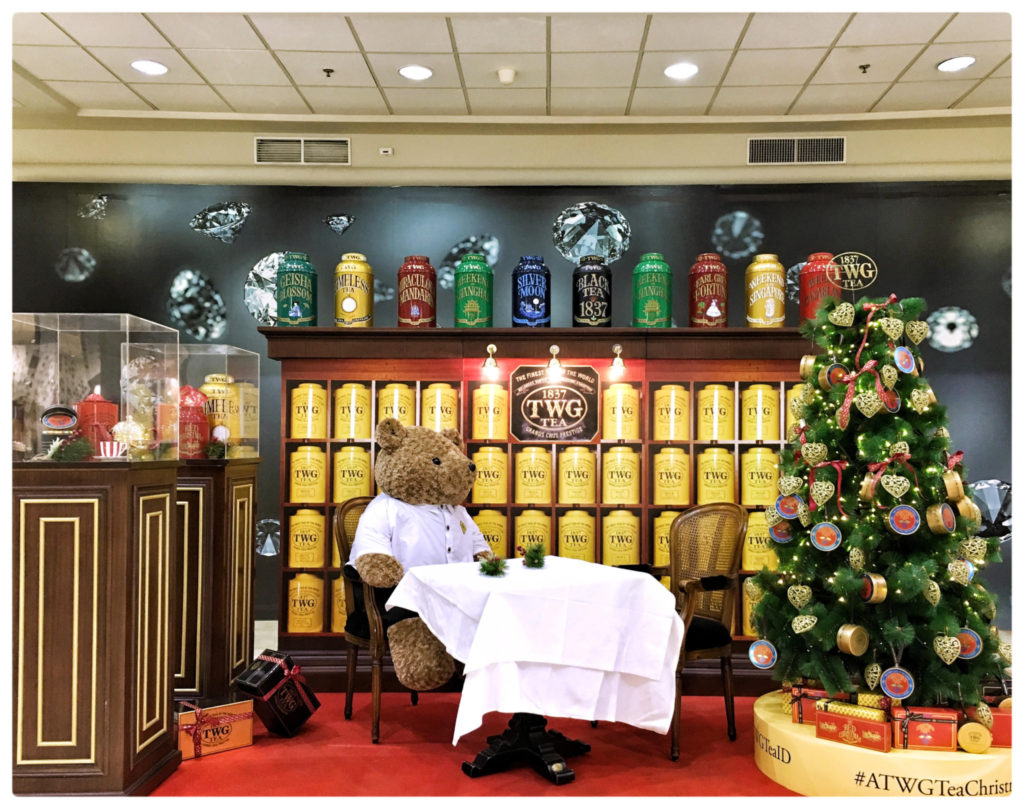
A beautiful framed setting done by TWG Tea at a nearby mall. As i was walking past, I noticed a girl sitting next to the teddy bear and her friend taking a picture of her. The colours and moment itself intrigued me to capture it as it is.
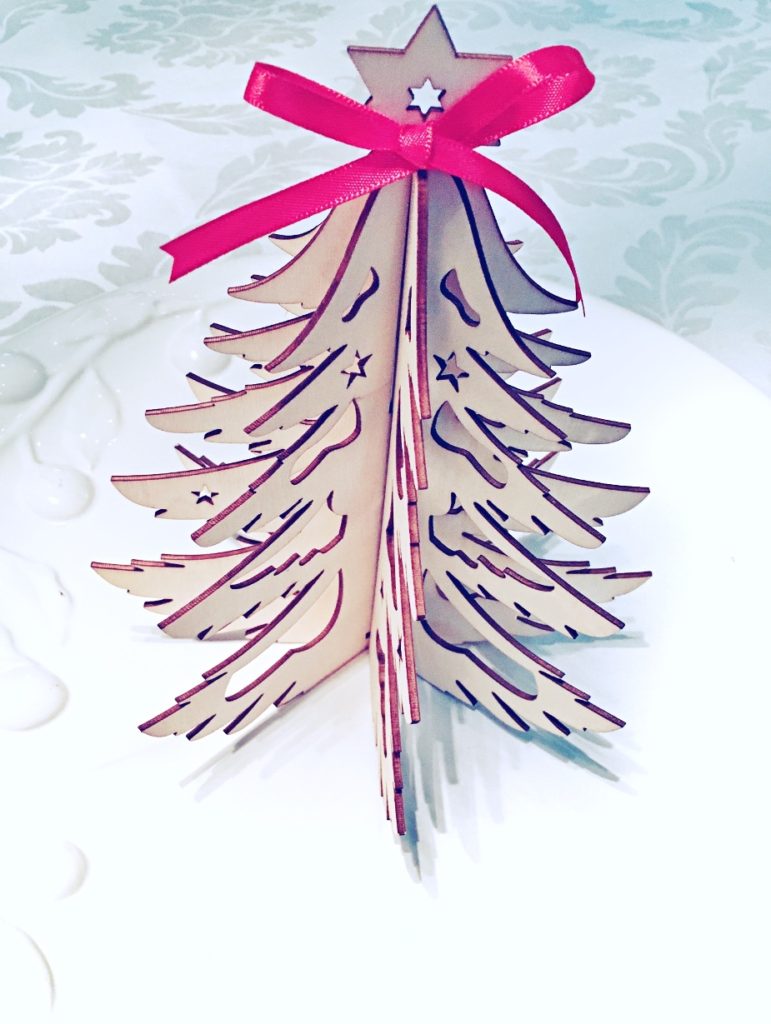
Although, Christmas doesn’t hold a special meaning to me, someday, I would love to experience this festive season in countries that celebrate it. So, I can also experience the spirit of joy and bliss.
Elaine’s contribution
A huge part of Christmas for me is being thankful for, and spending quality time with, my family and friends – particularly my husband and our two boys. Our lives are pretty hectic; we’re always rushing from one thing to the next, Monday – Sunday. It’s all good and enjoyable, but hectic. So the few days we have over the Christmas period, where deadlines and school runs are thrown out of the window, are very special.
Playing board games and watching films together. Catching up with friends. Having late night adventures in the woods with our boys and their torches. Watching my kids playing and running free, without a care in the world. Like children should. Watching the adults behaving like kids again too. Enjoying the magic of school nativities and music concerts. Eating mince pies that we don’t even like. Wearing silly jumpers and daft Christmas accessories.
Enjoying long walks in the cold.
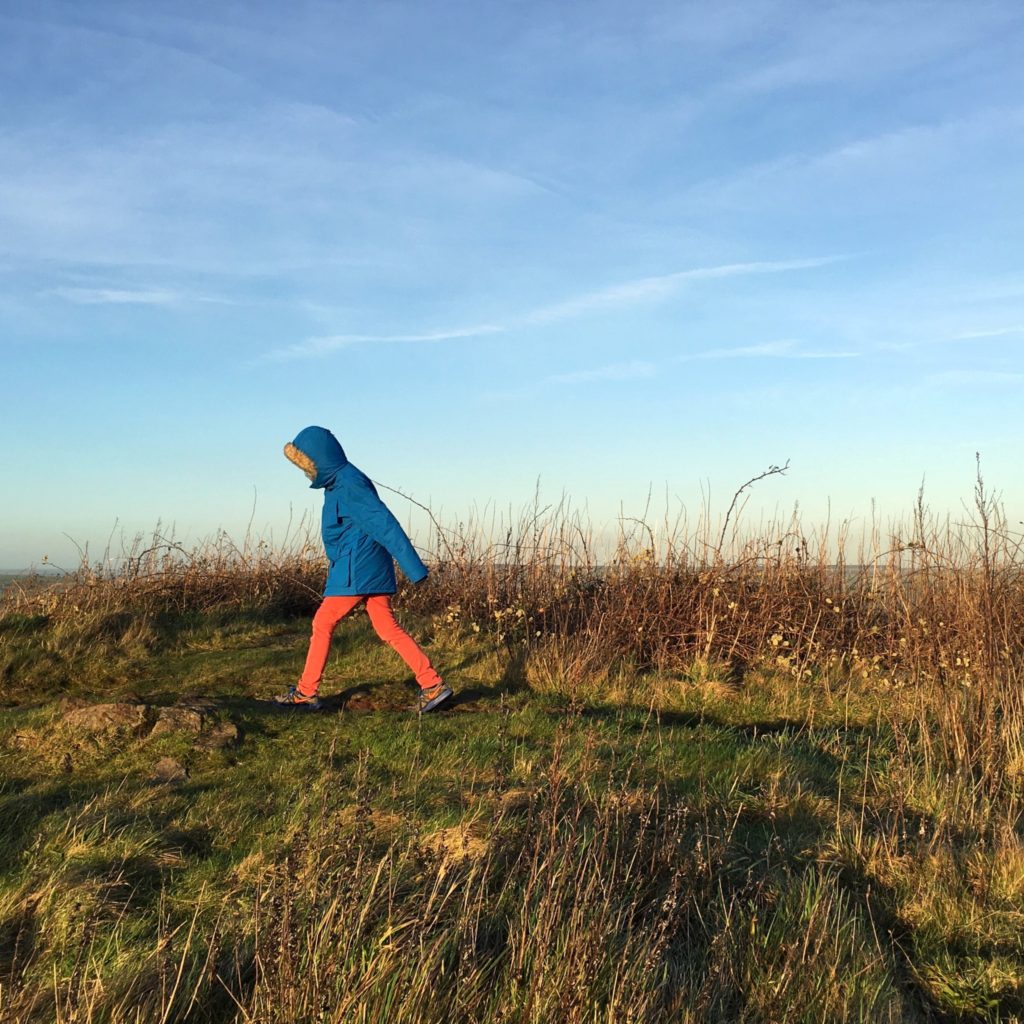
Not setting the alarm clock.

Decorating the tree together.

Remembering dear loved ones.
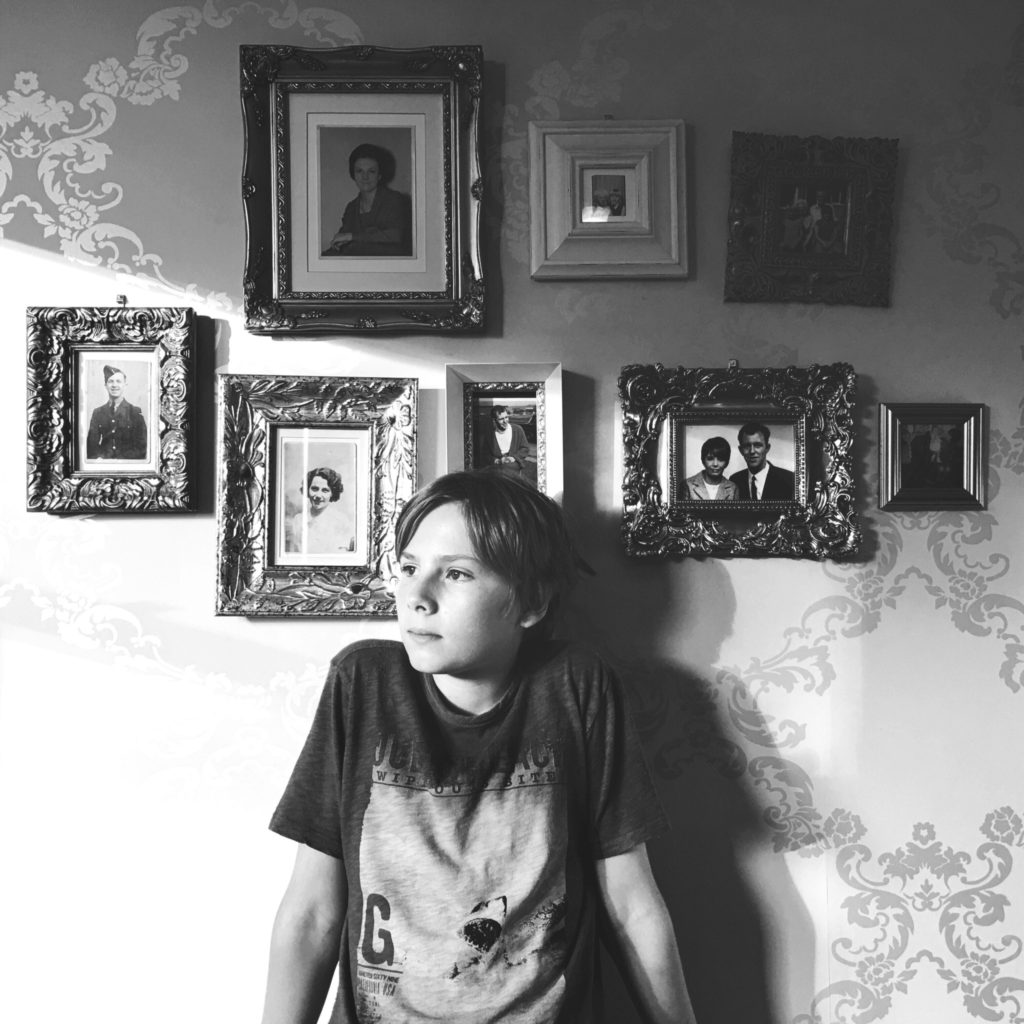
Enjoying the little things.
Joe’s contribution
Because I work for a non-denominational church a lot of my time revolves around special events around the church. My wife and I have to get creative with our time to enjoy the holiday with our kids. We have our usual family traditions like decorating our house and listening to Christmas songs by Louis Armstrong. We also drive to neighborhoods and marketplaces adorned with a lot of Christmas lights and if when we can afford it, we will go to Disneyland to enjoy fake snow and watch people play at the skating rink.
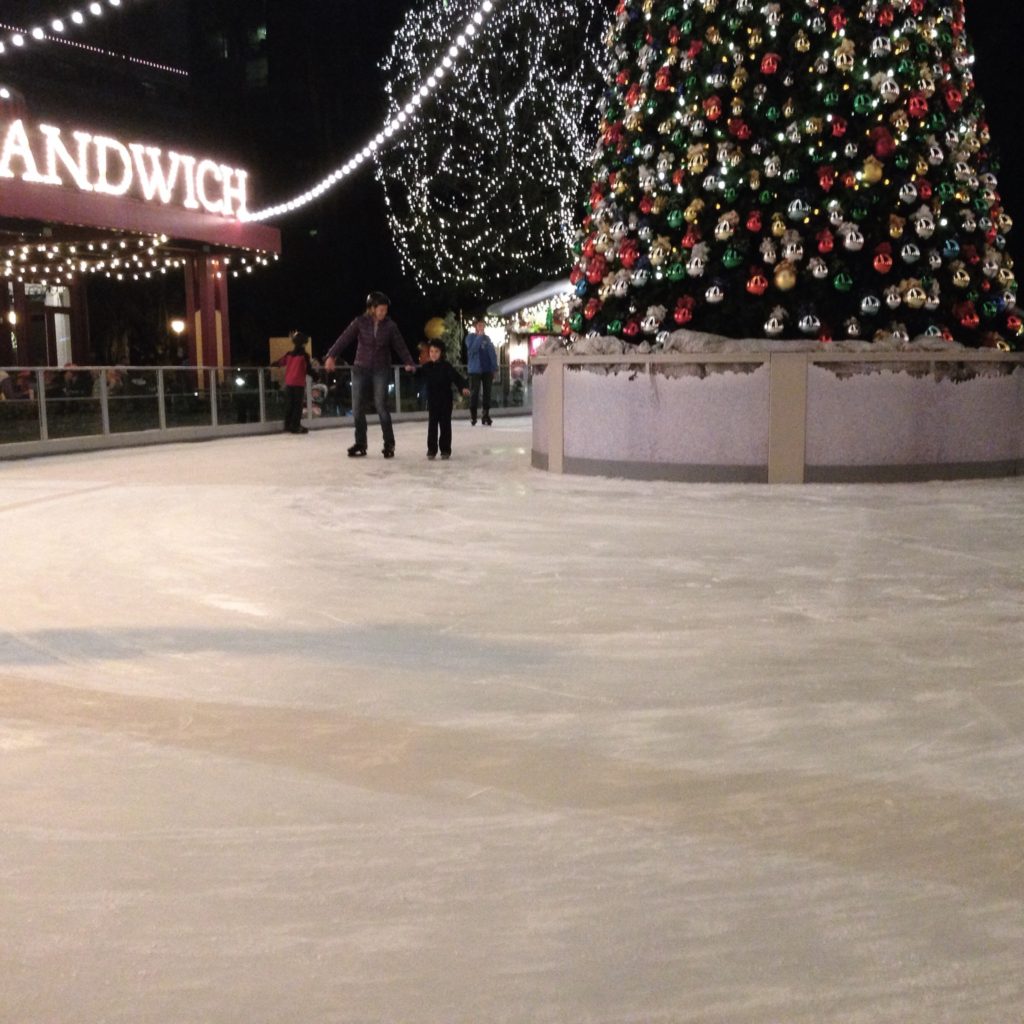
The weather folks say that it snows in my region along the coast of Southern California only once for every hundred years, so unless we drive 2 hours up to the local mountains, any expression of “White Christmas” is man-made.
My family wanted to focus more of our attention on people in need this year. Our kids participated in Operation Shoe Box and filled a shoe box with gifts and a note to be given to a child on the other side of our world. Locally, I went with our church group to deliver groceries we put together to families nearby, so they could have a Christmas dinner.
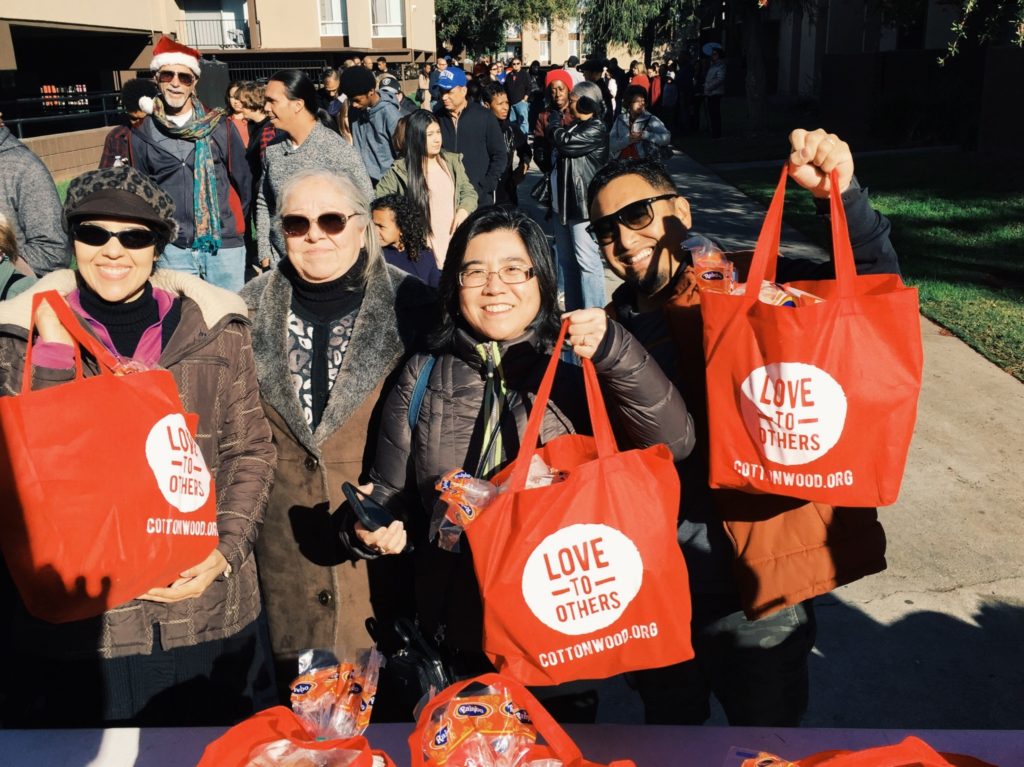
It’s a special time of year for us. We could go insane trying to keep up with all of the traditions that go along with this season. Plus, it is too exhausting to get swept up in the shopping frenzy that happens from Thanksgiving to New Year’s. At my home, we try to simplify how we the celebrate birth of our Savior Jesus Christ by helping folks in need and getting together with family and friends.
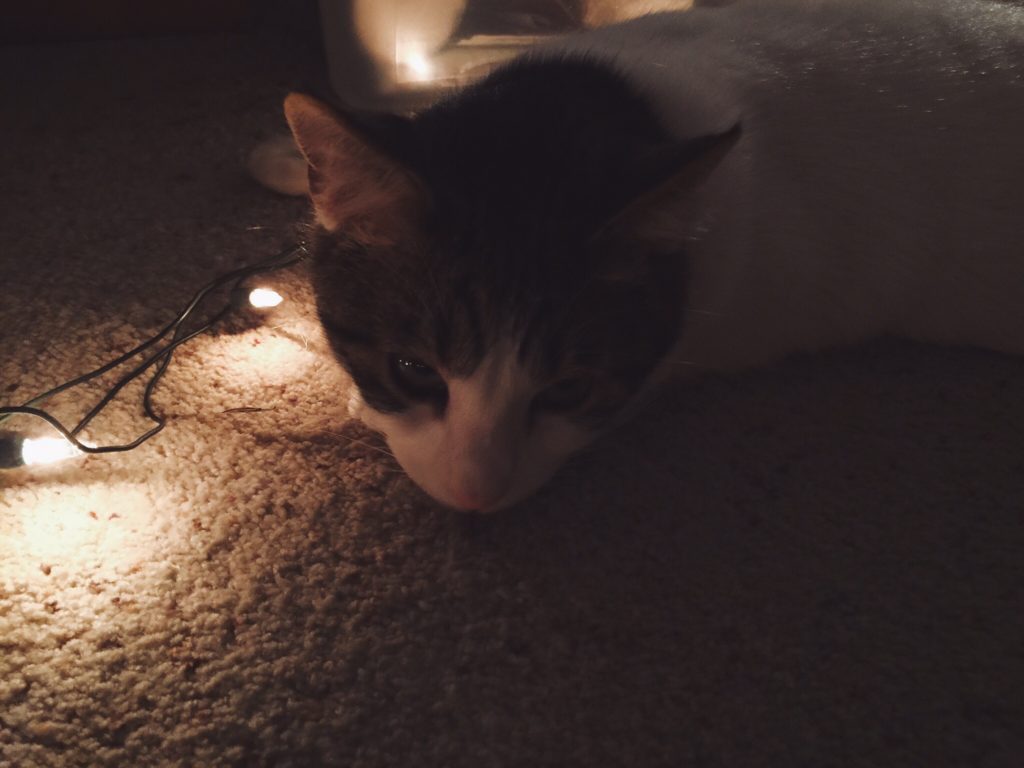
Susanne’s contribution
December, the darkest of the months. I feel the lack of shadows, I feel in me the lack of light.
Yet Christmas gives me hope. It brings light, all sorts of lights: tiny little ones, bright ones, yellow, red and green, the white paper stars we set up on our window sills early in December. Christmas celebrates light and reminds me that nothing lasts forever, not even the darkest days. That light remains. That I’ll have the shadows back soon again.
I’ve always loved Christmas, how it changes us, the magic of it, and I spend the Christmas days together with my loved ones.



Hope you enjoyed our little contributions from the Grryo Family to spread the joy and spirit with you all.
Thank you to each and every one of you for your participation and contributions throughout the year. We deeply appreciate it.
We would like to wish all of you a Merry Christmas and a Blessed 2017!
Enjoy the holiday season with your loved ones and we look forward to another exciting new year with you!

by Romina Mandrini | Dec 21, 2016 | Romina Mandrini, Stories, Storyteller
“If you wish for light, be ready to receive light.” Rumi
As the season of gift-giving fast approaches, I’ve been thinking about the gifts I’ve received this year – images graciously given to me by my trusty old camera.
I’ve been interested in the practice of contemplative photography for a while now, and through it, continue to discover new and surprising things about this craft. A few years ago I came across The Little Book of Contemplative Photography by Howard Zehr, a book I have come back to again and again, not only because it is a quick and easy read, but because of the wisdom contained in its pages.
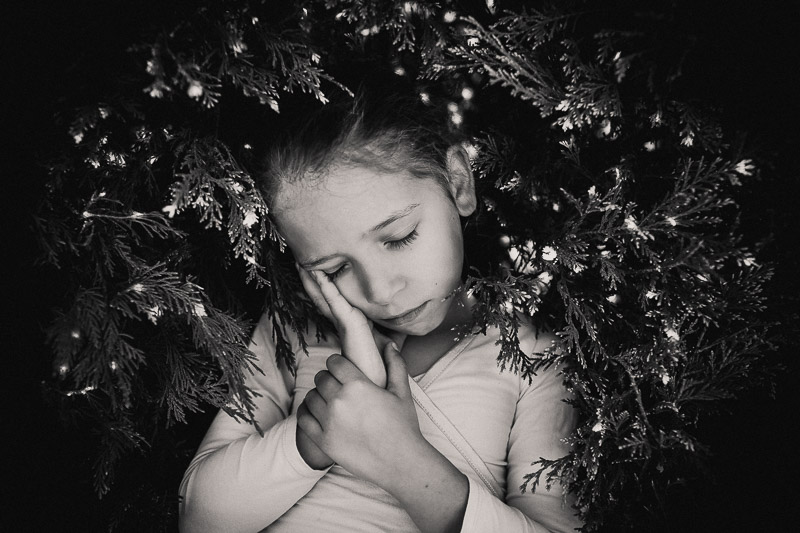
There is a particular chapter in this book that continually challenges me and makes me rethink my approach to photography. In this chapter, Zehr discusses the language and metaphors of photography and how aggressive and predatory they are. History shows that photography was once considered a gentle and respectful art, but its image as an art form became much more aggressive when small handheld cameras were introduced in the 1880s. It was around this time that people started going on photo shoots, carrying their arsenal of equipment, aiming their camera, taking their pictures and capturing their subject…metaphors that gradually became deeply embedded in our culture and consciousness. Before long, advertisers were marketing camera products that would ‘shoot to kill’ and camera store services that would ‘blow you away’. We began to use telephoto lenses and, more recently, smart phones to covertly photograph people. This shift, where the act of photographing became something of a hunt, has had a massive impact on the way we practise photography today.
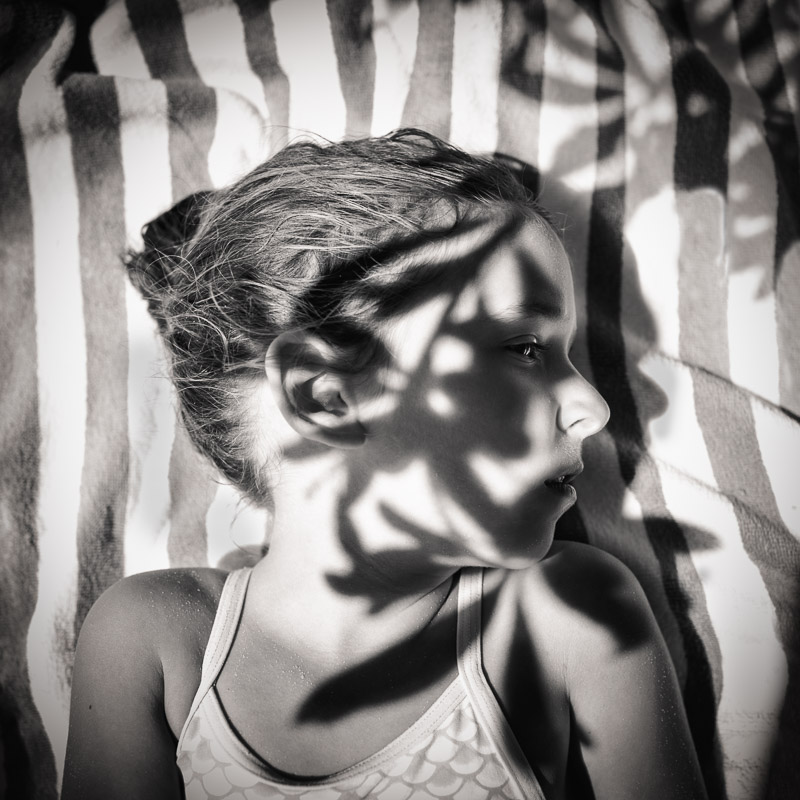
When I first read about this idea, I’d been learning photography for a couple of years, so naturally I began to consider this in relation to my work and my process. I’d certainly been striving to ‘capture’ my children with my camera and getting frustrated when I didn’t get what I wanted or when I got something ‘wrong’. This put me in the position of taker, not receiver, and of triumphant predator when I did get something ‘good’.
But, the reality is, as Zehr quite simply points out, that when we photograph, we do not actually reach out and take anything. Light is reflected off our subject and enters through our camera’s lens, projecting a picture. So, essentially, the image is being received, not taken. And for me, here lay a secret to experiencing photography in a new and more profound way: I could open myself up to receiving images; I could change my perspective so that I no longer viewed images as trophies, but as gifts.

So where did this leave planning a conceptual photo session or the discipline of hunting out and capturing an image? Exactly where they belong, in their perfect time and place. Because whatever the situation, as we stand behind our camera we have an opportunity to experience new possibilities. We can do that by recognising that there is so much more to photography than our skill and our equipment – or, as Zehr so aptly puts it, we can shift our perspective so that we approach our art making with ‘wonder, respect and humility’. In other words, instead of seeing photography as a conquest, we can see it as contemplation; instead of seeing it as an exposé, we can see it as a revelation; instead of being concerned with control, we can embrace surprise.

No doubt, we’ve all experienced photographic surprises – sometimes by sheer accident (like when we unintentionally press the shutter) or sometimes simply because an image was unexpected (like when we think we didn’t ‘get’ anything good, but are later surprised to find that we did). But what interests me most is not this lack of control; rather, this concept of awe and humility, as a mindset and approach towards art making in general. By visualising myself receiving rather than taking images, I have been continually taken aback by what light has revealed inside my camera. I’ve relaxed. I’ve opened myself up to mystery. I’ve not always been given what I wanted, but what needed to be expressed was expressed in a new and surprising way. This surrender has become a very sweet part of my practice. Because it’s not only the unexpected images that are gifts – they are all gifts.

Of course, this change in attitude is easier said than done. Ironically, it takes a form of conscious effort to remember to let go, and even now, though I’ve intellectually understood the concept, I sometimes fall back into rigid ways of thinking. But whatever happens, the intention is set: to place myself in a position of receptivity and be surprised by what’s out there. As Jay Maisel once said, ‘The pictures are everywhere. If you’re open, they will find you.’ I try to be aware but not anxious because, at the end of the day, I am just a tiny part of the equation. There is something bigger, more magical and mysterious that takes place when my hands get a hold of the camera – something I can’t actually control.
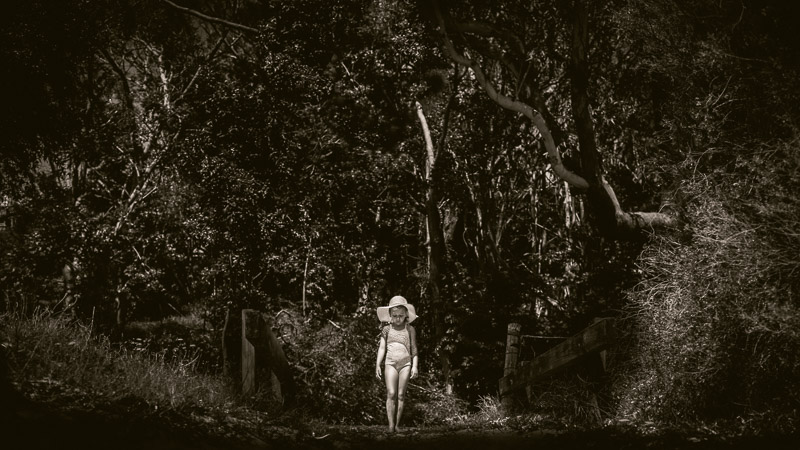
I was recently amazed to discover that one of my favourite photographers, Sally Mann, had made references to this mystery and magic, and that she herself viewed photography as a humble act of receiving. In Immediate Family, she wrote, ‘At times, it is difficult to say exactly who makes the pictures. Some are gifts to me from my children: gifts that come in a moment as fleeting as the touch of an angel’s wing. I pray for that angel to come to us when I set the camera up, knowing that there is not one good picture in five hot acres. We put ourselves into a state of grace we hope is deserving of reward, and it is a state of grace with the Angel of Chance.’
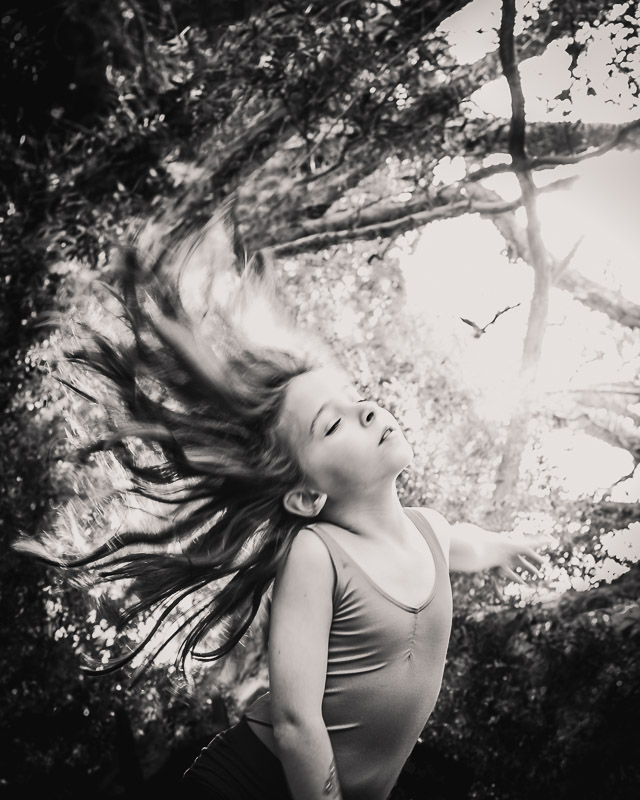
And so, as the year draws to a close and a new one begins…whether you are a street photographer or a still life photographer, whether you photograph landscapes or your own family, and no matter what camera you use…there are gifts waiting for you. Be open to receiving them, and they will find you.

by Abraham Carrasco | Dec 9, 2016 | Abraham C, Stories, Storyteller, You Are Grryo
For 6 months trip by the Otomi – Tepehua,
Indian zone of the state of Hidalgo, Mexico area.
Most people who allowed me to portray their faces do not speak Spanish.
They have their own native language. They harvest coffee,corn,
peas, beans etc …
The small stories that accompany each portrait are words, thoughts and
ideas from both sides.
Just as the photographs were taken, a translator told me what they thought.
This is a sign of the profound strength of our state, Hidalgo.

The sun, the only witness who saw the afternoon’s work, marked my face more than my husband. The night came only to ask “What did you do? What’s to eat?” No one more than the sun, insolent, asked: “How much do you have to work today, so anyone will notice?”
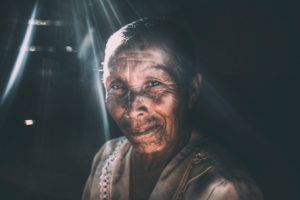 “Above, always above.”
“Above, always above.”
We see the light. We prefer because we care for others, because we do something eternal day to day. Above, the place we come from and where we are going. Where the routine is forever and always the same. Here in this heaven, it helps us all to be one. The light comes and enlightens us; leaves us at night, because the next morning we will know that this, too, is the afterlife.
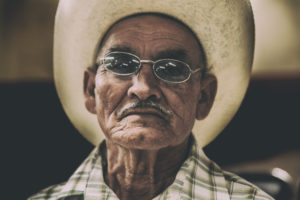
My eyes see nothing, always the same, always the field, always the rain. I am a survivor of my office, rain flooded fields. Hope fills my hands with mud every morning.

You see my face marked? You’re looking at all the lines on my face?
I do not understand what you say. I want to know who you are and why you came to my home to see me.
Wood has struck me with oils and textures. He did not return and could not stop to wait; wood waits for no one.
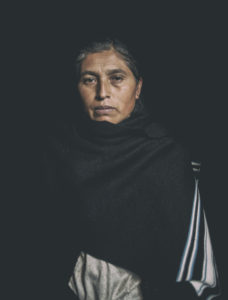
I had no chance to dream.
I’ve been in the field since the beginning of my memory. I know no change. In the field there are no options. The field is routine, very noble and very beautiful. But without options, they believed that the earth would not hold, and showed them the power the land gives me when I’m in the harvest.
They need to know their opportunities out of the field, but someone has to show them that they cannot be afraid to leave the place where they were born. So I’m here in front of you. I know my chances.

Road over the streets:
pavement, dirt, dust…
I hope for someone, just hope. Road and wait.
I am what you have forgotten: the street pavement, dirt and dust.

The field has always been my way of life. Water, wind and poverty have always gone ahead. My happiness does not survive with corn and coffee. Flying with the annual harvest where happiness flooded every home. Buyers come quickly to see us. We cannot always sell at our discretion. We are not always happy.

I cannot look at you.
You are a foreigner and nobody knows where you come from.
Who buys from you?
I have stove ash all over my mind and you do not stop using that thing to steal my face…

Raided under my cheeks, under my cheekbones, survives a smile that stands forged by fire brick. The lips that support it have been sullied, wasted and returned to sully the river. Angry eyes that hide more than joys.

Steal my soul because you cannot steal anything else.
My body is dust.
The illusion age.
I was born in a world full of neglect and violence. Rob my soul because men want my body. Rob my soul because it has no economic value; it is useless here. Take her. Transform her into hope and light.
With special thanks for your participation in this project:
Timo Viejo(@timoviejo)
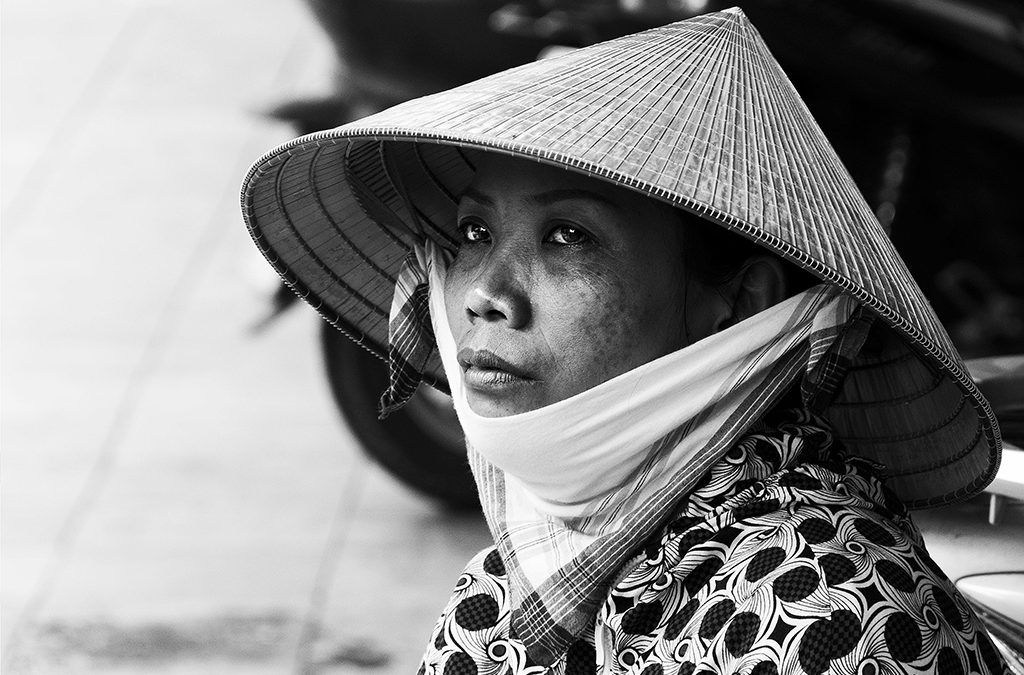
by Nagore Tamayo | Sep 30, 2016 | Nagore Tamayo, Stories, Storyteller, You Are Grryo
About three years ago I created an Instagram account and started taking photos with my mobile phone. This was my first contact with photography, or at least the first time I was exposing my photos to the world. At that time, I thought I would probably get bored soon and look for something different, but when I found myself expressing different emotions and feelings through photography and discovered this new visual language, I knew it was just the start…
When I got my first reflex camera two years ago, I definitely felt in love with photography and my camera became part of me, so I take it with me everywhere I go. You never know what you will find out there! Sometimes I just wait for something special to happen and other times something special finds me. I just want to be ready when that happens.
I consider myself a “soul hunter” who enjoys street photography, street portraits and creative photography. Everything which is spontaneous and dynamic automatically grabs my attention. Something similar happens with street portraits: that moment when you suddenly get your target looking at you and you get a raw emotion is priceless.

Found you
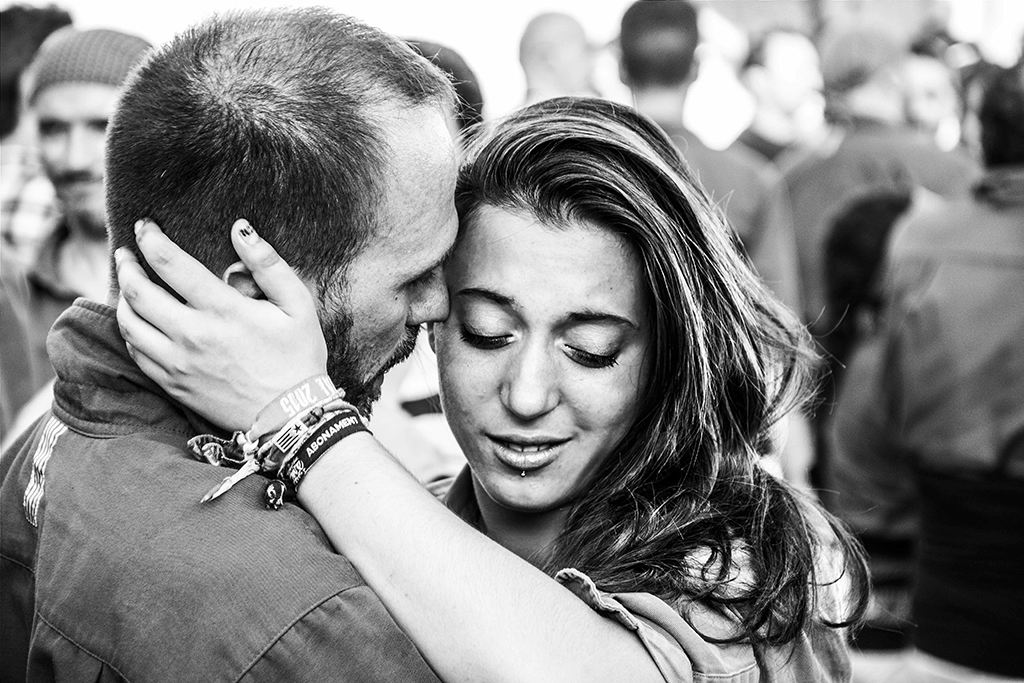
Feelings
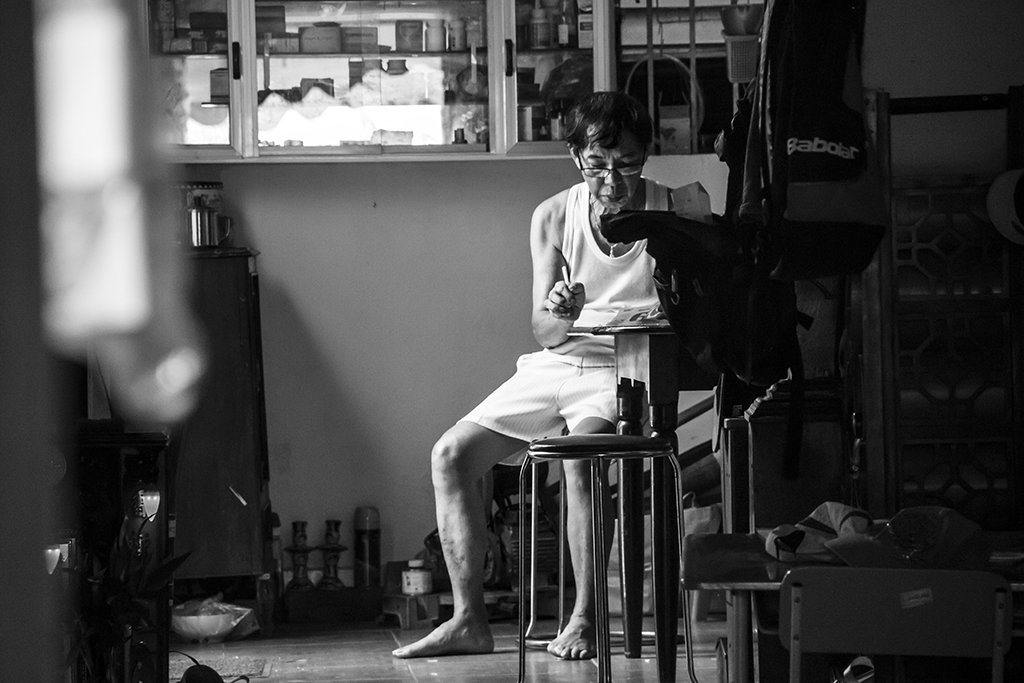
Morning duty

Support
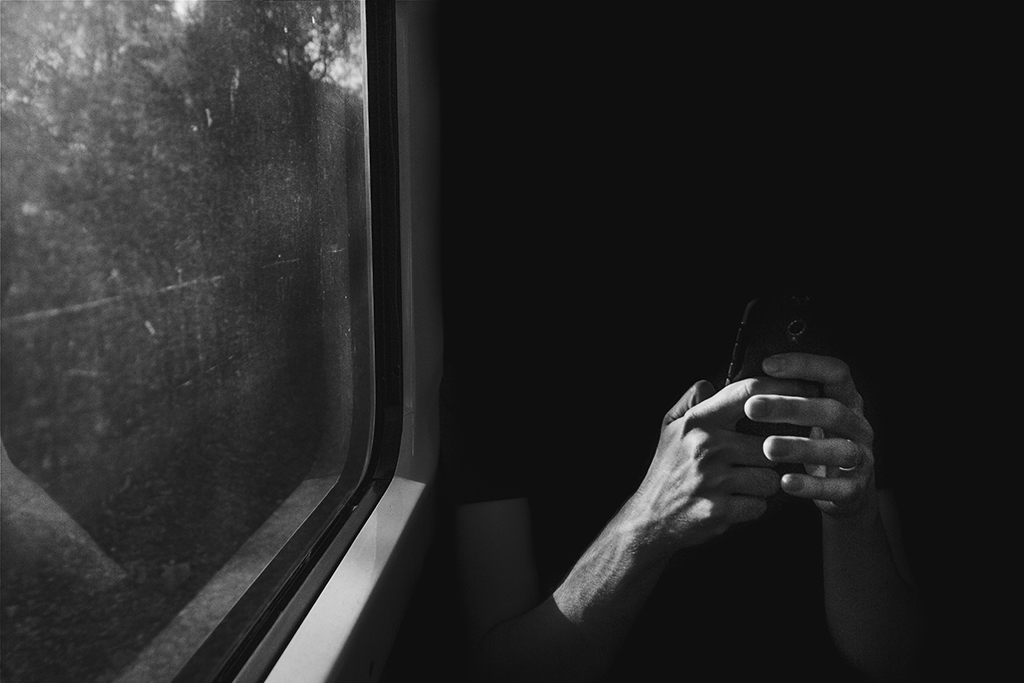
The passenger
When I take a photo I wonder what that person’s life is like; what’s the story behind that scene or behind that look. I like to imagine that whoever looks at my photos thinks about those questions too…
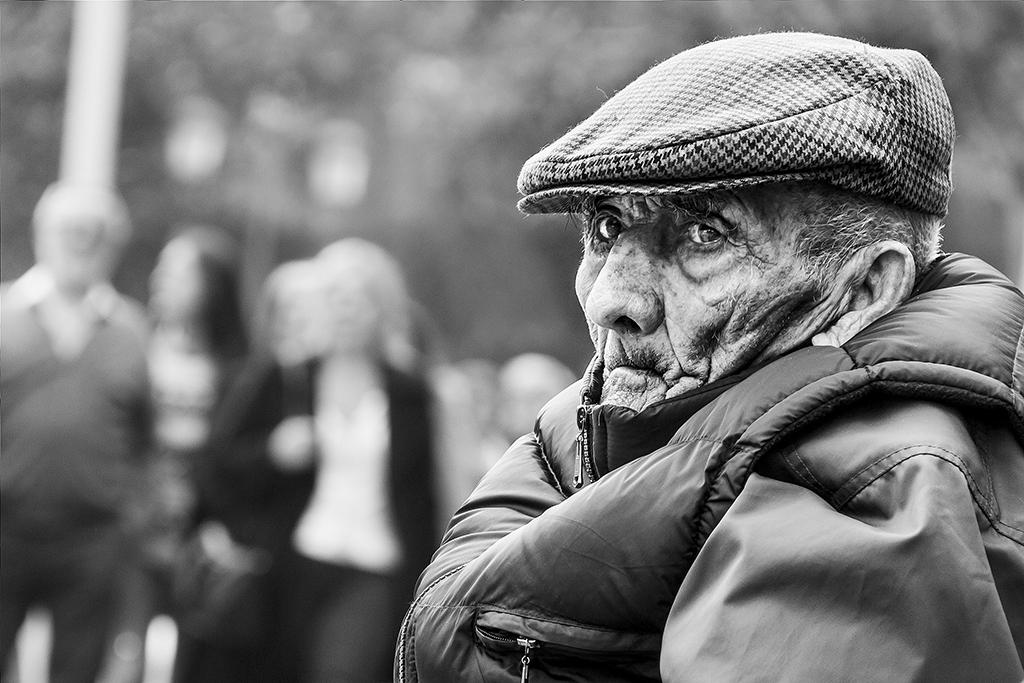
A life through his eyes
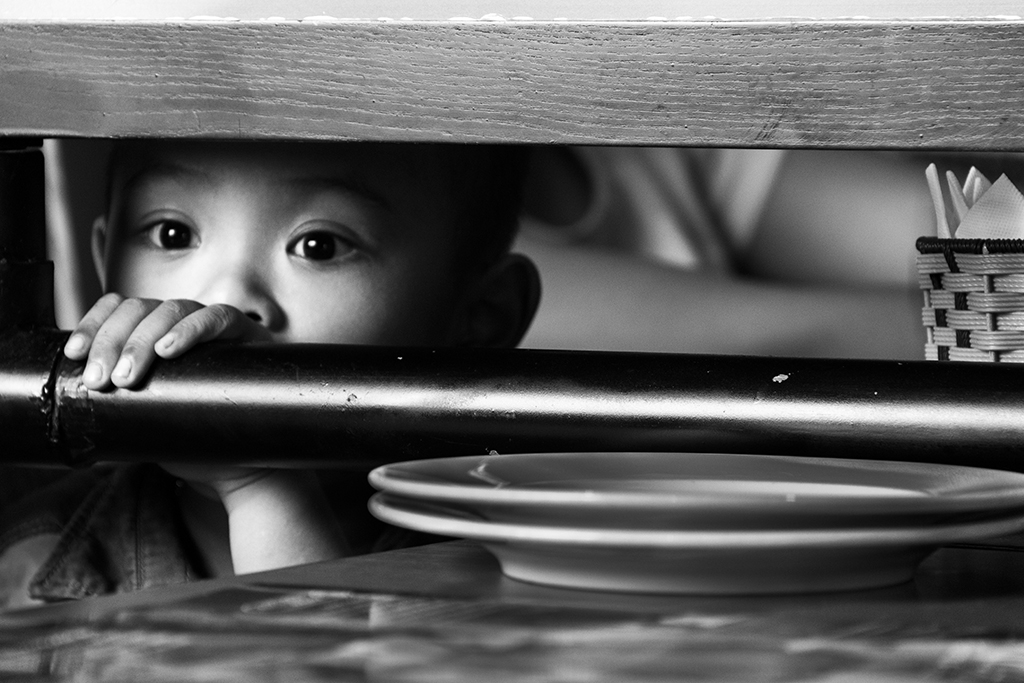
Look
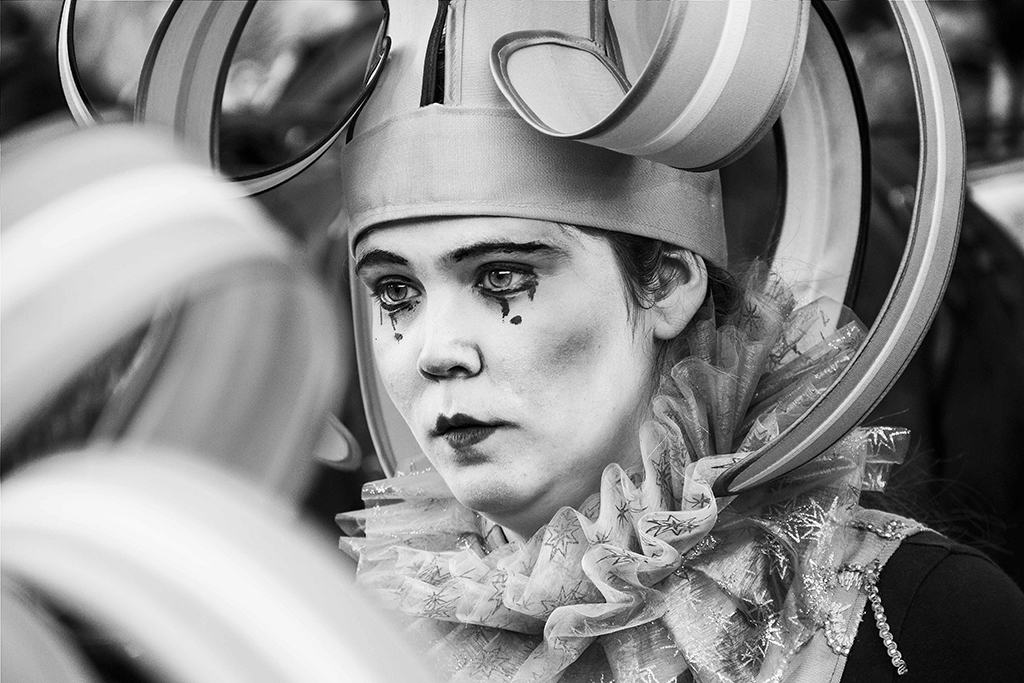
Lost soul
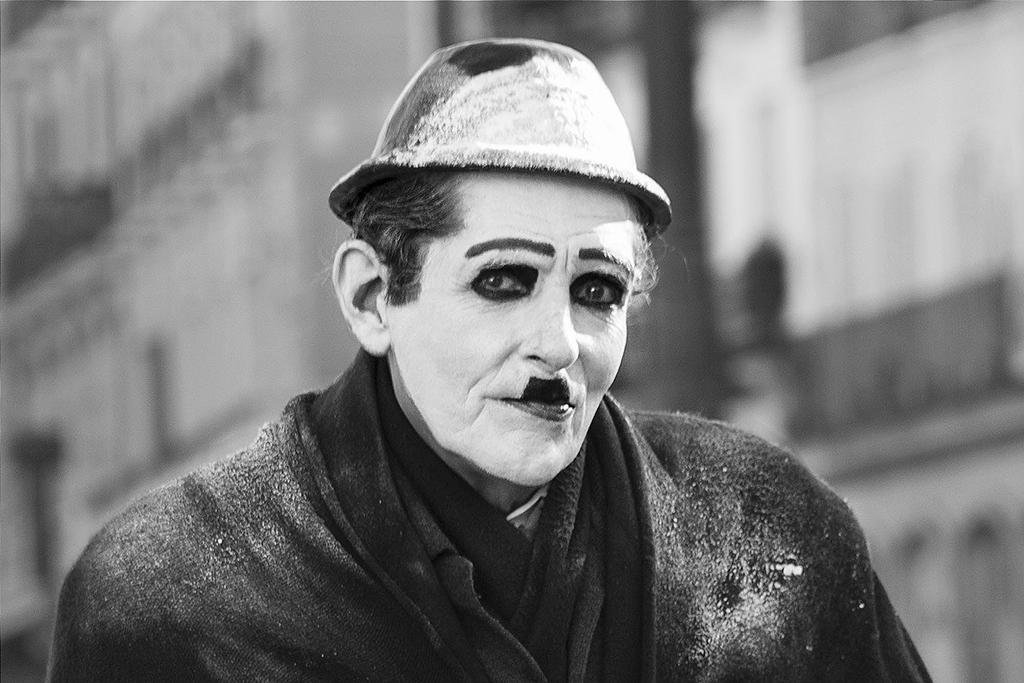
Melancholy
From time to time, when I’m not in “hunting mode”, I enjoy exploring the creative side of photography. To me, creative photography is about finding a way of translating an idea or my view about a given concept into a photograph. It is also a good way of keeping inspiration alive and finding new challenges. When you can’t go out there to discover new places and people to take photos to, why not create them yourself? Some of my pictures are taken at home, in a little room which I call my “creative corner”. A reading lamp, a tripod, my camera and imagination is all I need to satiate my photography thirst 🙂

Smell: The perfume
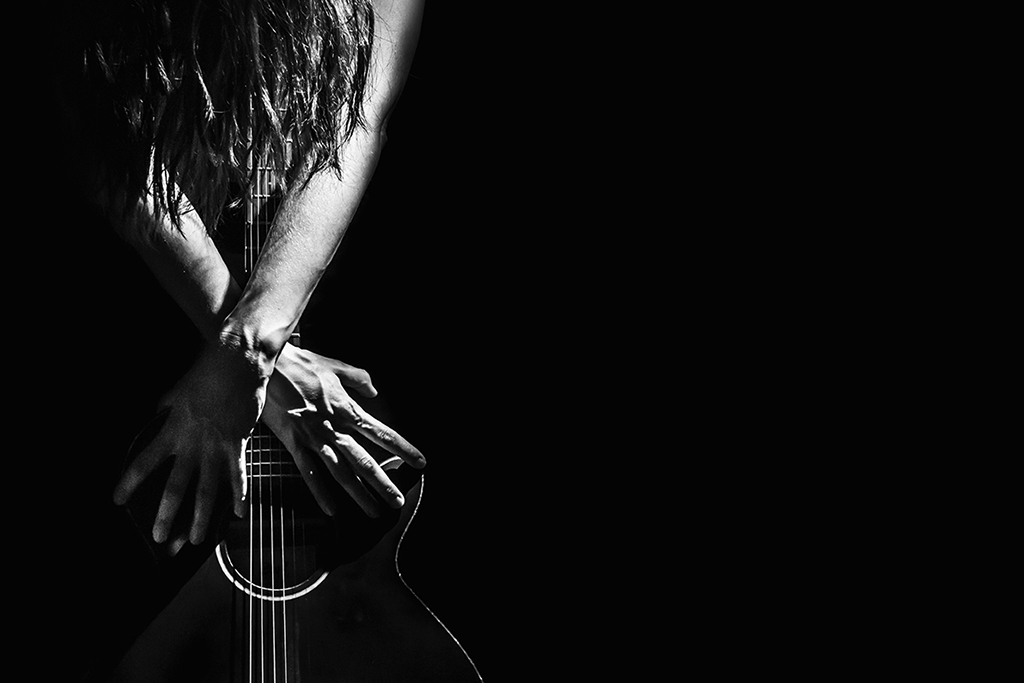
Hearing: Surrendered to the music
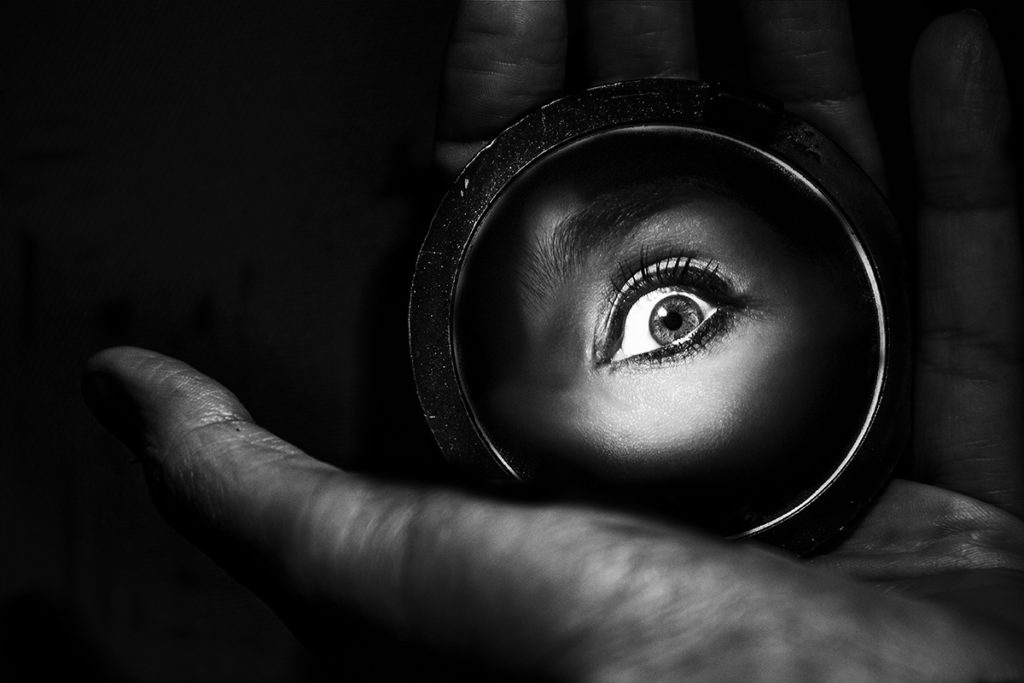
Sight: The secret

Breathless : Between the light and the shadow
Photography has certainly changed the way I see the world. As my Instagram’s bio says: “Beauty is in the ordinary things you see every day”. I like challenging myself to get something beautiful from places, people and/or objects around me in my day to day. Trying to find beauty anywhere around me is kind of a romantic exercise that has helped me educate my eyes. However, I must admit that travel photography provides very unique and exotic moments and opportunities to take wonderful photos too, so you will find travel photographs in my gallery too.
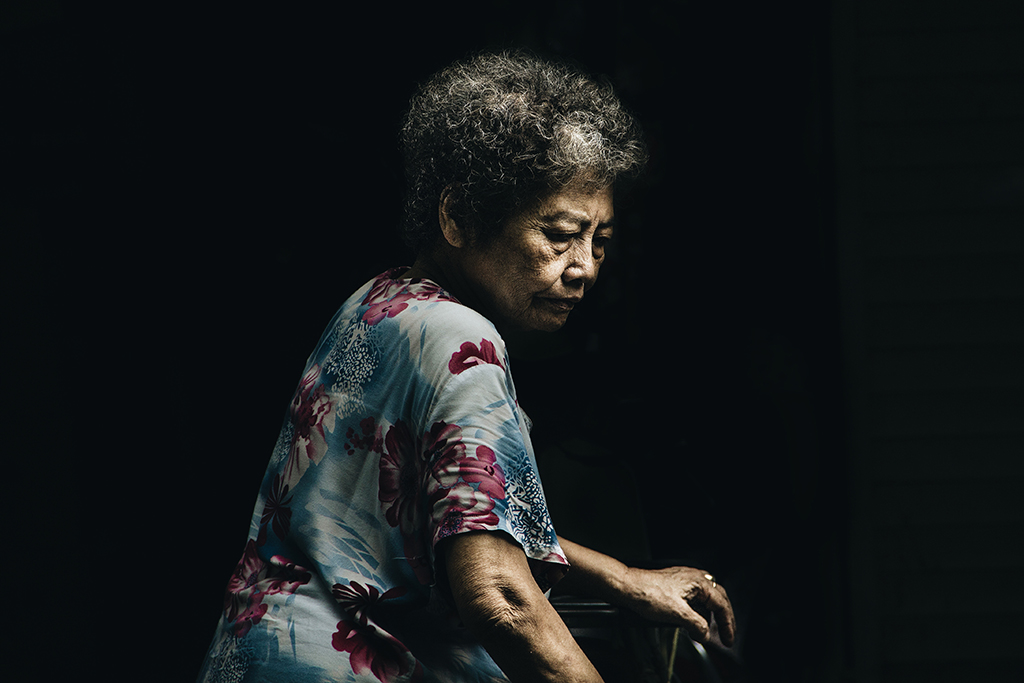
From the shadows

The florist
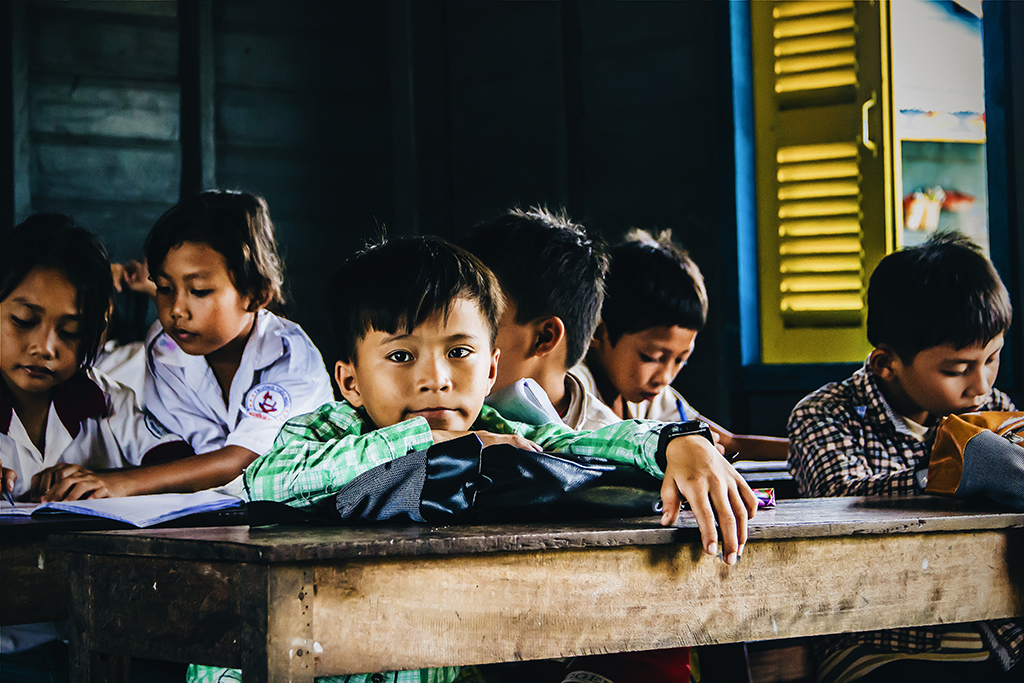
School time
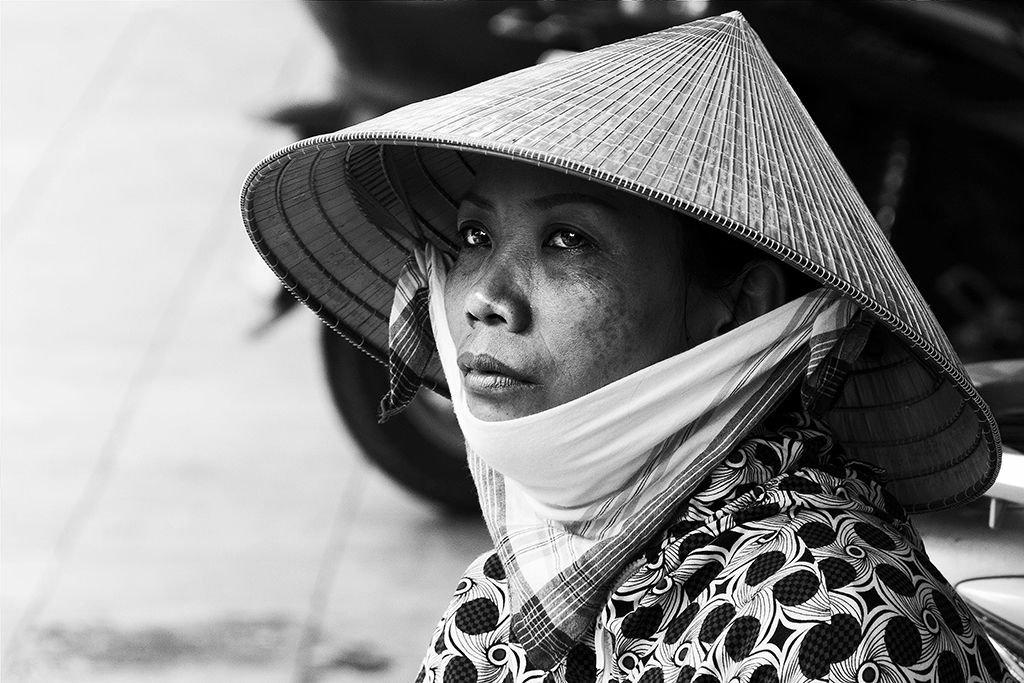
Thoughts

Market life
When it comes to editing, you’ll see that most of my pictures are black & white. I think black & white helps isolate the subject and get the focus on the right spot, although in the end, it is all about the light. Even though I have a personal preference towards black and white, I try to get out of my comfort zone and post color photographs as well.
As an amateur photographer, I’ve learned all I know so far by experience. I have listened to different conferences around photography but never took any class. I have also had the chance to participate in several group photo exhibitions. A few years ago, if someone would have told me that I would be exhibiting my work, I wouldn’t have believed it. Self-learning is something I really enjoy and I’m looking forward to continuing growing my skills and expressing myself through photography.
Nagore is a self-taught photographer and a tireless learner. From the Basque Country but based in Barcelona, she enjoys capturing the street life of the places she visits and the soul of its citizens through street portraits. She re-discovered herself through photography a few years ago and hasn’t stopped taking photos since then. In love with black and white photography, she loves playing with the light and the shadows to reinforce the message she wants to transmit with her photos. Besides photography, she enjoys singing and playing acoustic guitar, an evasion of her day to day work as a Computer Engineer.
You’ll find me on:
Instagram | Twitter | 500px
Welcome to my world! 🙂
Caza almas – por Nagore Tamayo
Hace tres años creé una cuenta de Instagram y comencé a tomar fotografías con mi móvil. Esta fue mi primera toma de contacto con la fotografía, o al menos la primera vez que exponía mis fotos al mundo. Por aquel entonces, pensé que probablemente no tardaría en aburrirme y buscar algo diferente, pero cuando comencé a expresar diferentes emociones y sentimientos a través de la fotografía y descubrí este nuevo lenguaje visual, supe que la fotografía había llegado a mi vida para quedarse…
Con la llegada de mi primera cámara réflex hace un par de años, definitivamente me enamoré de la fotografía y la cámara se convirtió en una extensión de mí. Allá donde fuese, ella venía conmigo, ¡nunca se sabe lo que puedes encontrar ahí fuera! A veces toca ser paciente y esperar a que ocurra algo especial y otras veces ese algo especial te encuentra a ti, así que quiero estar preparada cuando eso ocurre.
Me considero una “cazadora de almas” que disfruta especialmente con la fotografía callejera, los retratos callejeros y la fotografía creativa. Todo lo espontáneo y dinámico atrae automáticamente mi atención. Lo mismo me ocurre con los retratos callejeros: ese momento en el que la persona que quieres fotografiar dirige inesperadamente la mirada a tu objetivo y te permite capturar esa emoción pura y espontánea, no tiene precio.

Te econtré
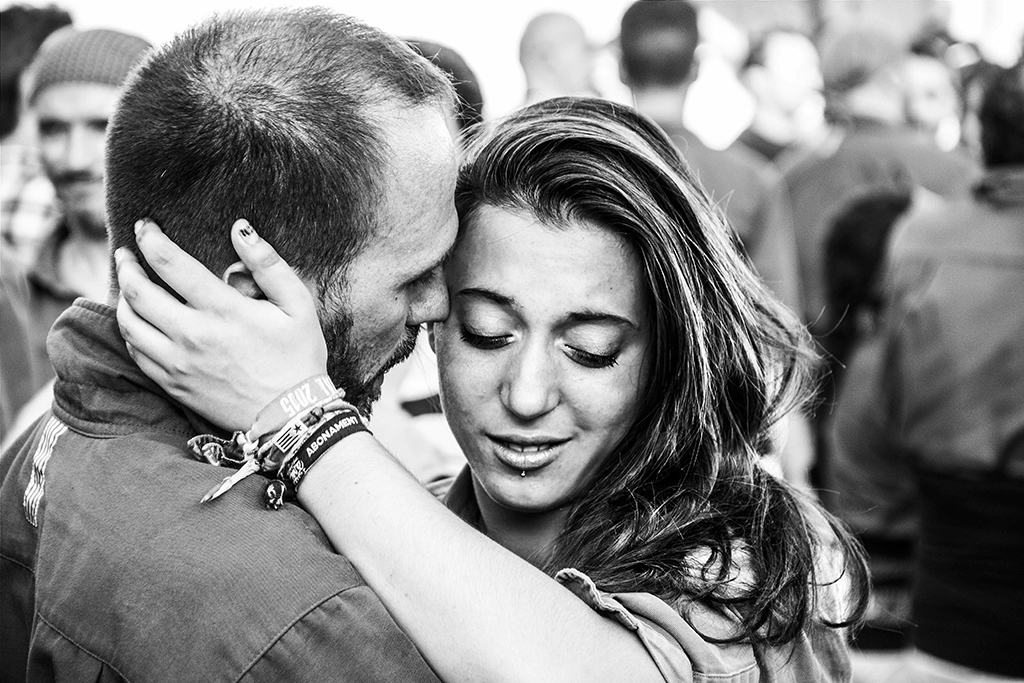
Sentimientos
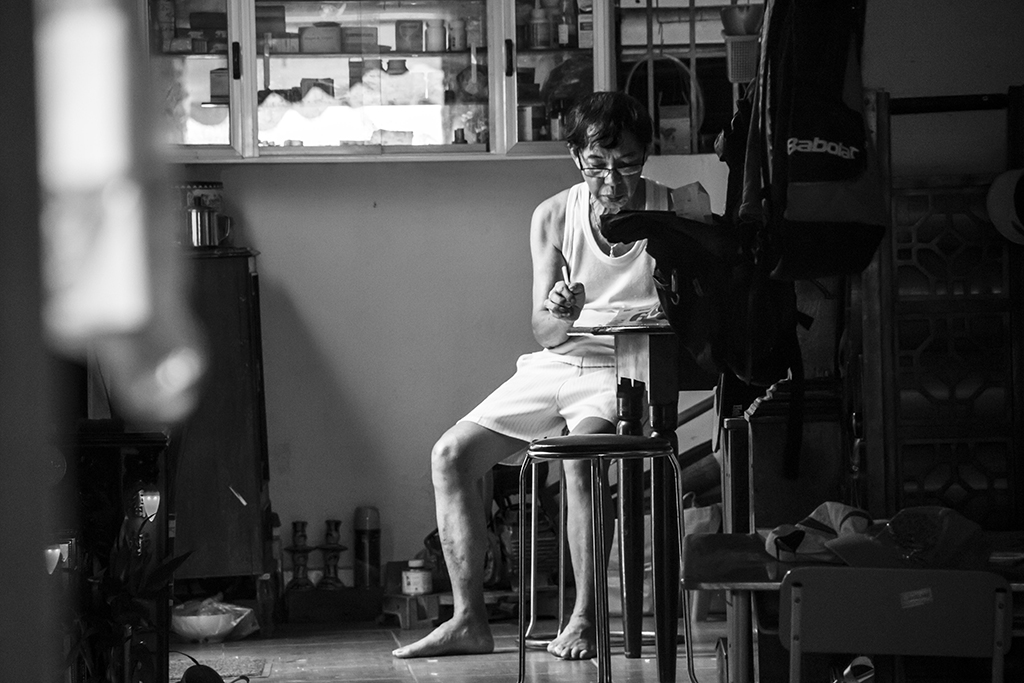
Deberes matutinos
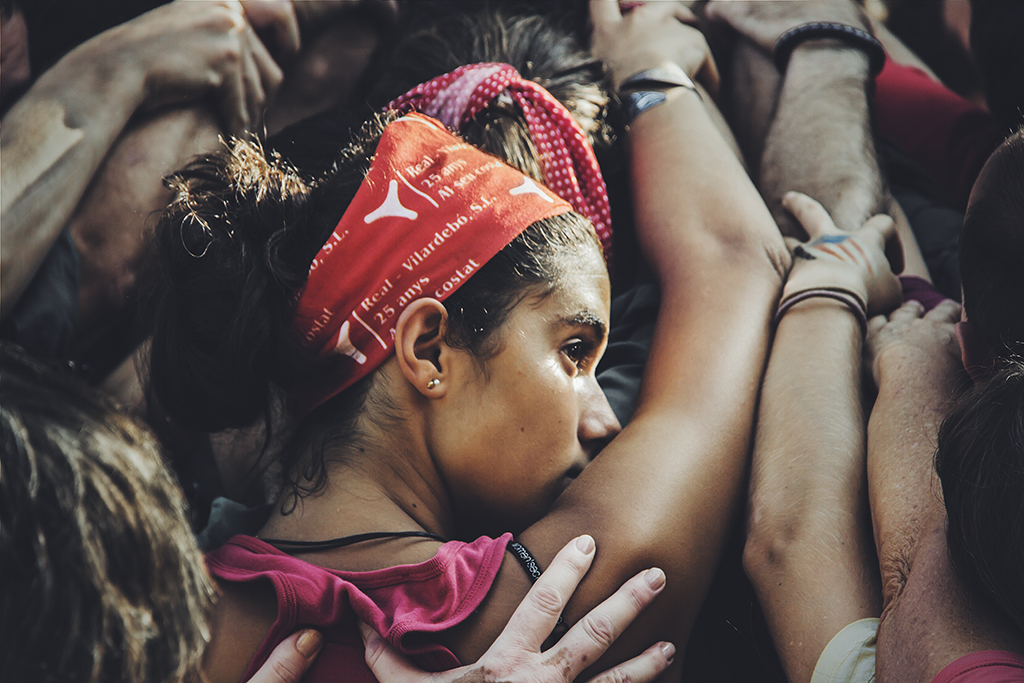
Apoyo
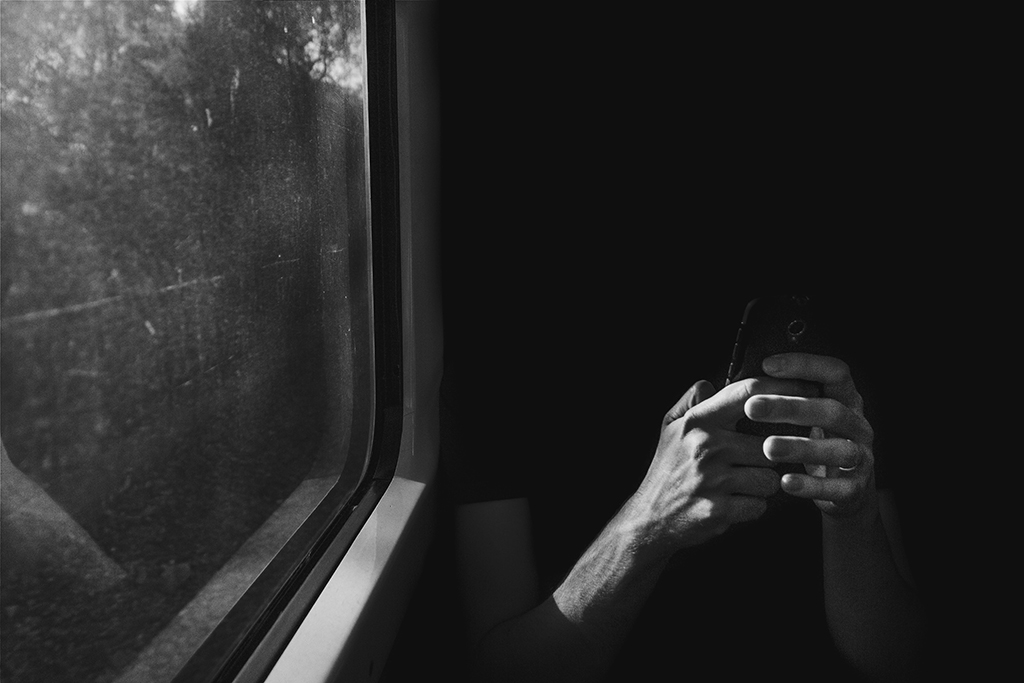
El pasajero
Cuando tomo una fotografía me pregunto cómo es la vida de esa persona, cuál es la historia que hay detrás de una determinada escena. Me gusta imaginar que quien mira mis fotografías, se hace estas mismas preguntas y se sumerge en esa misma reflexión.
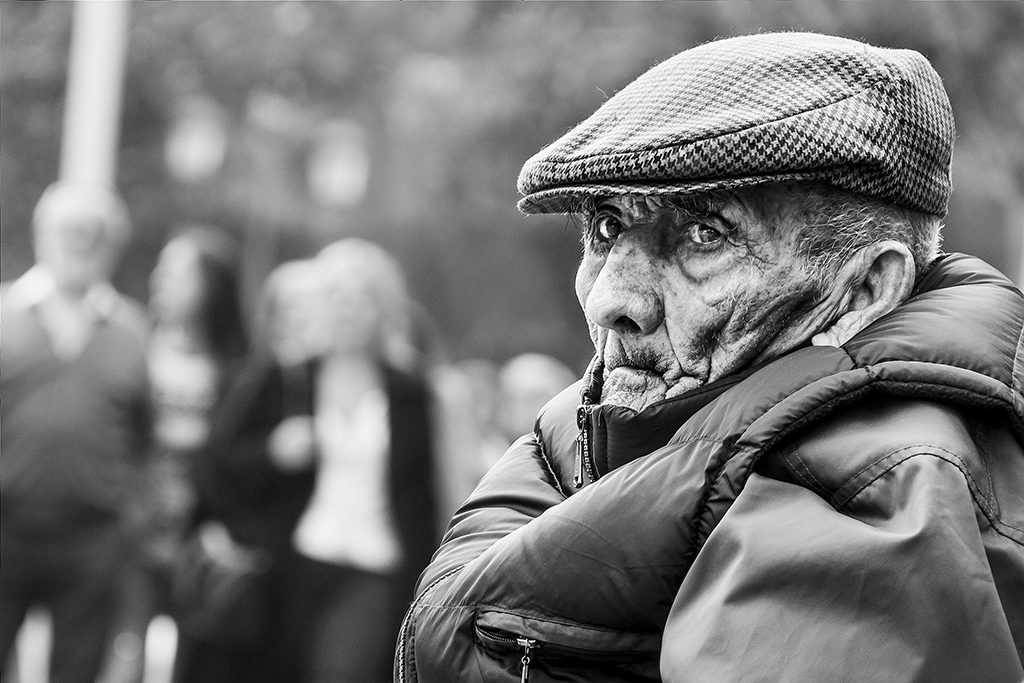
Una vida a través de sus ojos

Mirada
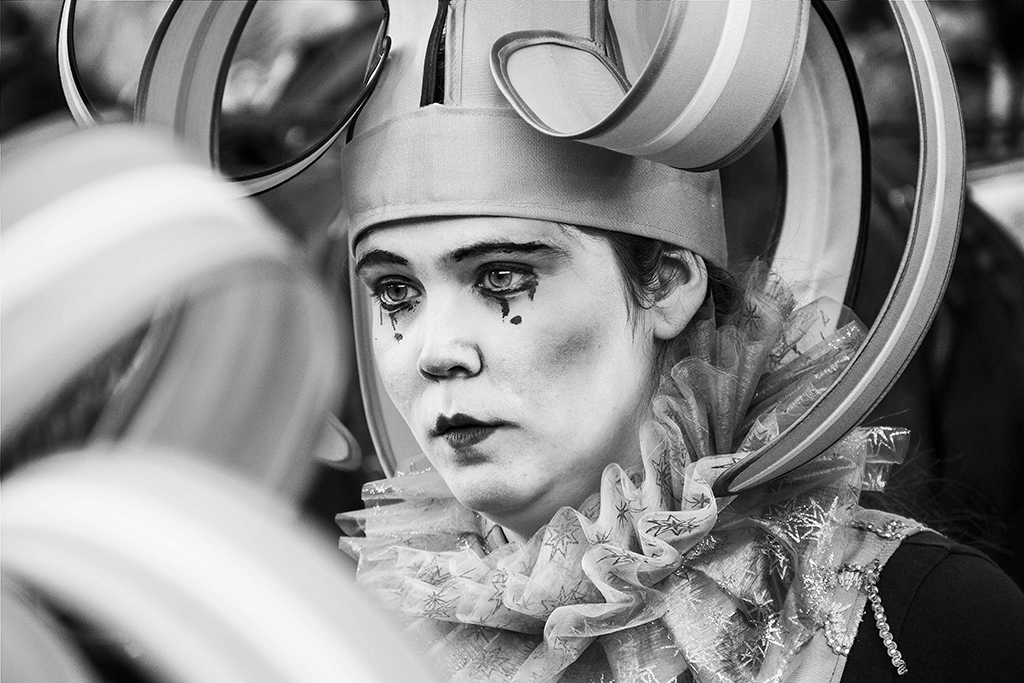
Alma perdida

Melancolía
De vez en cuando, cuando aparco el “modo caza callejera”, me gusta explorar el lado creativo de la fotografía. Para mí, la fotografía creativa es encontrar la manera de plasmar una idea o mi punto de vista sobre un concepto determinado en una fotografía. También es una buena manera de mantener viva la inspiración y encontrar nuevos retos. Cuando, por el motivo que sea, no se tiene la ocasión de salir a descubrir nuevos lugares y gente a la que fotografiar, ¿por qué no crear las fotografías uno mismo? Algunas de mis fotografías están realizadas en casa, en una pequeña habitación a la que yo llamo “mi rincón creativo”. Un flexo de escritorio, un trípode, mi cámara e imaginación es todo lo que necesito para saciar mi sed fotográfica 🙂

Olfato: El perfume
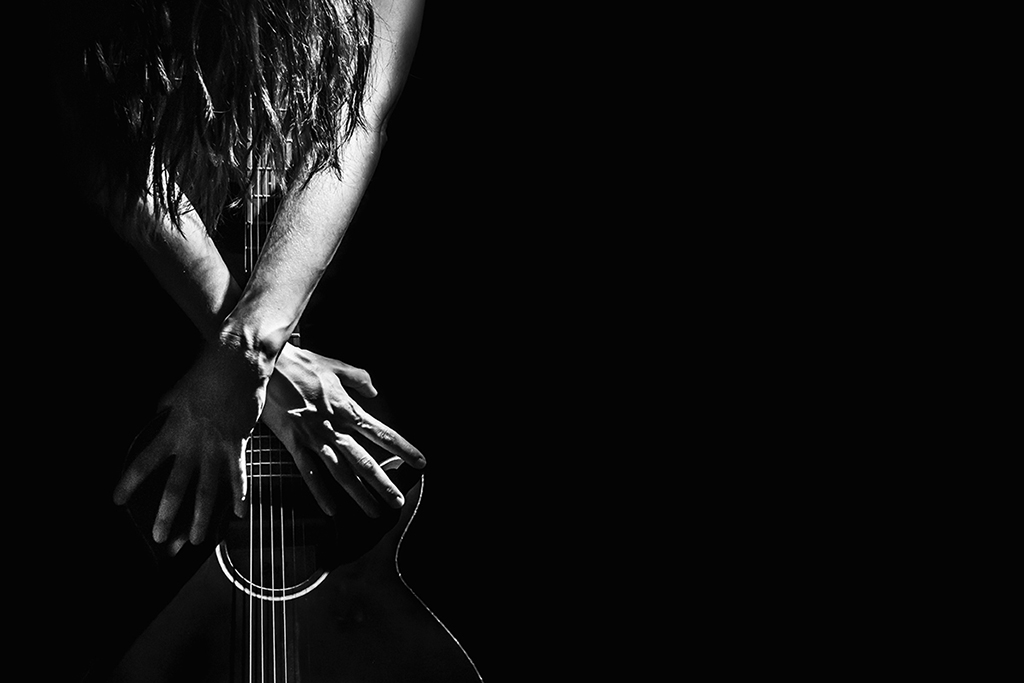
Oído: Rendida a la música
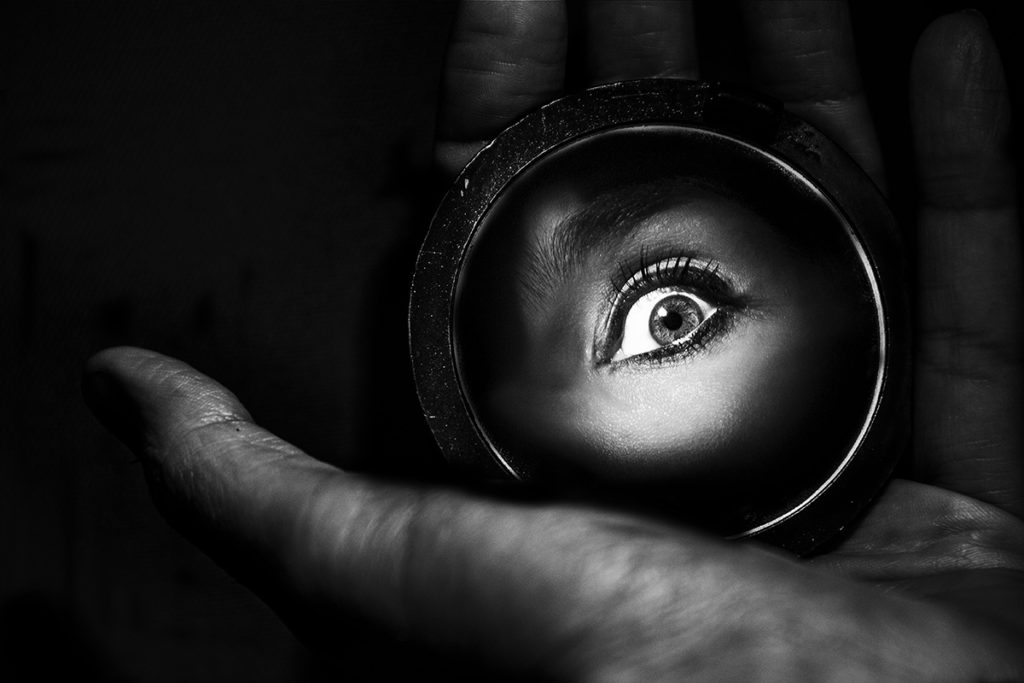
Vista: El secreto
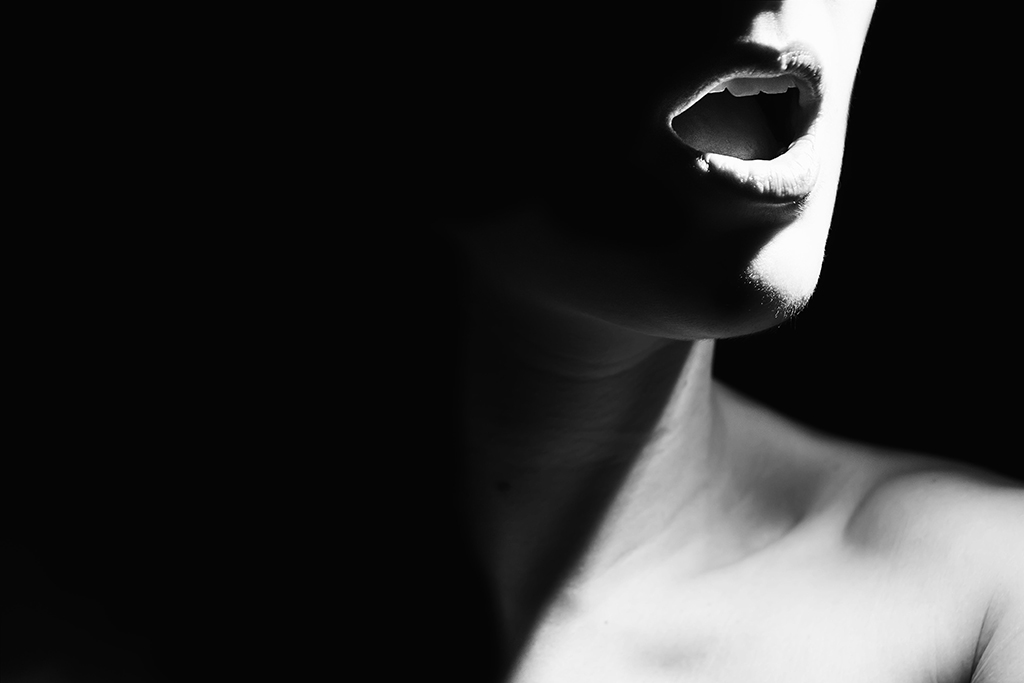
Sin aliento: Entre luz y oscuridad
Definitivamente, la fotografía ha cambiado mi manera de mirar el mundo. Como dice la biografía de mi cuenta de Instagram: “La belleza está en las cosas cotidianas que ves en tu día a día”. Es por esto que me gusta retarme a extraer algo bello de los lugares, gente y/o objetos que me rodean en mi vida diaria. Tratar de encontrar esa belleza en cualquier rincón es un ejercicio romántico que me ha permitido educar mi ojo para la fotografía, moldear mi manera de mirar. Debo admitir que fuera de lo cotidiano, es innegable que la fotografía de viaje ofrece momentos únicos y exóticos para realizar buenas fotografías, así que también encontrareis fotografías de viaje en mi galería:
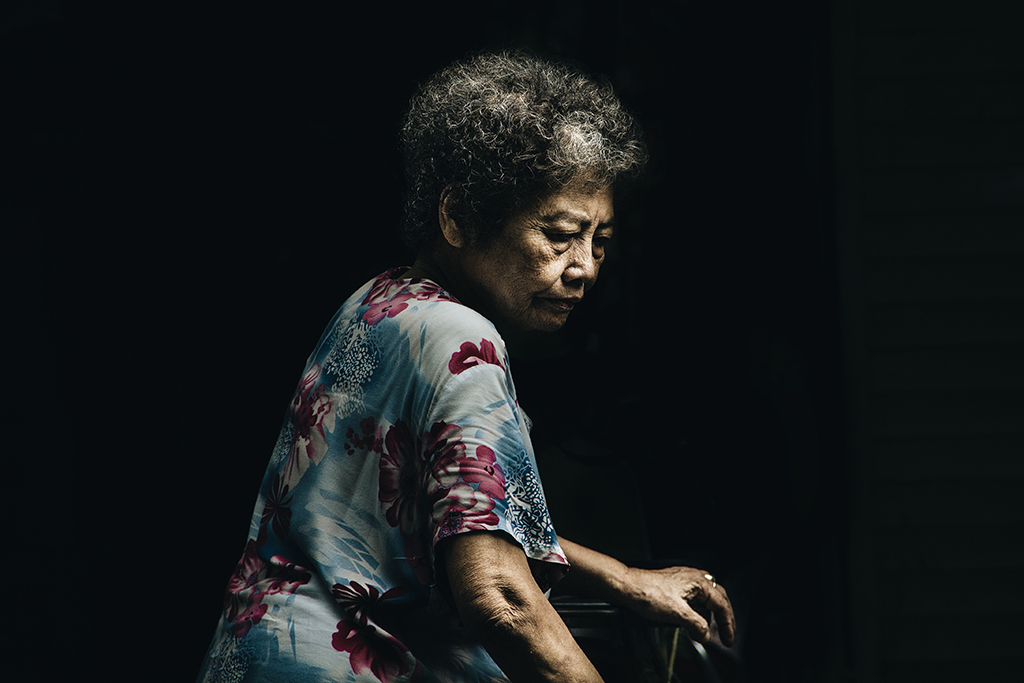
De las sombras

La florista
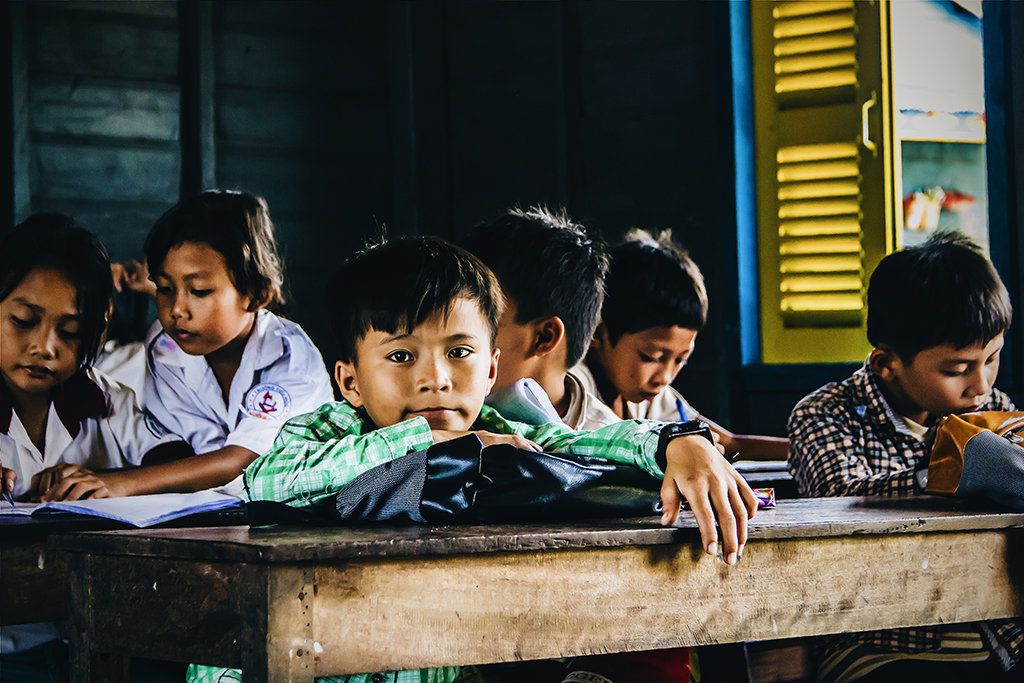
Hora del colegio

Pensamientos
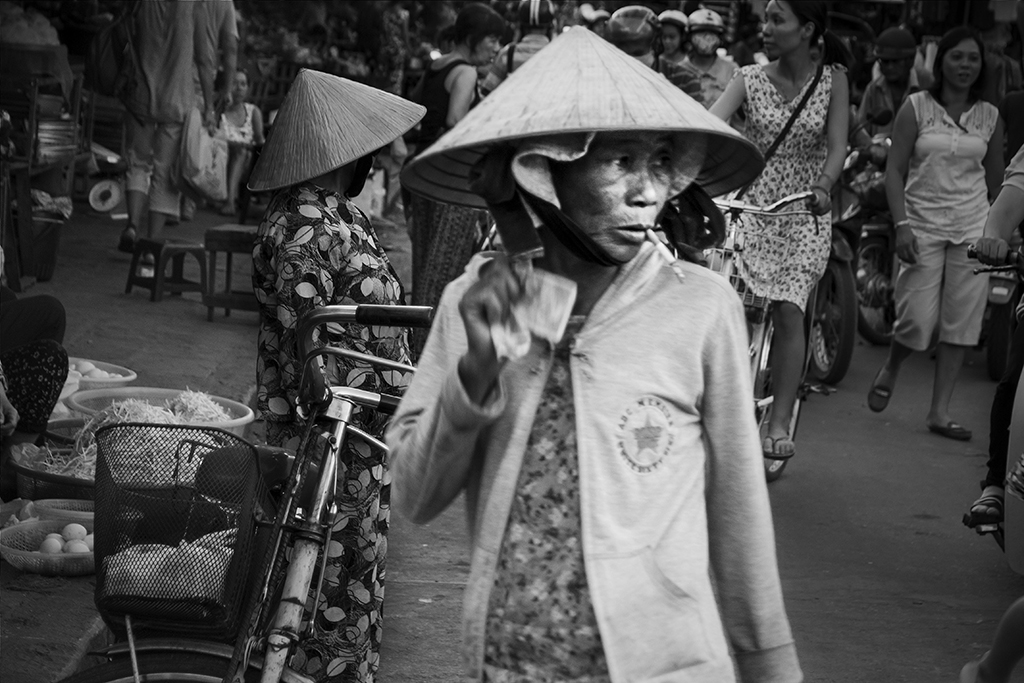
Vida en el mercado
En lo que se refiere a edición, la mayoría de mis fotografías están editadas en blanco y negro. Creo que el blanco y negro ayuda a aislar el sujeto y a centrar el foco en el punto exacto, aunque al final… ¡todo es cuestión de tener una buena luz! Pese a tener una inclinación o debilidad por la fotografía en blanco y negro, intento salir de mi zona de confort publicando también fotografías en color.
Como fotógrafa amateur, todo lo que he aprendido hasta ahora ha sido a base de experimentar. He asistido a diferentes conferencias y charlas sobre fotografía, pero nunca he asistido a cursos específicos. Dentro de mi aún corto recorrido en el mundo de la fotografía, he tenido la ocasión de participar en varias exposiciones colectivas. Si hace unos años alguien me hubiese dicho que hoy estaría exhibiendo mi trabajo, ¡no me lo podría creer! El auto-aprendizaje es algo con lo que disfruto muchísimo y estoy deseando seguir adquiriendo nuevos conocimientos y seguir expresándome a través de la fotografía.
Nagore es una fotógrafa autodidacta y con unas ganas inagotables de aprender cosas nuevas. Del País Vasco pero residente en Barcelona, le gusta capturar la vida callejera de las ciudades que visita y el alma de su gente a través de retratos callejeros. Se re-descubrió a si misma a través de la fotografía hace unos años y desde entonces no ha parado de captar momentos. Enamorada de la fotografía en blanco y negro, le gusta jugar con las luces y las sombras para reforzar el mensaje que quiere transmitir con sus fotografías. Además de la fotografía, le gusta cantar y tocar la guitarra acústica a modo de evasión de su trabajo diario como Ingeniera Informática.
Me encontraréis en:
Instagram | Twitter | 500px
¡Bienvenidos a mi mundo! 🙂
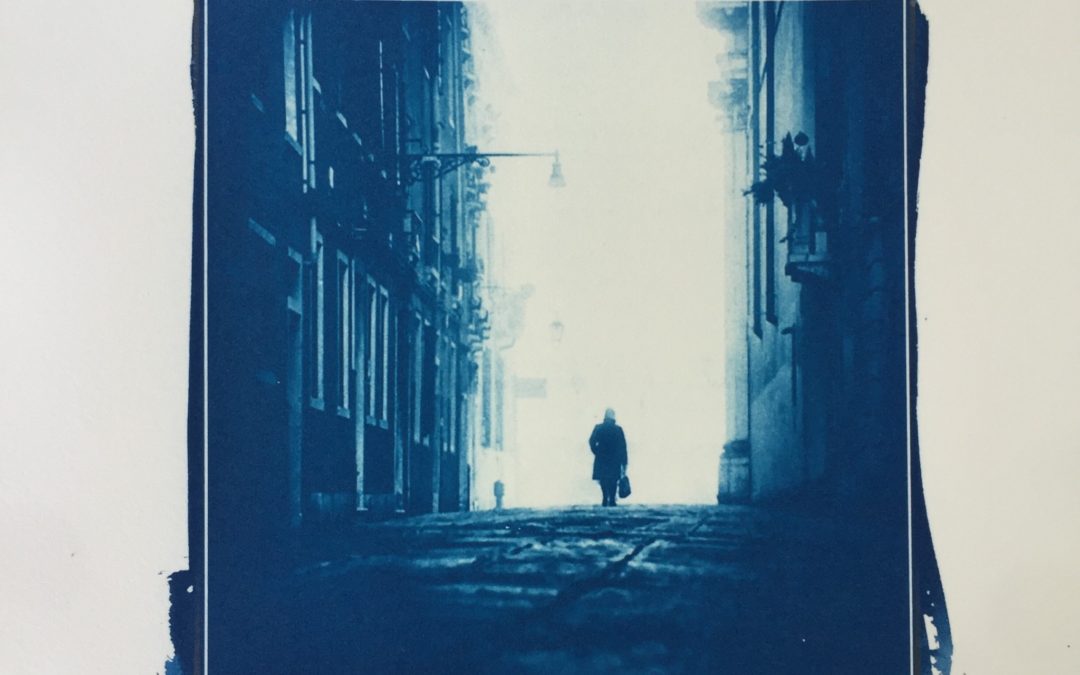
by Grryo Community | Sep 21, 2016 | Community, Stories, Susanne Maude
This article has been compiled by Jeff Kelley (@postaljeff) and Susanne Maude (@masusanne).
If you’ve been Vimpted, you know the feeling of holding a precious print in your hand, of experiencing this kind act from a fellow Instagrammer, a stranger. And if you haven’t been Vimpted yet, you’d sure love to be. Vimpt is a beautiful proof that art connects and that collaboration creates something unique.
The man behind Vimpt is Craig Austin from the UK. Every week Craig chooses nine Instagram images submitted to #vimptfreeprint, turns them into fine art prints in his dark room and sends them to the photographers. He does this all for free.
Not just thumbnails
Vimpt equals Very Important. “The name signals the importance of the images people are submitting and the importance of the print, that we should not forget the role of materiality within the digital.” Craig wants us to look at the images as physical objects and not just as thumbnails on our phones.
The idea for the project came after Craig taught Alternative Processes at the University of Westminster and collaborated with Jonathan Worth on Phonar Nation. Phonar Nation was a free online photography class, open to anyone in the world and run as a part of the Cities of Learning Initiative in the US. Craig produced free salt prints from smartphone pictures for the students to connect them to the historical, cultural and material contexts that are so often removed from the digital world.
The success of Phonar Nation led Craig to drop the same process into Instagram. He started the Vimpt account in November 2015 and has so far sent out 400 free prints. The project is growing fast; people from all over the world have submitted almost 20,000 images to Vimpt’s hastag.
“I have become part of a vast, engaged and creative photographic community that I didn’t know existed! The communities and individuals I’ve met through Vimpt are incredibly knowledgeable, driven, generous and gifted. I’m excited about where the project is going.”
Old school meets new technology
Craig uses historic processes such as Salt Print and Cyanotype, and combines them with digital technology and handmade paper to produce fine art interpretation of chosen images. “I use the title Alternative Processes for what I do as it helps to describe and give a broad context to this hybrid approach. The term itself is a subject of considerable debate, and there are a lot of different opinions about its meaning and what it covers.”
What interests Craig is how modern technology has made the historic processes more accessible. “A love of the physical print produced by these wonderful old processes and an excitement about how digital technology and social media are reinventing the cultural meaning of photography is one of the reasons I started Vimpt.”
What makes a good image
“There are a couple of things I look for when choosing an image”, Craig explains. If the image relies on a particular colour or if the image’s narrative is about colour, it won’t work as a monotone print. “It can become flat.” The same goes with images that are overly complicated or overworked with apps. “What a salt print adds can become a little lost.”
Craig looks for sharpness and details. “If it’s not sharp but looks like it should be sharp, or if the shot is a portrait and the face is in shadows without enough details, then it won’t work well as a monotone print.”
Yet there are exceptions. “Some images do fall outside this rough guide, and I know they will be difficult to print, but I do them anyway as they are such great shots.”
Craig tries to vary the style of chosen images, and he does not usually print images of drawings or paintings.
The Future of Vimpt
Vimpt is a self- funded project and free of charge for photographers. That makes it unique. Craig tells that photographers have requested purchasing prints, and he’s trying to set up a service that could at least supply prints for exhibitions, but Vimpt as such will always continue to give away free prints. Selling prints was never its goal.
However, Craig, who sometimes produces same images twice in order to replace the ones lost in the postal service, admits that Vimpt is approaching a time when he needs to raise funds to be able to keep making and giving away prints for free. He is planning to establish a donation page on the website. “But it’s difficult to know how to ask for money to continue something that is free.”
Craig himself takes mostly pictures of his loved ones. And no, he does not have any personal account other than Vimpt. “I don’t have much time outside Vimpt and my family, and I much prefer collaborating with other people, it’s more inspirational. For me, photography on social media is about conversations, collaborations and sharing information but in a beautiful and unique way.”
Because of Vimpt, Craig spends a lot of time online, and he is a huge fan of digital art. Yet he is an even bigger fan of physical print.
“Seeing Hiroshi Sugimoto’s prints or the work of Stephen Gill or Masao Yamamoto, or even leafing through a great photo book makes far more of an impression on me than seeing work on a screen.”
You can find out more about Vimpt, the photos of the chosen prints and videos by the happy recipients at www.vimpt.com and you can check out Vimpt on Instagram.

by Grryo Community | Aug 31, 2016 | Anne Closuit Eisenhart, Still Life, Stories, You Are Grryo
“I should perhaps make it clear that in speaking of love of the past, what I really mean is love of life, for there is so much more of life in the past than in the present. The present is of necessity but a fleeting moment, even when the fullness of that moment makes it seem eternal. When one loves life, one loves the past, because the past is present insofar as it survives in human memory.”
― Marguerite Yourcenar
I have never had any grandparents other than in the first pages of the family album, right before my parents’ wedding photographs. Among the dated portraits from that gallery, there is one I know better than the others. It is the sepia picture of a young lady wearing a black velvet hat: my grandmother, who passed away when my father was 4 years old. He could only keep memories of her, indistinct as shadows, and never talked about the unfillable void her death had left. On my part, as far as I can remember, I have secretly carried inside me what I was fancying as his pain, certainly mixed with my own anxiety of losing my parents. I have questioned time and time again this photograph without a legend. And the album gets heavier and heavier with each time I put it back on the shelf.
It was my first contact with photography. It taught me, what would be for me, the essence of it. That a photograph is a guardian of memory, that it is the fabric on which one can embroider one’s own story, and yet that it is also a kind of lie, as it tells of a present that no more exists.
I have in me an artistic sensibility that was all along thwarted by ten clumsy fingers. Therefore, I worked to develop my artist’s eye by studying the history of art. I learned to recognize what I liked, as I could not create it. I intuitively integrated many compositional rules. But mainly I understood the importance of light; how light can ennoble everything, even the vulgar.
I photograph essentially still lifes and landscapes. Since the birth of my children, I hunt through flea markets looking for a patrimony I did not receive, but would like to pass on to them. I always bring back the same treasures: mildewed mirrors, bottles with the glass turning opaque, moth-eaten cuddly toys, shattered vases glued back together, old drawers. Simple objects with no particular style, that have survived over the years, bearing the signs that they were useful and that they were loved.

I never know in advance what my next photograph will be. I pick objects, a flower languid in a vase, and I nudge them into a relationship. I make them talk to each other. I place them a certain way and then another. I circle around. I wait for the right light. I try to create a tension or a harmony. I am not looking to establish a symbolic meaning, just a visual emotion that moves me and that maybe will touch somebody else as well.
It is the same thing when I photograph landscapes. I am not interested by the picturesque aspects. Most of the time they are familiar places and I have previously charged them with emotion. Excess details that merely distract are often erased by mist, by night, or by speed when taking pictures in the car. I wander and suddenly something calls me, something I can relate to, something I recognize. This is precisely what I try to capture in my photographs. And if that feeling is not present enough when I develop the pictures, I heighten or diminish the light, I play with contrasts, I add dust or scratch here and there, in order to find back my initial vision.
Surely my photographs speak about another time. A time that is not today. A time when one took one’s time. When one valued the sustainability of things. When the world didn’t feel so big.These are nostalgic photographs. Namely they are bearers of memory. Witnesses at the same time of permanence and of fragility.One does not escape one’s own story.
Anne Closuit Eisenhart is @lesfifoles on Instagram
Photographie et Mémoire – par Anne Closuit Eisenhart
“Quand on parle de l’amour du passé, il faut faire attention, c’est de l’amour de la vie qu’il s’agit; la vie est beaucoup plus au passé qu’au présent. Le présent est un moment trop court et cela même quand sa plénitude le fait paraitre éternel. Quand on aime la vie, on aime le passé parce que c’est le présent tel qu’il a survécu dans la mémoire humaine.” – Marguerite Yourcenar
Je n’ai jamais eu de grand-parents ailleurs que dans la première page de l’album familial, juste avant les photographies du mariage de mes parents. Dans cette galerie de portraits démodés, il en est un que je connais mieux que les autres. C’est l’image sépia d’une jeune femme avec un chapeau en velours noir : ma grand-mère, morte quand mon père avait quatre ans. Il n’en gardait comme mémoire que quelques ombres et ne mentionnait jamais le vide qu’elle avait laissé. Moi, d’aussi loin que je m’en souvienne, j’ai porté secrètement ce que je m’imaginais être sa souffrance avec sans doute aussi la peur de perdre mes parents. Cette photographie sans légende, je l’ai questionnée à maintes reprises. Et à chaque fois que je replaçais l’album sur l’étagère, il pesait un peu plus lourd.

Ce fut mon premier rapport avec la photographie et j’y ai appris l’essentiel. Qu’une photo est gardienne de mémoire, qu’elle est un tissu sur lequel chacun peut broder sa propre histoire et qu’elle ment aussi un peu car elle dit un présent qui n’existe plus.
J’ai en moi une sensibilité artistique que depuis toujours dix doigts malhabiles s’acharnent à contrarier. Alors je me suis faite un oeil en étudiant l’histoire de l’art. J’ai appris à reconnaître ce que j’aimais à défaut de pouvoir le créer. J’ai emmagasiné intuitivement certaines règles de composition. J’ai surtout compris l’importance de la lumière, comment elle peut tout anoblir, même le vulgaire.

Je photographie essentiellement des natures mortes et des paysages. Depuis la naissance de mes enfants, je parcours les brocantes à la recherche d’un patrimoine que je n’ai pas reçu et que je veux leur transmettre. Je rapporte toujours les mêmes trésors : des miroirs piqués, des bouteilles au verre devenant opaque, des peluches mitées, des vases recollés, de vieux tiroirs. Des objets simples, sans style particulier, qui ont survécu aux années et qui portent sur eux des signes qu’ils ont été utiles et qu’ils ont été aimés.
Je ne sais jamais à l’avance quelle photo je vais prendre. Je choisis un objet, une fleur qui traîne dans un vase et j’instaure entre eux une relation. Je les fait parler. Je les place, les déplace. Je tourne autour. J’attends la bonne lumière. J’essaie de créer une tension ou un accord. Je ne cherche pas à donner une dimension symbolique, juste à créer une émotion visuelle qui me touche et qui va peut-être toucher quelqu’un d’autre.

C’est la même chose quand je photographie des paysages. Le pittoresque ne m’intéresse pas. La plupart du temps ce sont des lieux qui me sont familiers et que j’ai déjà chargés d’émotions. Le surplus de détails qui distraient est souvent gommé par le brouillard ou alors par la vitesse quand je prends des photos en roulant. Je me promène et soudain il y a quelque chose qui m’appelle et fait écho en moi, quelque chose que je reconnais. Et c’est cela que j’essaie de photographier. Ensuite lors du développement, si ce sentiment initial n’est pas assez présent, je pousse certaines lumières, je joue avec les contrastes, j’ajoute quelques taches pour accentuer ma vision initiale.
Sans doute mes photographies parlent-elles d’un autre temps. D’un temps qui n’est pas aujourd’hui. D’un temps, où l’on prenait son temps. Quand on valorisait la durabilité des choses. Quand le monde n’était pas si grand.
Ce sont des photos nostalgiques. C’est à dire porteuses de mémoire. Témoins à la fois de permanence et de vulnérabilité.
On n’échappe pas à sa propre histoire.























































































































































